There is no way I could fit our five day trek to Machu Picchu into one post, so I’m breaking it up by days.
I’ll start by saying that Machu Picchu was the entire reason why we went to Peru, but having booked flights in July finally, we were disappointed to learn that the actual “official Inca Trail” permits were already sold out for November. At first I was sad because the Inca Trail was all I’d dreamed about, but we hadn’t realized they have only 200 permits a day that go like hot cakes.
We decided to book a five day guided trekking tour with Alpaca Expeditions and now, knowing Kay and myself and asking our guide about how it is on the Inca Trail compared to ours, I’m confident that we enjoyed our often completely private trek from Salkantay to Machu Picchu way more than we would have enjoyed the crowded Inca Trail.
As the first pickup in our group of 11 hikers, Kay and I woke up at 4am on November 1 for a 4:10am pickup. After picking up the other 9 hikers, the van drove 3.5 hours to Soraypampa where we got out for breakfast before the first part of our trek.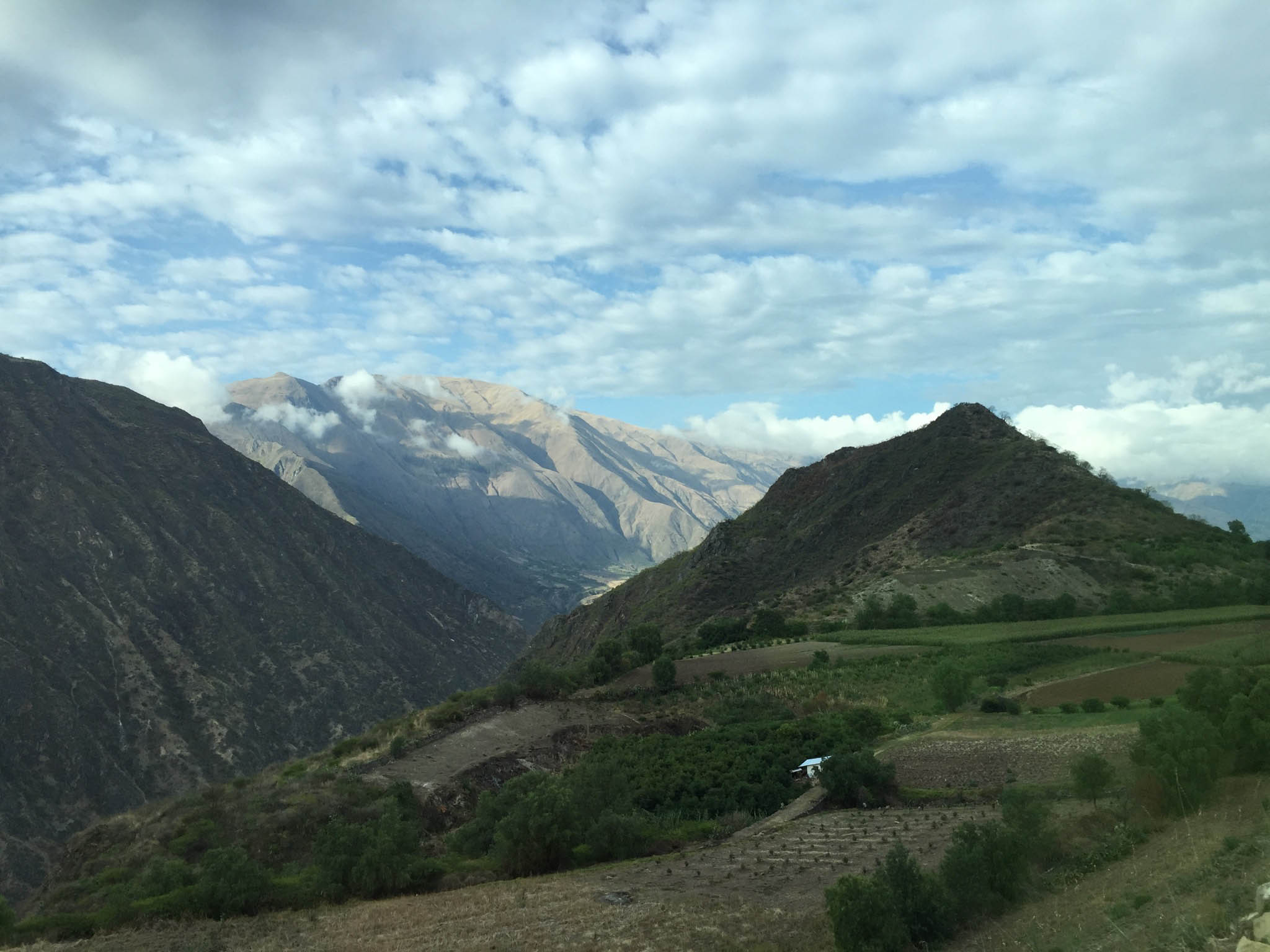 I’m not gonna lie folks, I was struggling with some pretty awful lady days, having nearly blacked out a couple times the day before and suffered stomach problems. The thought of trekking for five days without bathrooms was kind of terrifying. Also, considering the bad timing of my blessing of womanhood, I had dragged Kay all around Cusco the night before stocking up on pads and tampons to brace for the call of nature in the wild.
I’m not gonna lie folks, I was struggling with some pretty awful lady days, having nearly blacked out a couple times the day before and suffered stomach problems. The thought of trekking for five days without bathrooms was kind of terrifying. Also, considering the bad timing of my blessing of womanhood, I had dragged Kay all around Cusco the night before stocking up on pads and tampons to brace for the call of nature in the wild.
So, that said, I was feeling a little “ehh” the first day, especially when it started drizzling after breakfast. I’m not nearly as happy-go-lucky as Kay is when it comes to weather and the idea of trekking for fives days in the rain with my period sounded pretty horrible, to be honest.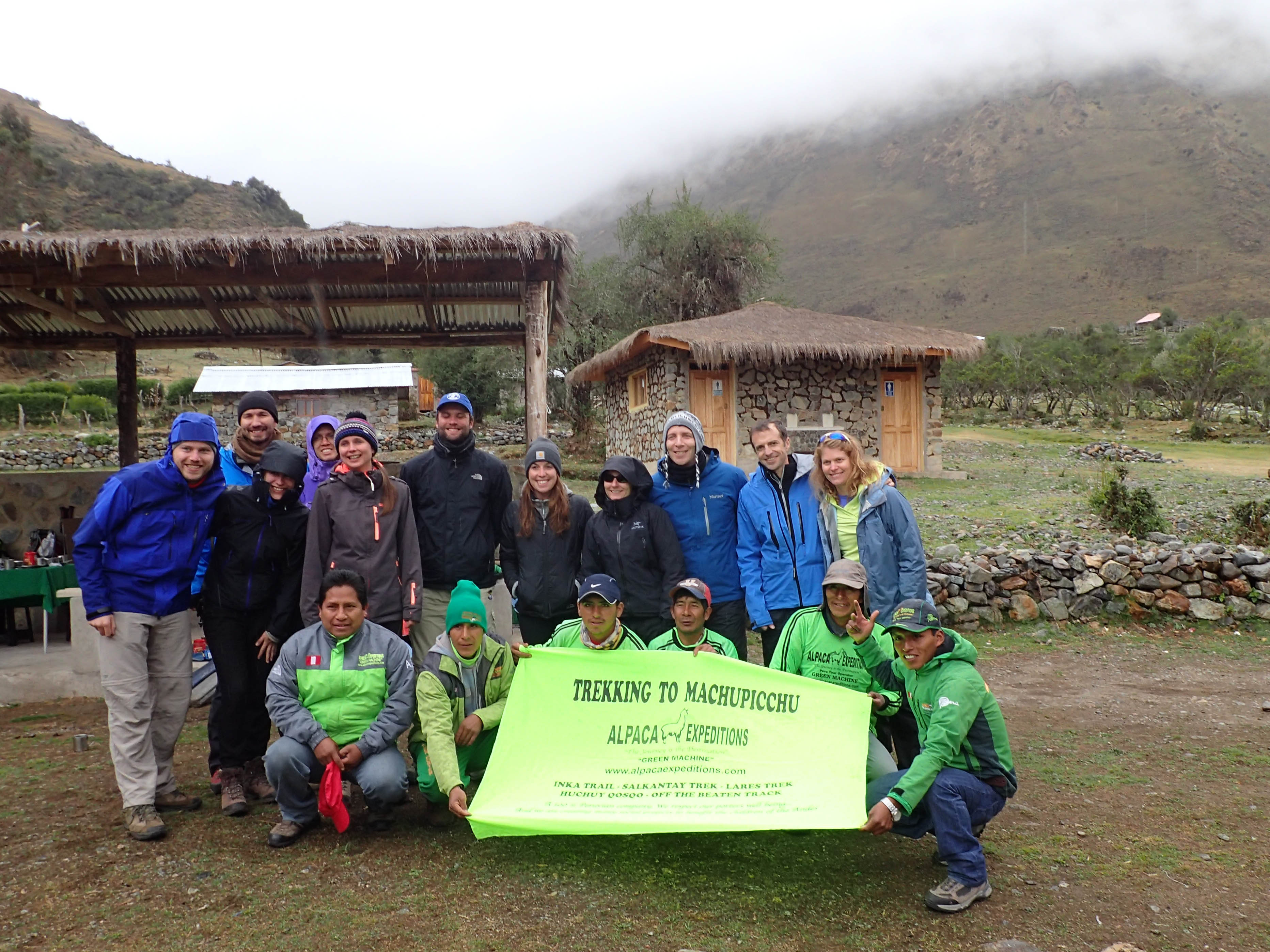 I braced myself that this was going to be awesome somehow, or that I would survive at the very least. I was pretty low mentally, that this was how I was experiencing my way to Machu Picchu: period from Hell, freezing rain, stomach issues.
I braced myself that this was going to be awesome somehow, or that I would survive at the very least. I was pretty low mentally, that this was how I was experiencing my way to Machu Picchu: period from Hell, freezing rain, stomach issues.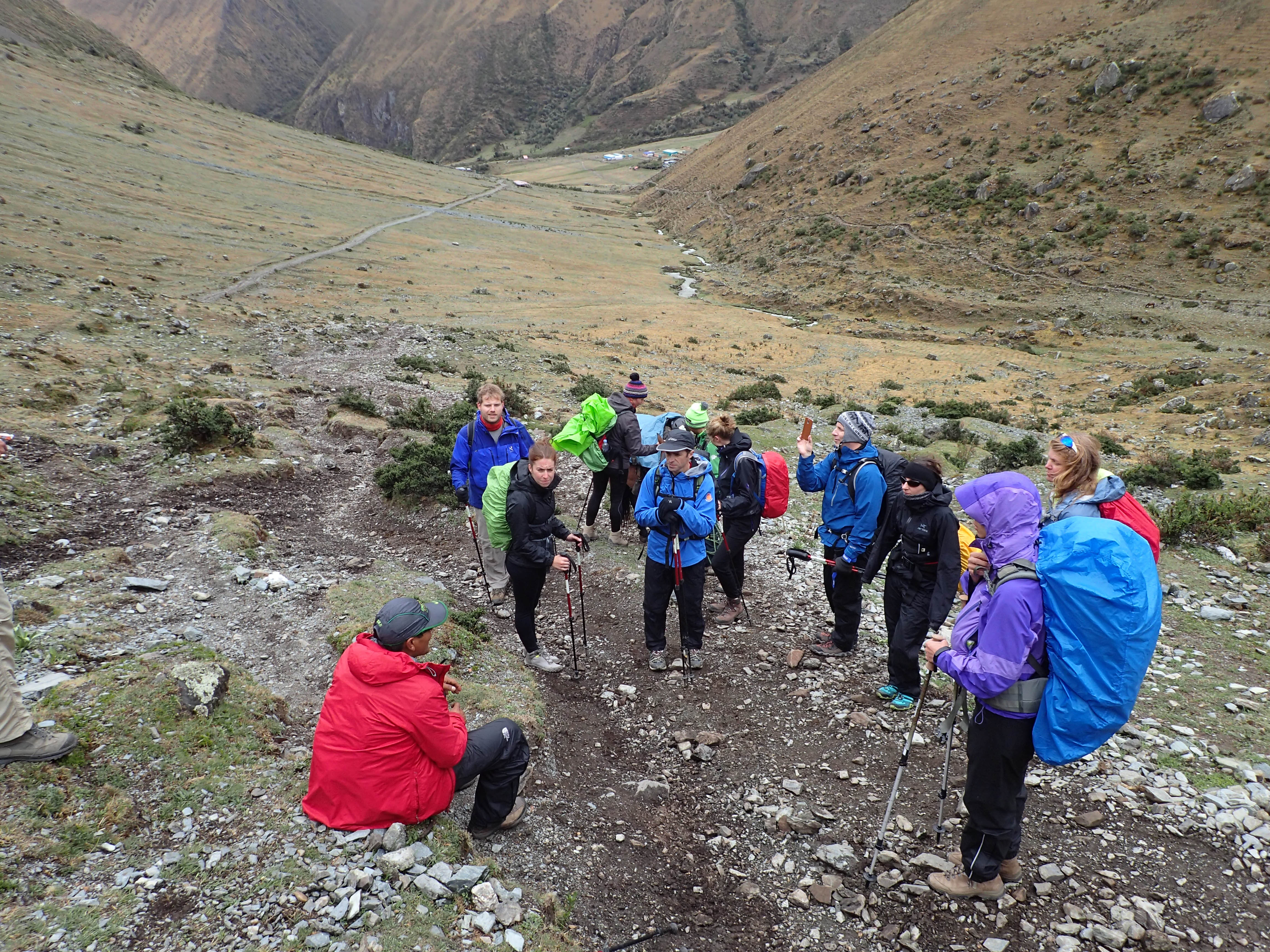 Below you can see that Kay and I came prepared. I had the rain gear, including rain pants and Gortex boots, although I really wish I had bought waterproof warm gloves. I didn’t want to get mine soaked, but it was pretty cold. And I was in quite a lot of lady pain. Gah. You can see it on my face!
Below you can see that Kay and I came prepared. I had the rain gear, including rain pants and Gortex boots, although I really wish I had bought waterproof warm gloves. I didn’t want to get mine soaked, but it was pretty cold. And I was in quite a lot of lady pain. Gah. You can see it on my face!
Around this time, Kay asked me how I was doing and I replied cheerfully that it was 10am and I’d peed on my hands twice, so I’m doing fantastic. Positivity folks!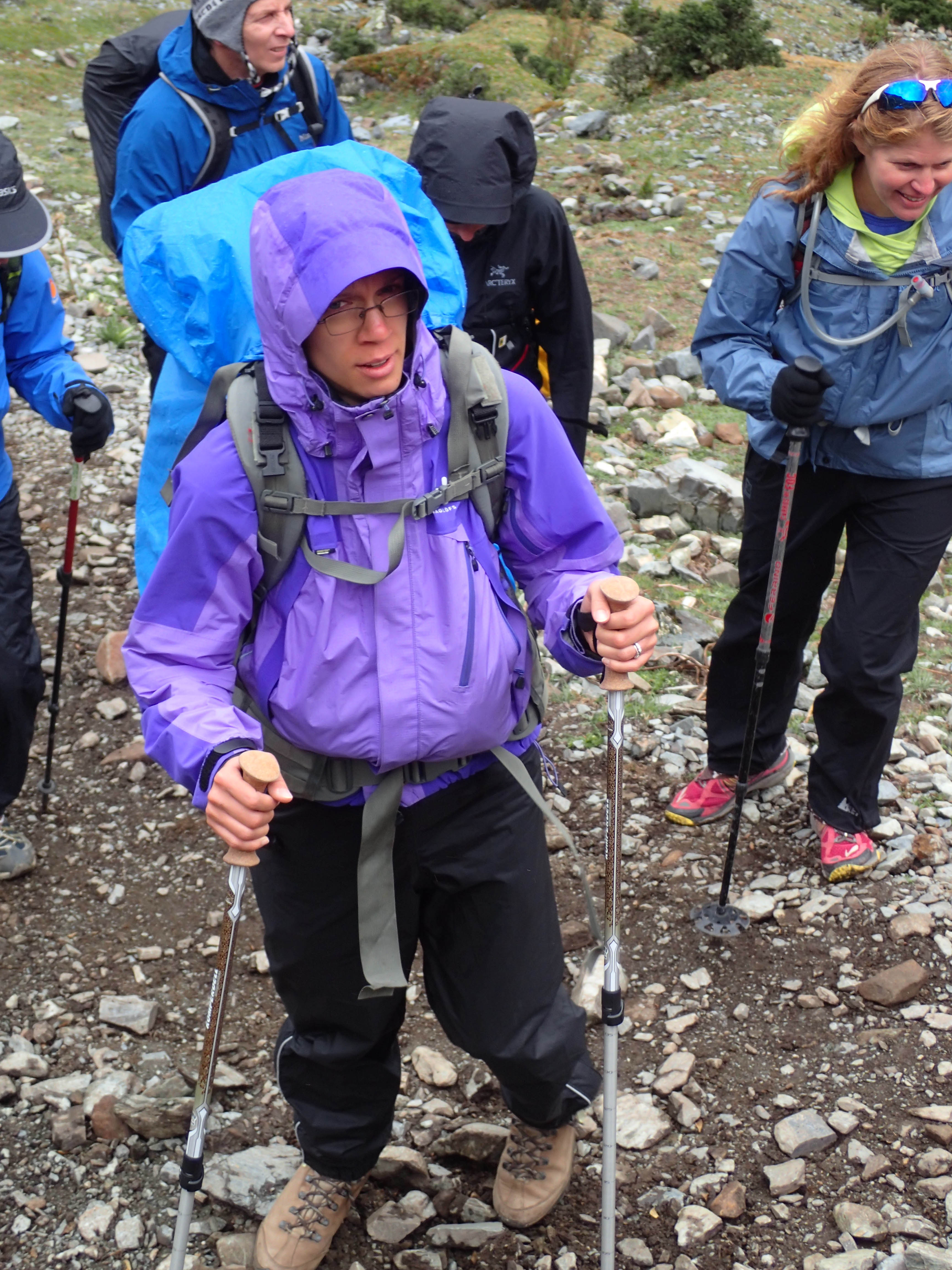 The guides were pretty easy going and we were only hiking for an hour or so from Soraypampa before we made our first stop at Soyrococha to talk about the area and take a couple group photos.
The guides were pretty easy going and we were only hiking for an hour or so from Soraypampa before we made our first stop at Soyrococha to talk about the area and take a couple group photos.  As we walked closer Salkantay pass, the weather started opening up a bit and you could begin to see the shadow of something great beyond.
As we walked closer Salkantay pass, the weather started opening up a bit and you could begin to see the shadow of something great beyond. Kay was pretty excited by what we could see and so was I. We hoped it would open up even more!
Kay was pretty excited by what we could see and so was I. We hoped it would open up even more!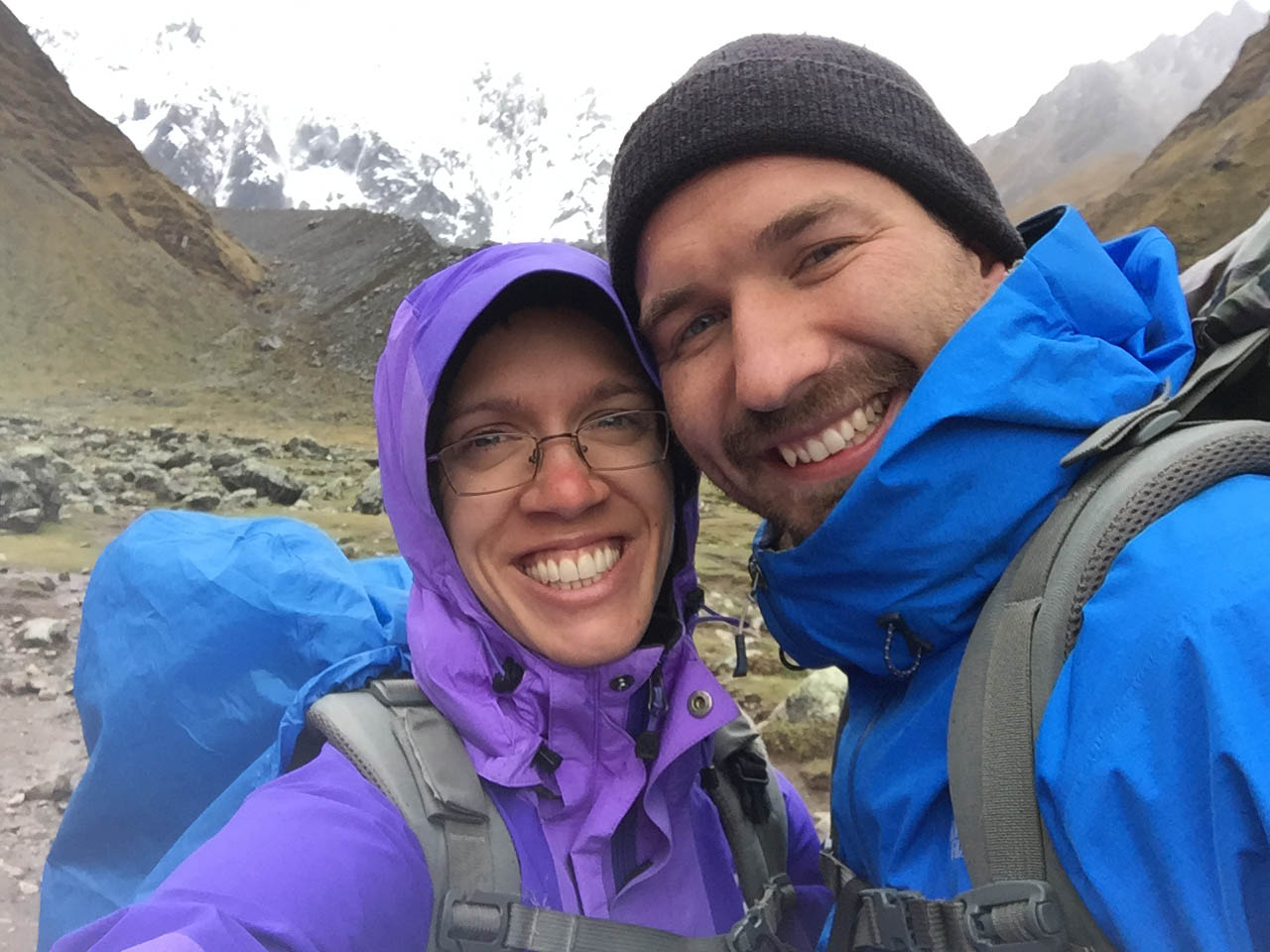 As the minutes passed, the weather started opening up more and more and Kay was beside himself with excitement.
As the minutes passed, the weather started opening up more and more and Kay was beside himself with excitement. Even I with my sour disposition was thinking this trail will be alright. “I will make it!” I thought.
Even I with my sour disposition was thinking this trail will be alright. “I will make it!” I thought.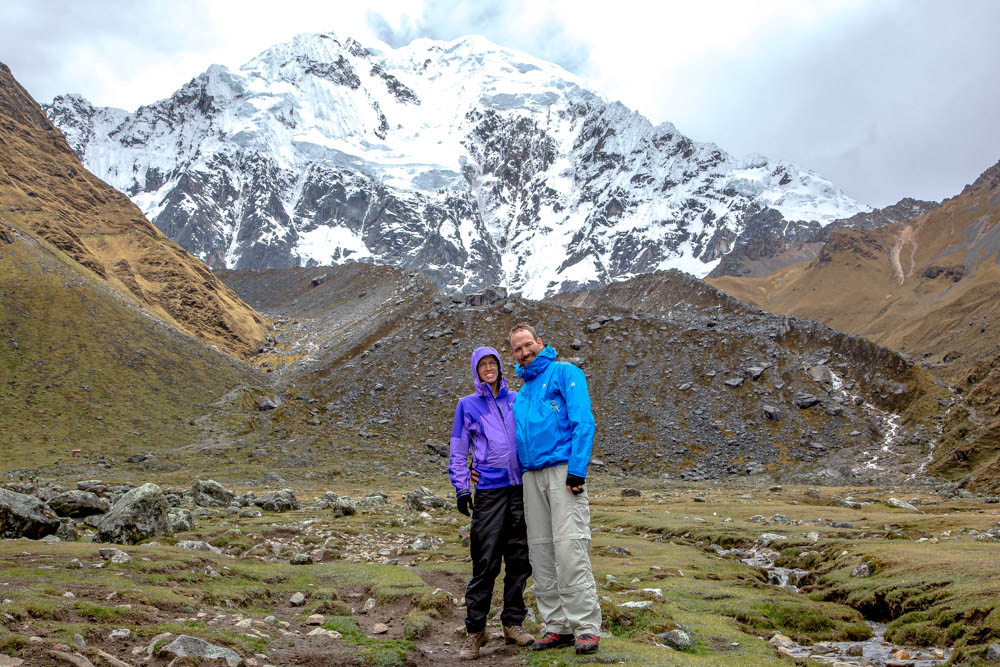 I took several more pictures before we started the hour hike from Soyrococha to Salkantay Pass.
I took several more pictures before we started the hour hike from Soyrococha to Salkantay Pass.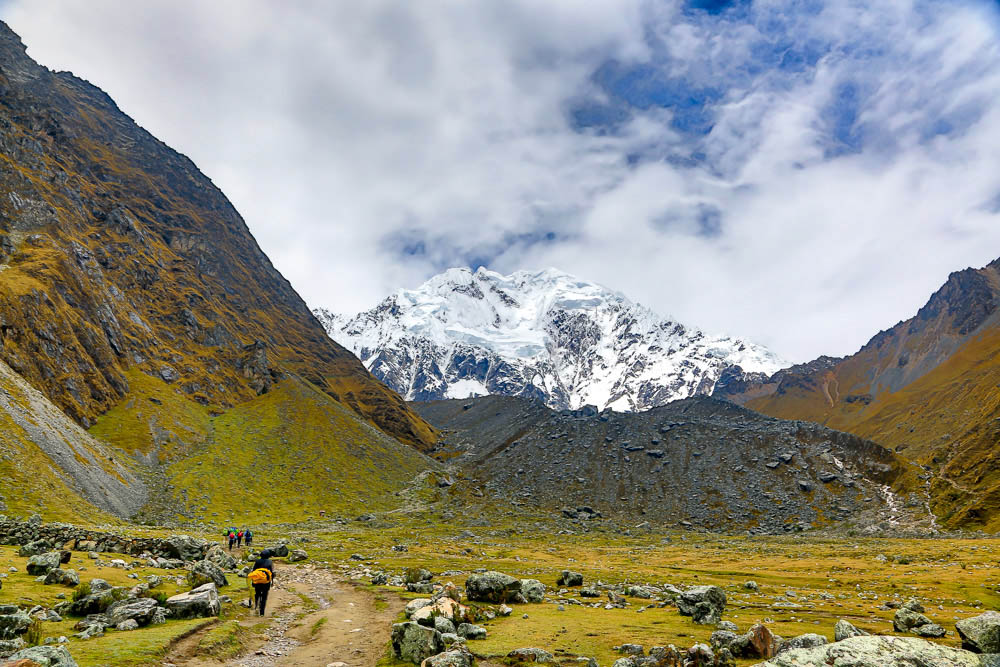

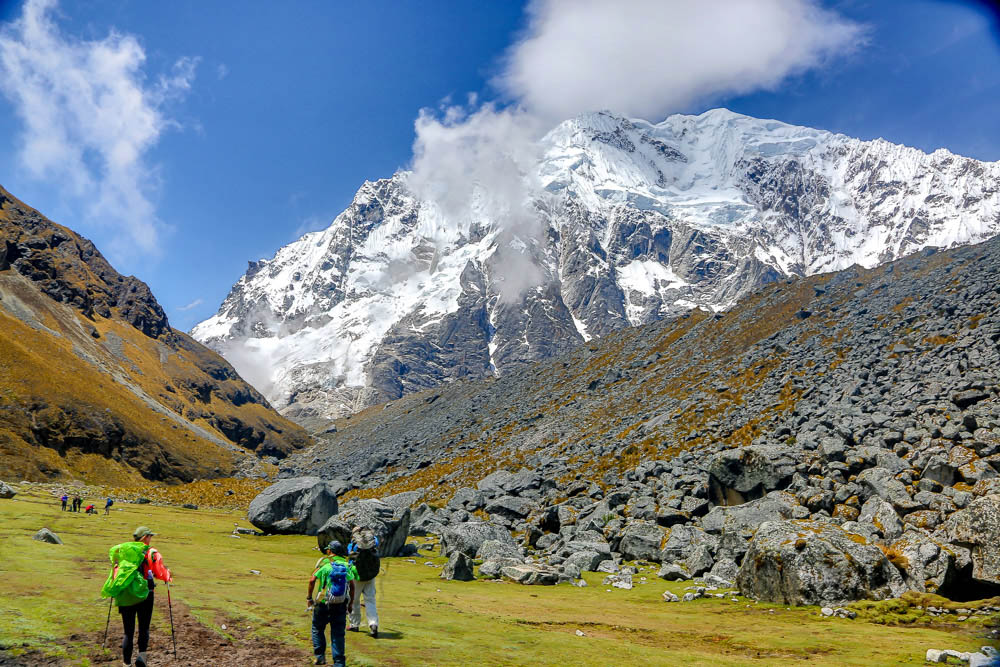 Bonus part of guides are that they can take photos of you, even if you don’t necessarily want photos of yourself. 😉 I had burned my nose in Cusco and the whole thing was peeling for the second time in less than a week. It was not pretty, but who needs pretty on a trail with all this nature taking the show?
Bonus part of guides are that they can take photos of you, even if you don’t necessarily want photos of yourself. 😉 I had burned my nose in Cusco and the whole thing was peeling for the second time in less than a week. It was not pretty, but who needs pretty on a trail with all this nature taking the show?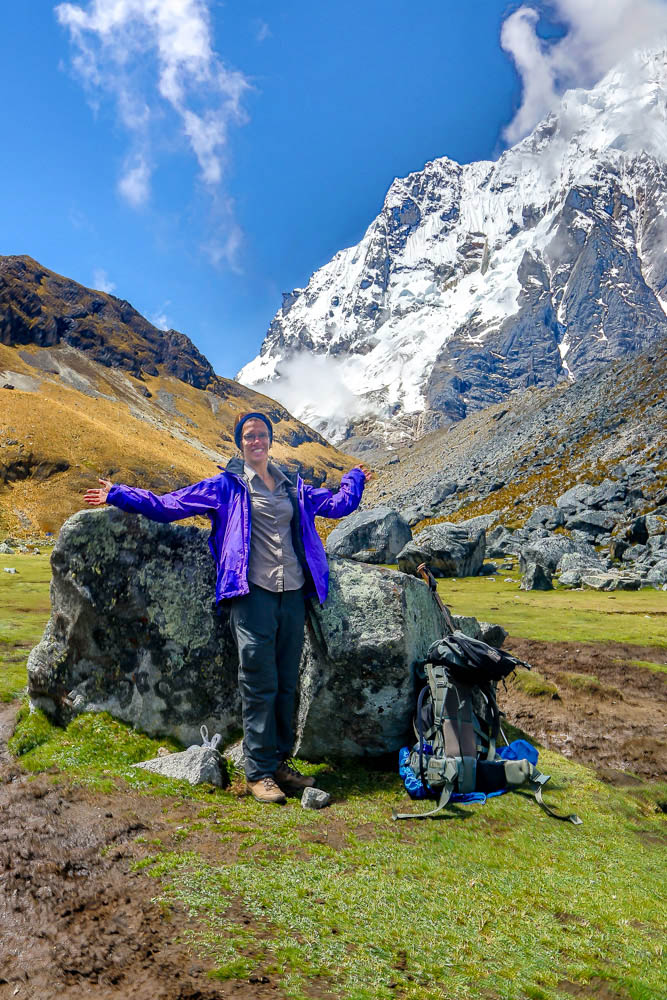 The next part of the hike to the pass was the hardest part of the entire trek. We were hiking up to 4600m, even higher than in Puno, and the guides were readily anticipating altitude sickness from us.
The next part of the hike to the pass was the hardest part of the entire trek. We were hiking up to 4600m, even higher than in Puno, and the guides were readily anticipating altitude sickness from us.
I have to say, at Alpaca Expeditions, they take altitude sickness very seriously. I am pretty slow going up in general, plus taking photos slowed me down, and I noticed that the guide trailing at the end asked me quite frequently, “How’re you doing sister?” At first, I mistook this for him being concerned that I was falling behind the group. I kept replying, “I’m fine!” because although my lungs were protesting from being up so high and going upward, I knew my little engine could do it if I went at my own pace. Left right, left right, left right. Up, up, up.
At first, I mistook this for him being concerned that I was falling behind the group. I kept replying, “I’m fine!” because although my lungs were protesting from being up so high and going upward, I knew my little engine could do it if I went at my own pace. Left right, left right, left right. Up, up, up.
I noticed him asking others, “How’re you doing brother?” and later at dinner in the evening, I realized that the guides had been meticulously checking in on us to make sure we weren’t experiencing any of the life-threatening symptoms of altitude sickness that can lead to death.
Our guide told us the sobering story of one couple where the woman felt sick and couldn’t go on on her own, so the guide mistakenly put her on a donkey to go up the rest of the way. He didn’t realize that she was experiencing symptoms of pulmonary and cerebral edema until the middle of the night when her boyfriend woke the guide frantically for help.
There is no cell signal past the Salkantay pass, so one of the porters ran for hours back up and down the pass until he reached signal on his phone. They called in a helicopter from Cusco to fly the woman out, but when it finally reached the camp site, she had been dead for several hours. Her boyfriend had been planning to propose to her at the end of the trek at Machu Picchu, which might have been part of his and the guide’s reason to push her to keep going, but it had awful, heartbreaking consequences. Mountains are beautiful and breathtaking to behold, but you need a certain respect for the harsh and unpredictable conditions they hold. While altitude sickness only affected a few of our group with headaches, it’s extremely important to take it seriously.
Mountains are beautiful and breathtaking to behold, but you need a certain respect for the harsh and unpredictable conditions they hold. While altitude sickness only affected a few of our group with headaches, it’s extremely important to take it seriously.
Some of our group knew that don’t fare well with it, so they took anti-altitude sickness medication beforehand, with the only downside being very increased urination, which is always fun without bathrooms around. 😉 At this point, Kay and I were so smiley and happy. We agreed that what we saw in the photos below just made the entire tour worth it, no matter what happens next.
At this point, Kay and I were so smiley and happy. We agreed that what we saw in the photos below just made the entire tour worth it, no matter what happens next. 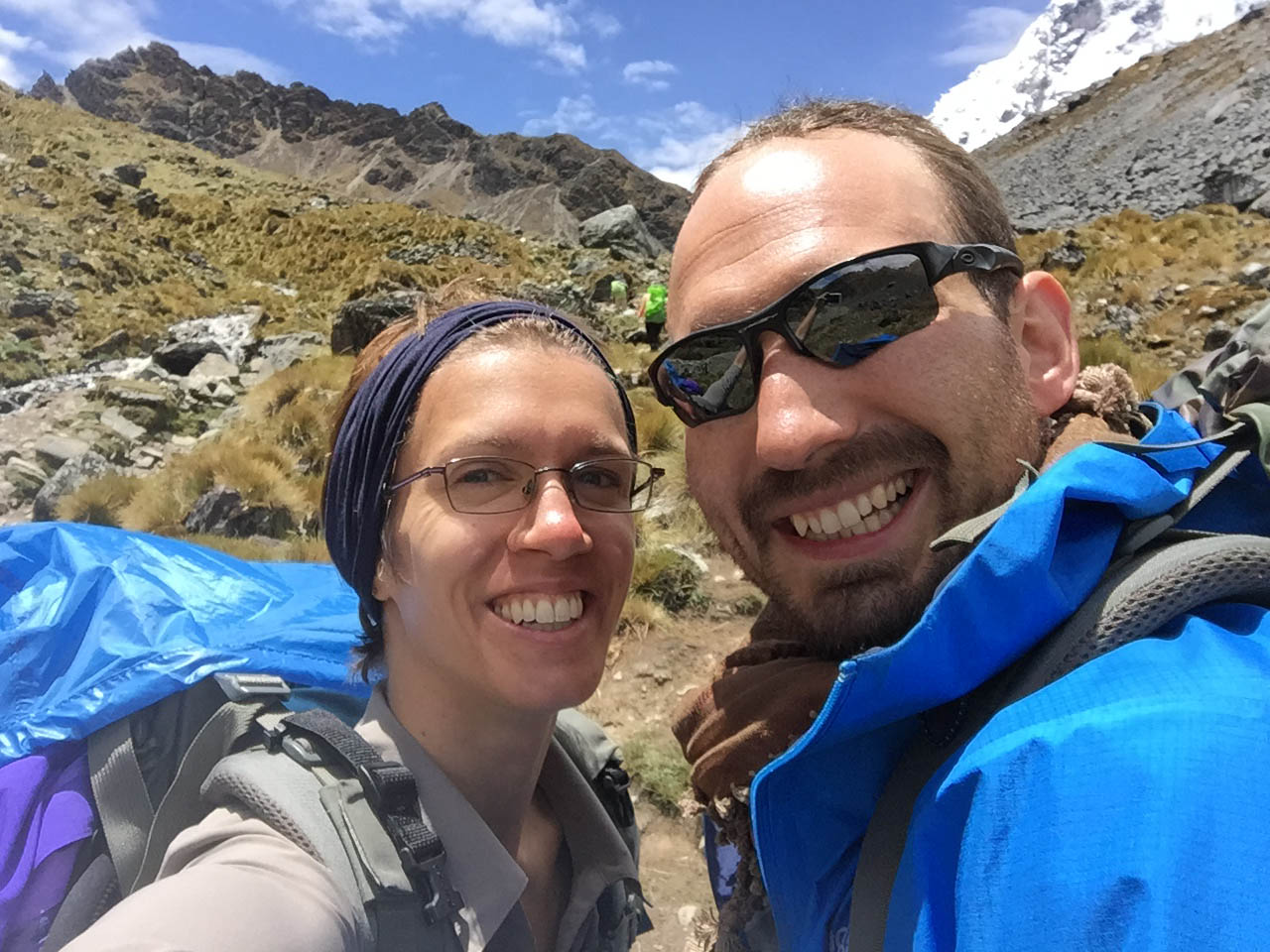 Our guide Valentine told us that often folks pass by here and the mountain is completely covered, so they just have to show pictures back at the tour center of how it looks.
Our guide Valentine told us that often folks pass by here and the mountain is completely covered, so they just have to show pictures back at the tour center of how it looks.
We were very lucky!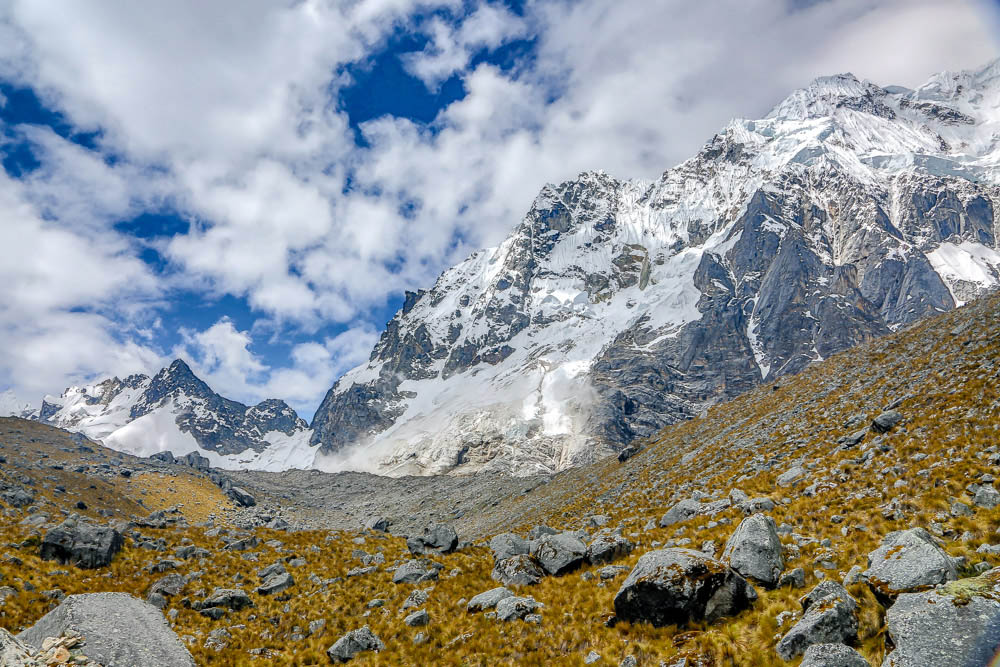
 Overjoyed!
Overjoyed! This view is not to be seen from the Inca Trail and I’m SO happy we got to take this in. It was one of the best parts of the trip.
This view is not to be seen from the Inca Trail and I’m SO happy we got to take this in. It was one of the best parts of the trip.

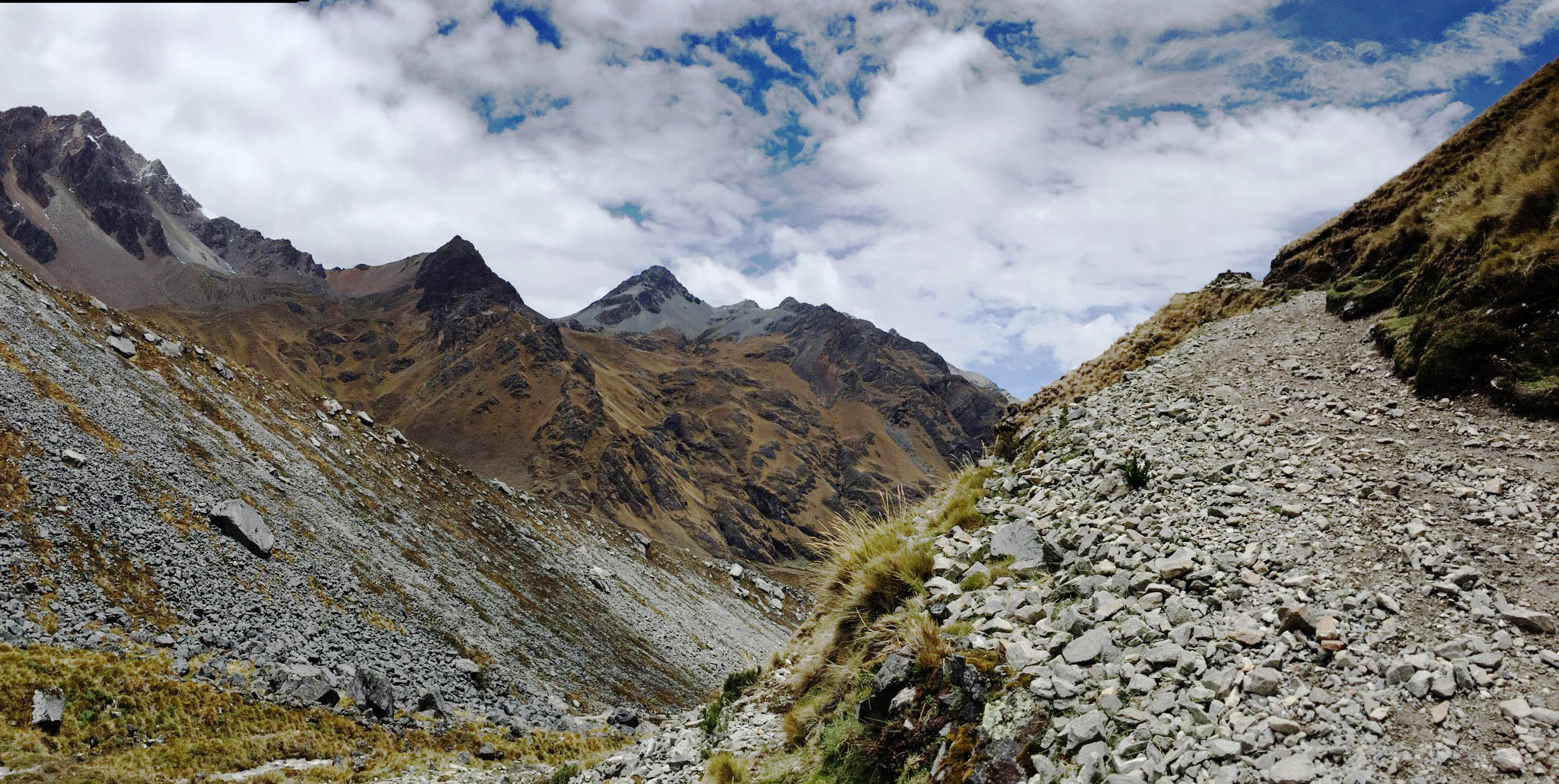
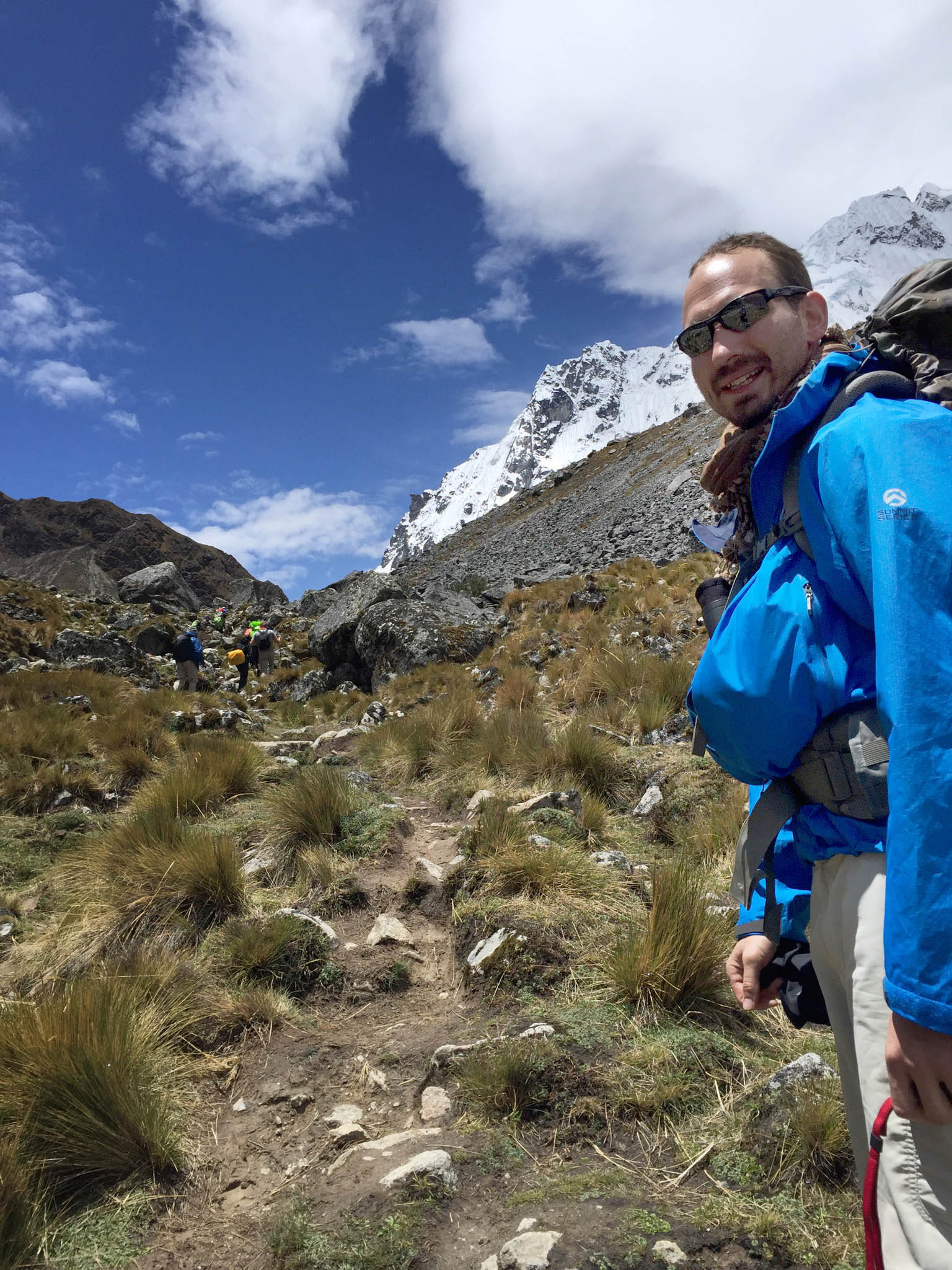
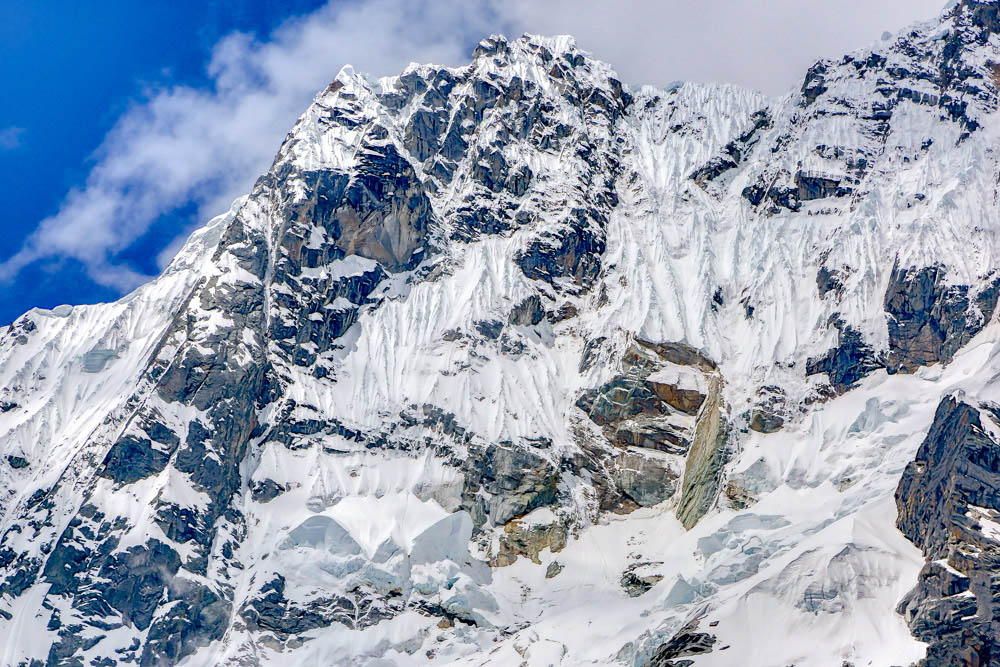

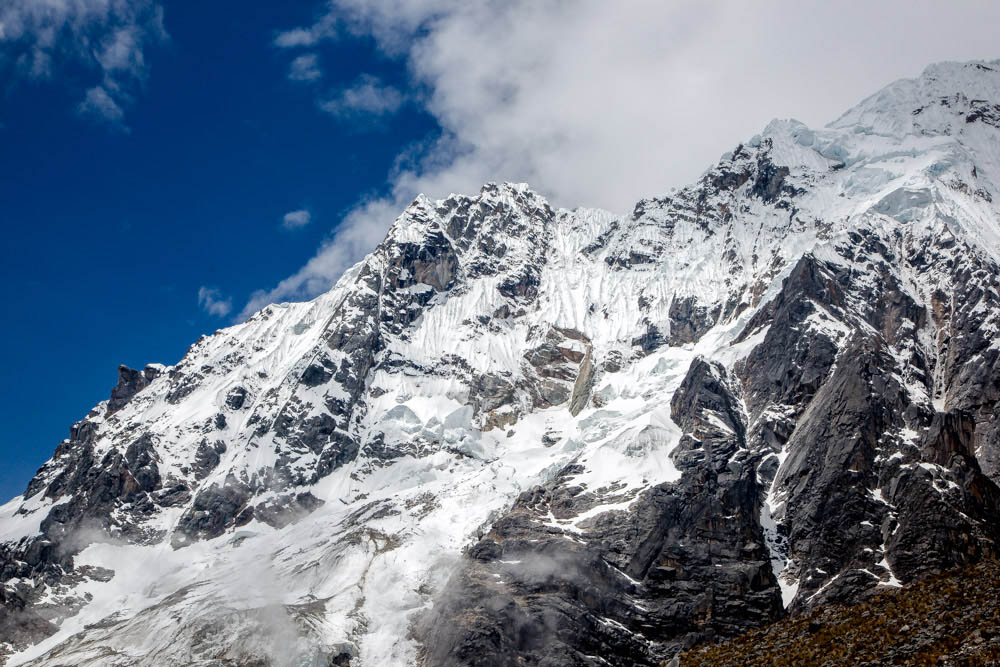
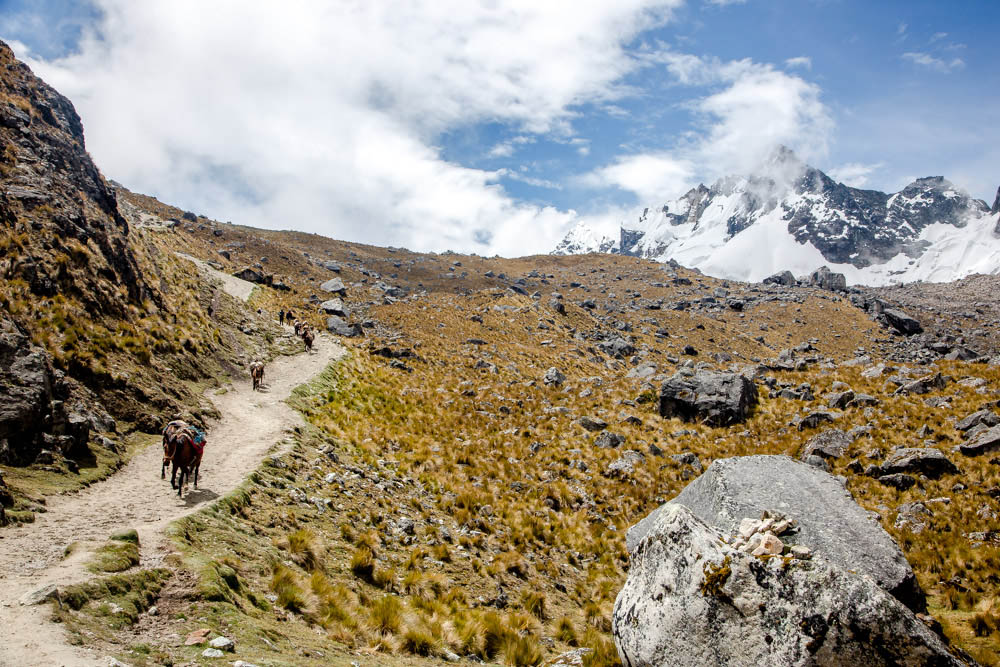 Here you can see what the donkeys and porters for the group looked like passing us on the trek. These weren’t the ones for our group, but it’s a similar view of how they got our things up the mountain.
Here you can see what the donkeys and porters for the group looked like passing us on the trek. These weren’t the ones for our group, but it’s a similar view of how they got our things up the mountain.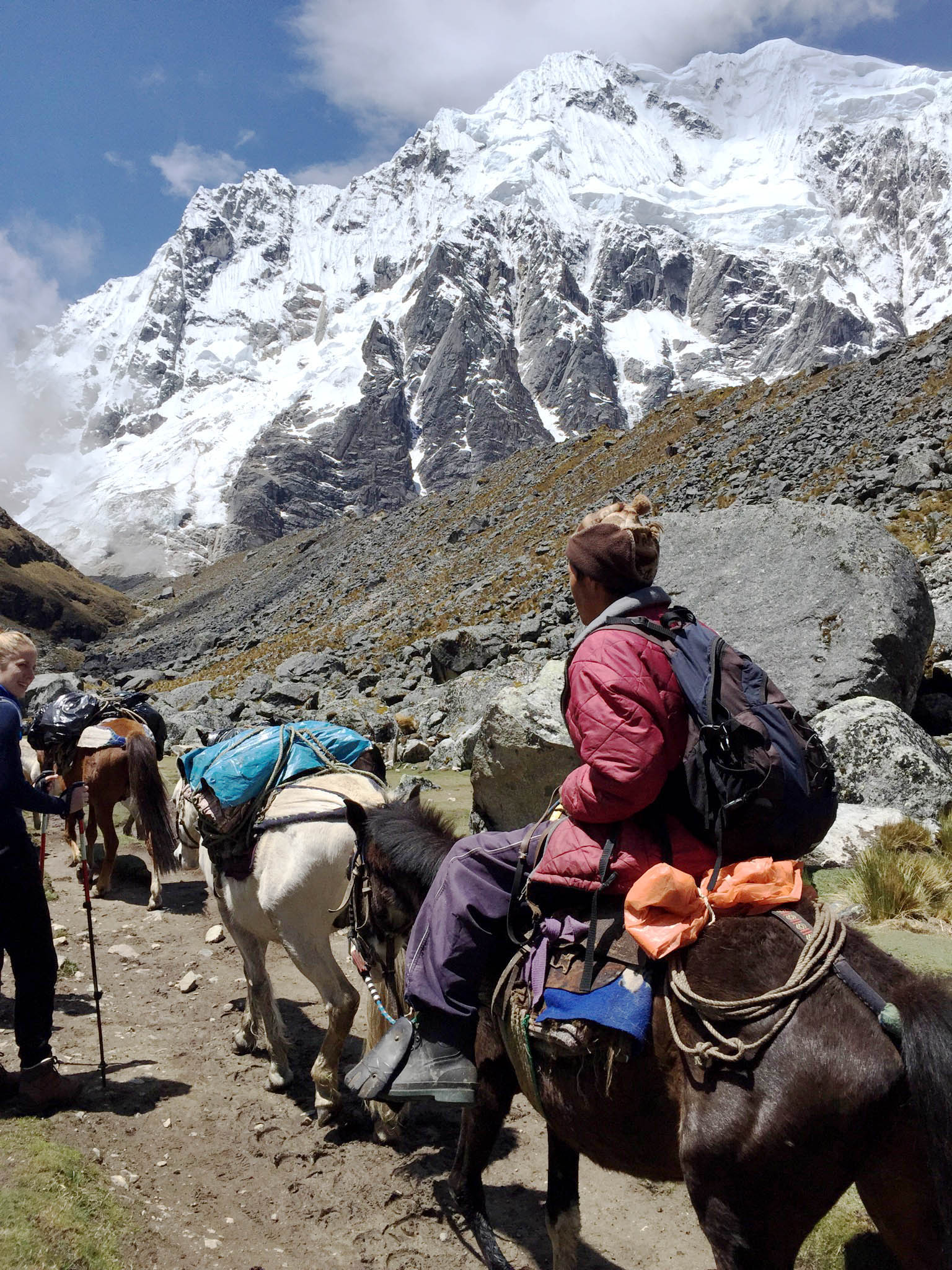 Alpaca Expeditions gives you a duffel bag to put things like your sleeping bag and things you will only need at night. Everything else you carry in your day pack. Kay’s and my daypack both looked ridiculously oversized compared to everyone else’s, but the extra size would come in handy a little later on the trail.
Alpaca Expeditions gives you a duffel bag to put things like your sleeping bag and things you will only need at night. Everything else you carry in your day pack. Kay’s and my daypack both looked ridiculously oversized compared to everyone else’s, but the extra size would come in handy a little later on the trail.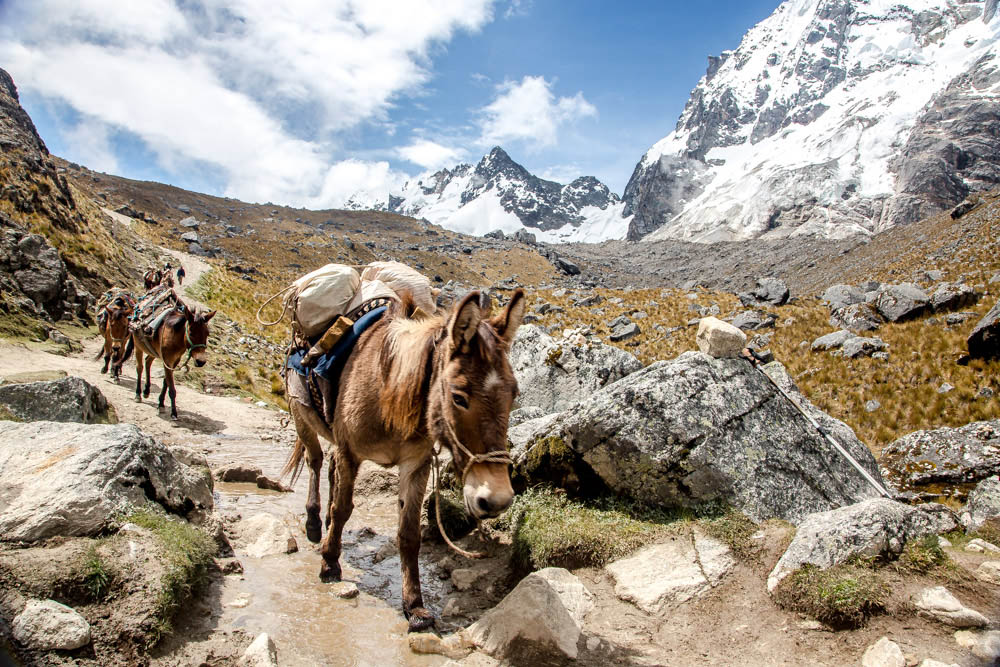
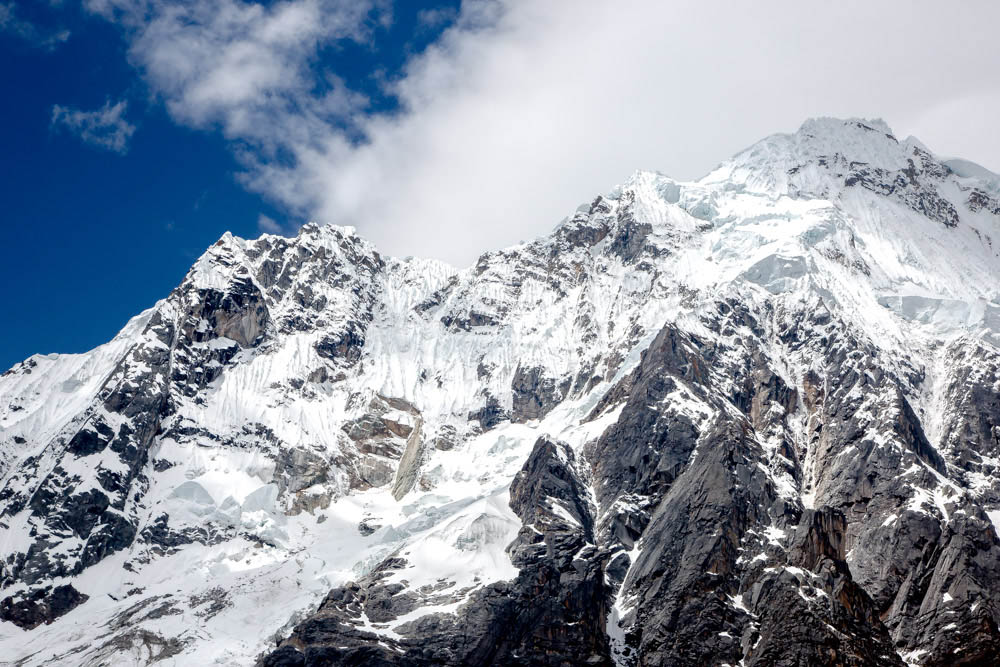 I could stare at this mountain for days.
I could stare at this mountain for days.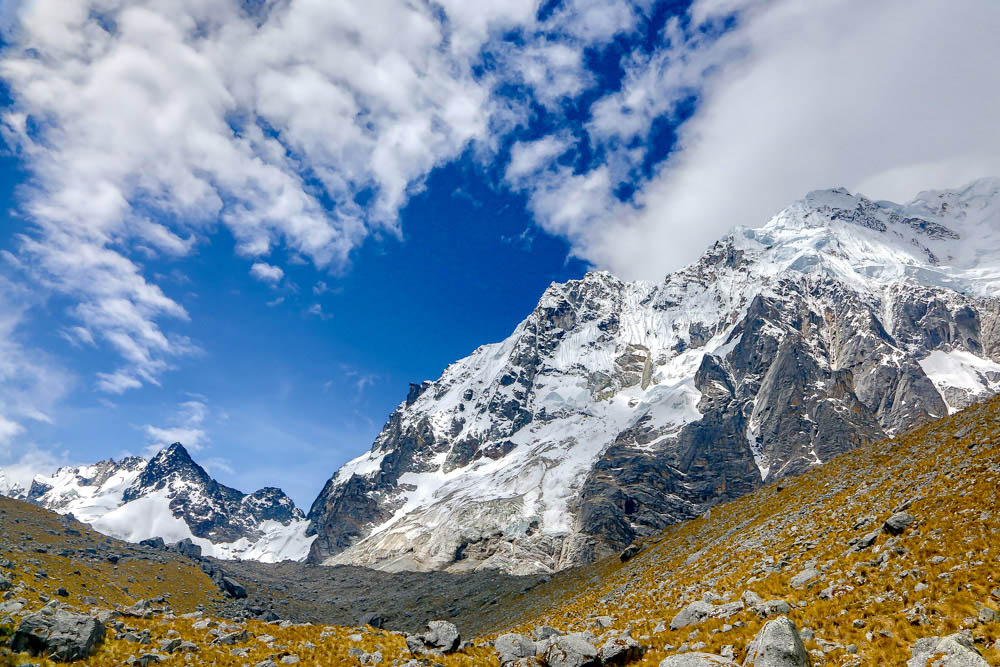 Finally at the top, we took some celebratory photos together and with the group.
Finally at the top, we took some celebratory photos together and with the group.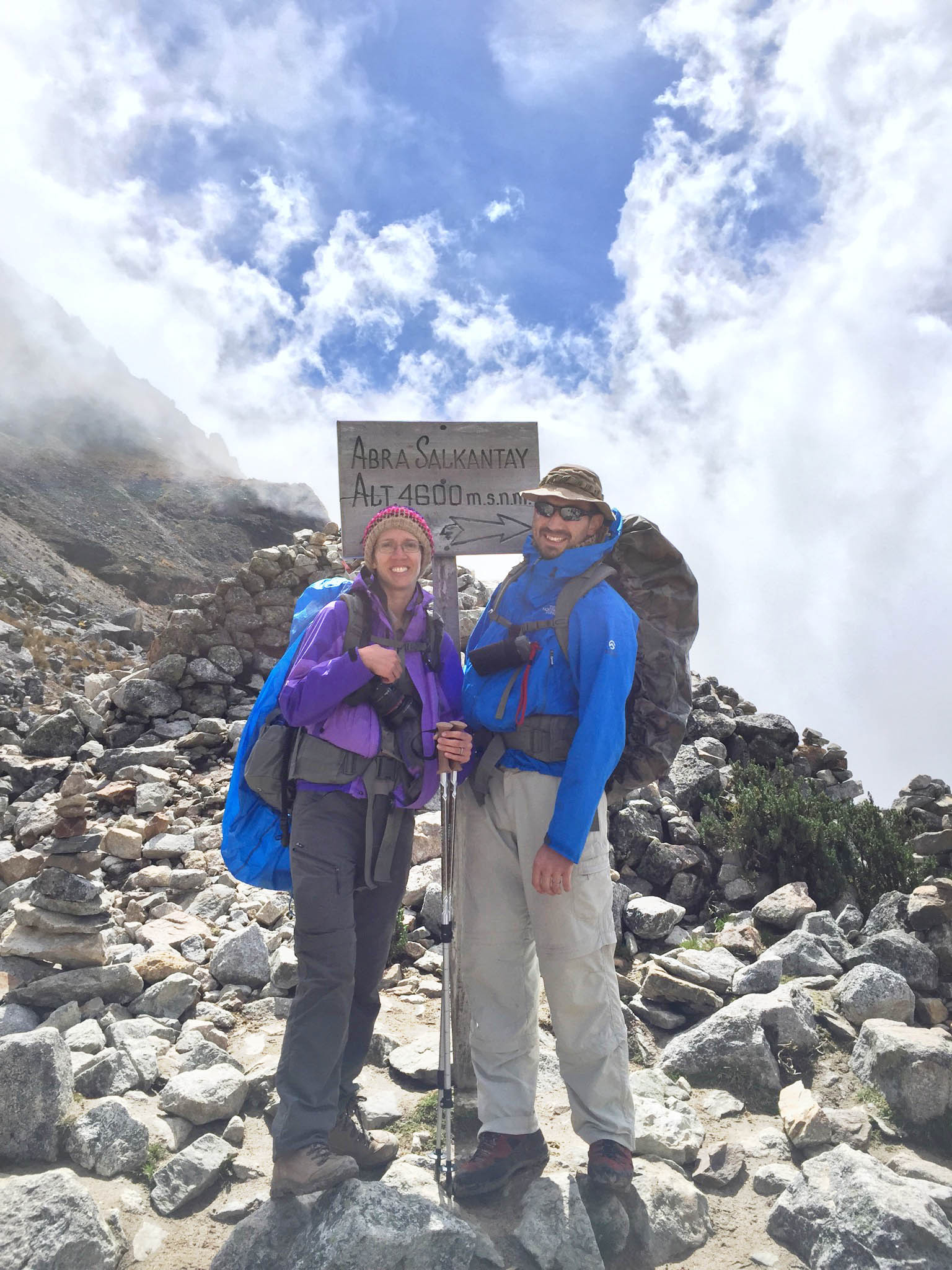 Kay was having a baller time and was not nearly as winded as I was. Below you can see he even climbed up a higher stretch with the ultrathon runners we had in our group. I politely declined. 😉
Kay was having a baller time and was not nearly as winded as I was. Below you can see he even climbed up a higher stretch with the ultrathon runners we had in our group. I politely declined. 😉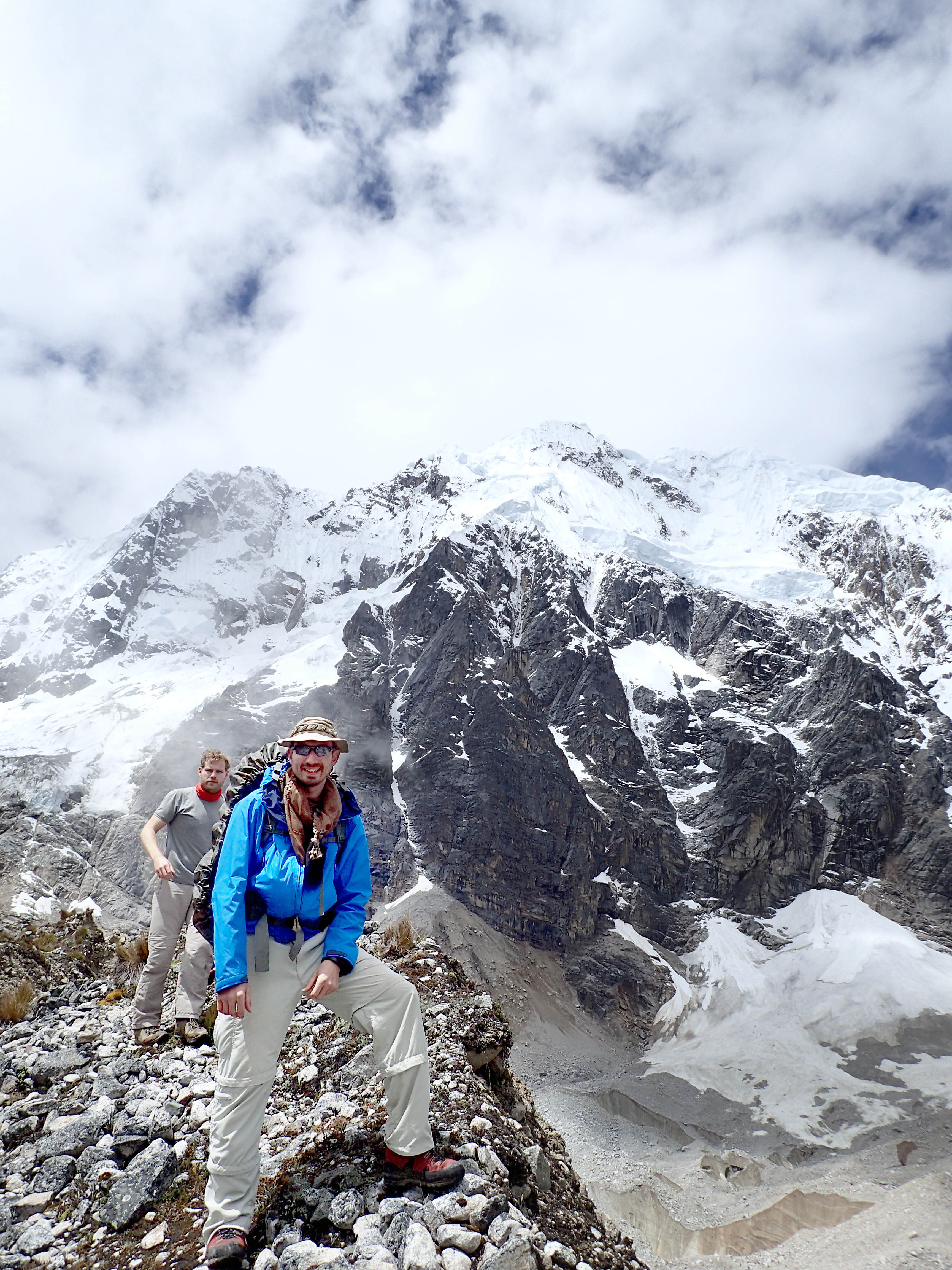
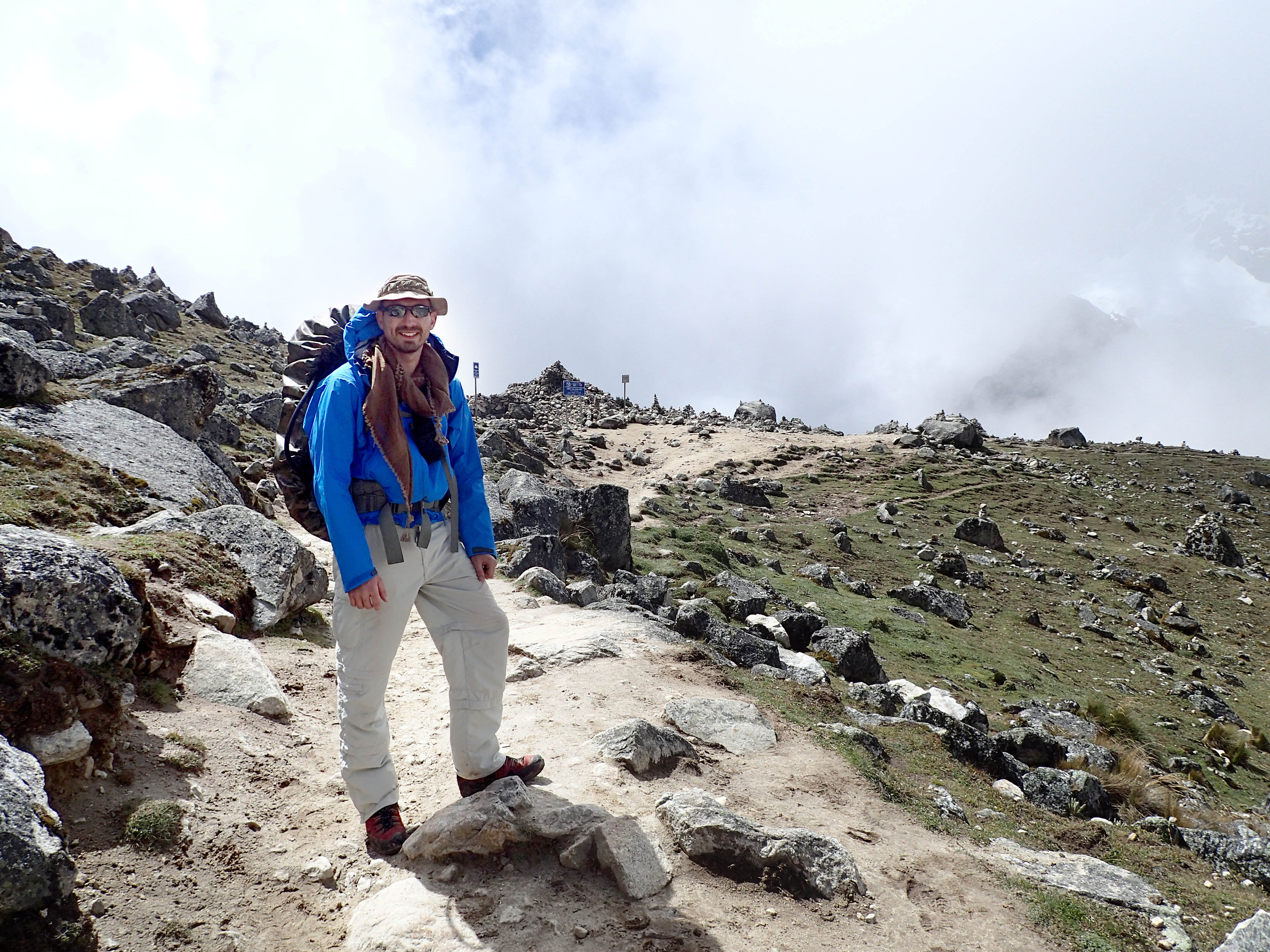
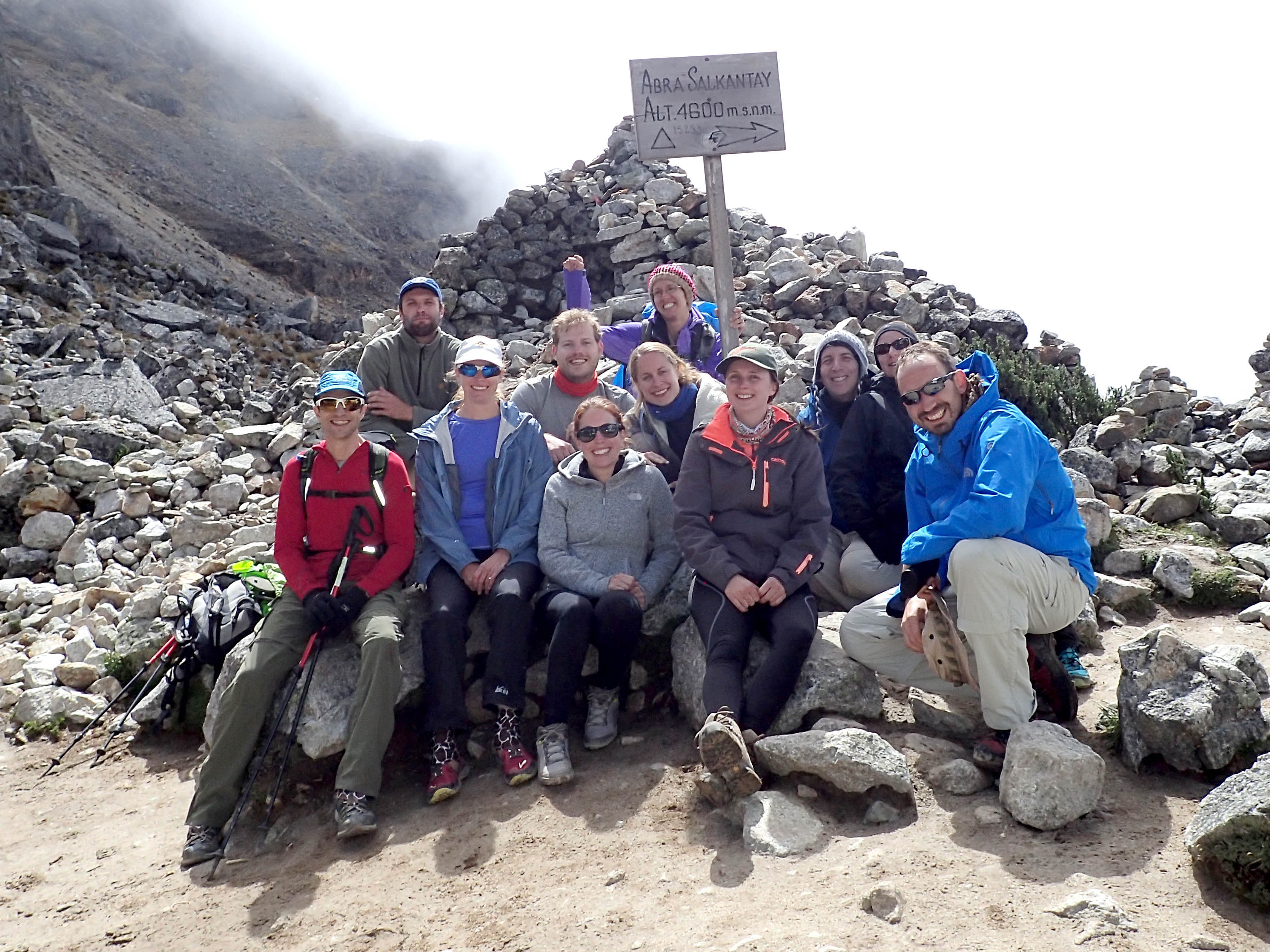 Overall, we were a nice group. Five Americans, four Dutch, Kay, and me. We were all pretty sporty and fit and kept a nice pace together, even with me a little slow on the way up. 🙂
Overall, we were a nice group. Five Americans, four Dutch, Kay, and me. We were all pretty sporty and fit and kept a nice pace together, even with me a little slow on the way up. 🙂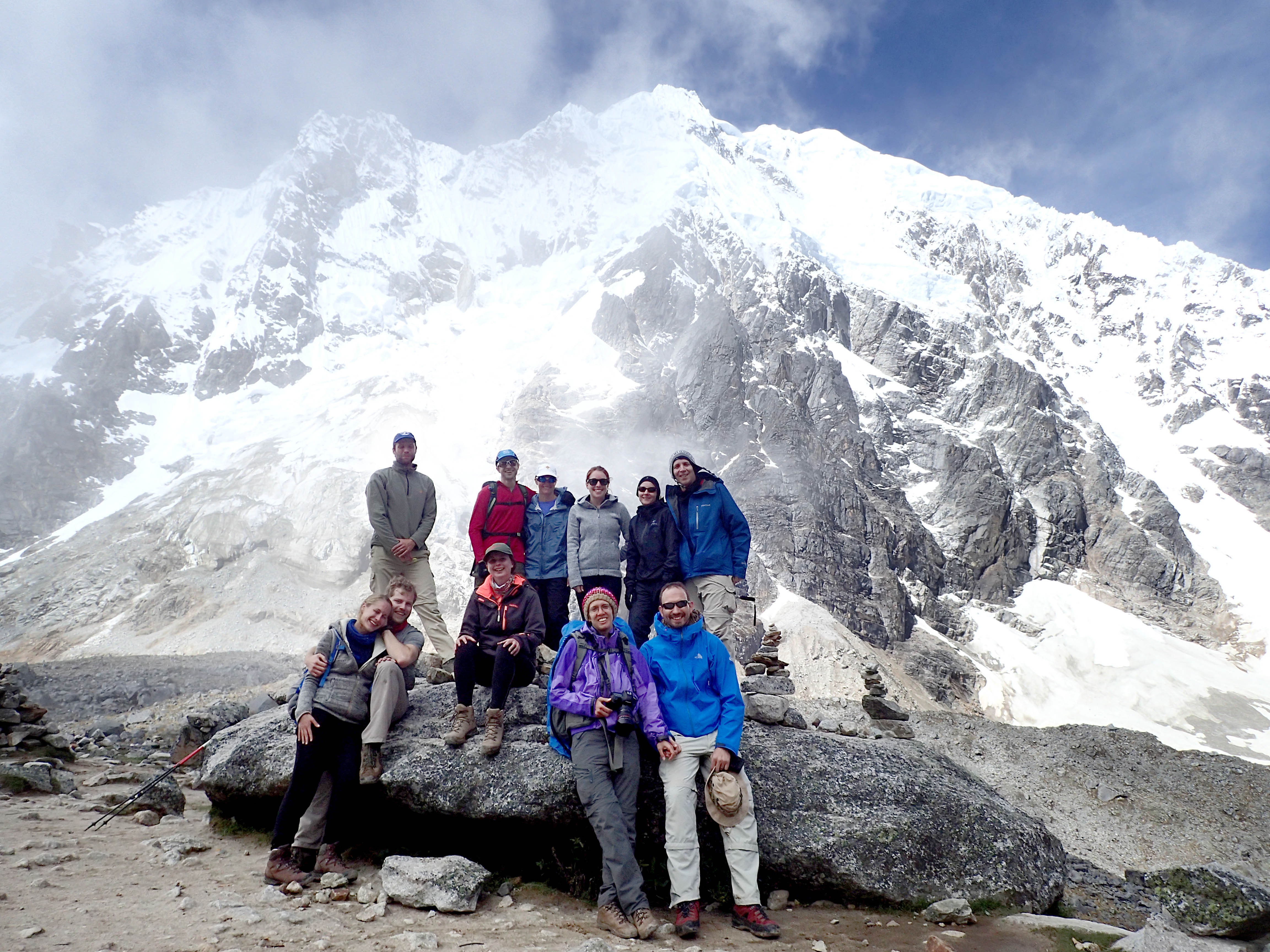 On the other side of the pass, the crew set up lunch for us in a tent and even set up a portable toilet. I was really impressed and couldn’t wait to use it. This was only the first day, but you definitely start getting excited about toilets and running water on a trip like this. 😀
On the other side of the pass, the crew set up lunch for us in a tent and even set up a portable toilet. I was really impressed and couldn’t wait to use it. This was only the first day, but you definitely start getting excited about toilets and running water on a trip like this. 😀
I had asked about my gluten problem the night before in the briefing and they said it should be fine. I asked about everything I ate and never got sick the whole time on the trek. Below we started out with some hot soup.
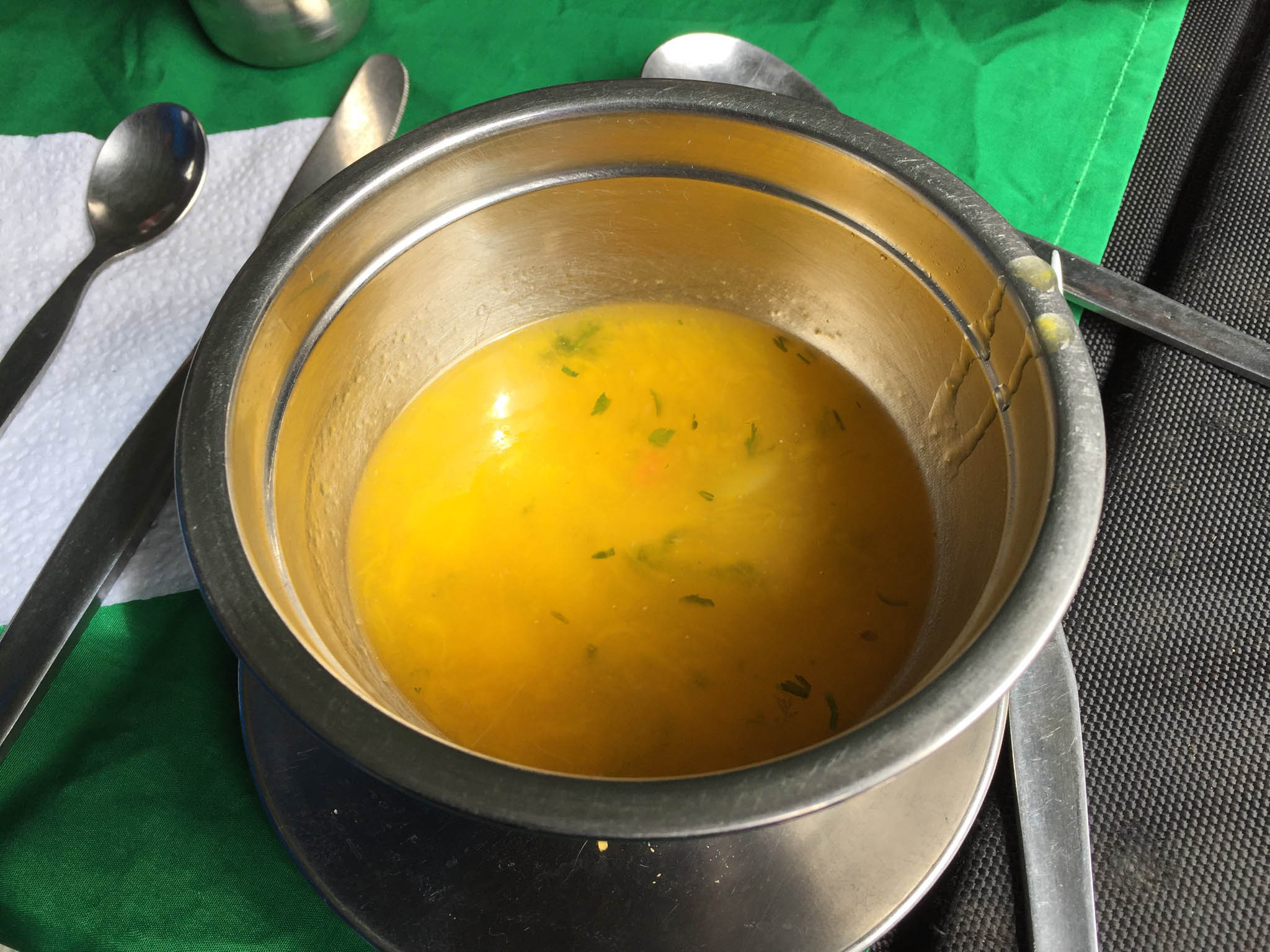 Look how happy my boy is! It made me feel all warm and fuzzy inside to see him enjoying himself so much.
Look how happy my boy is! It made me feel all warm and fuzzy inside to see him enjoying himself so much.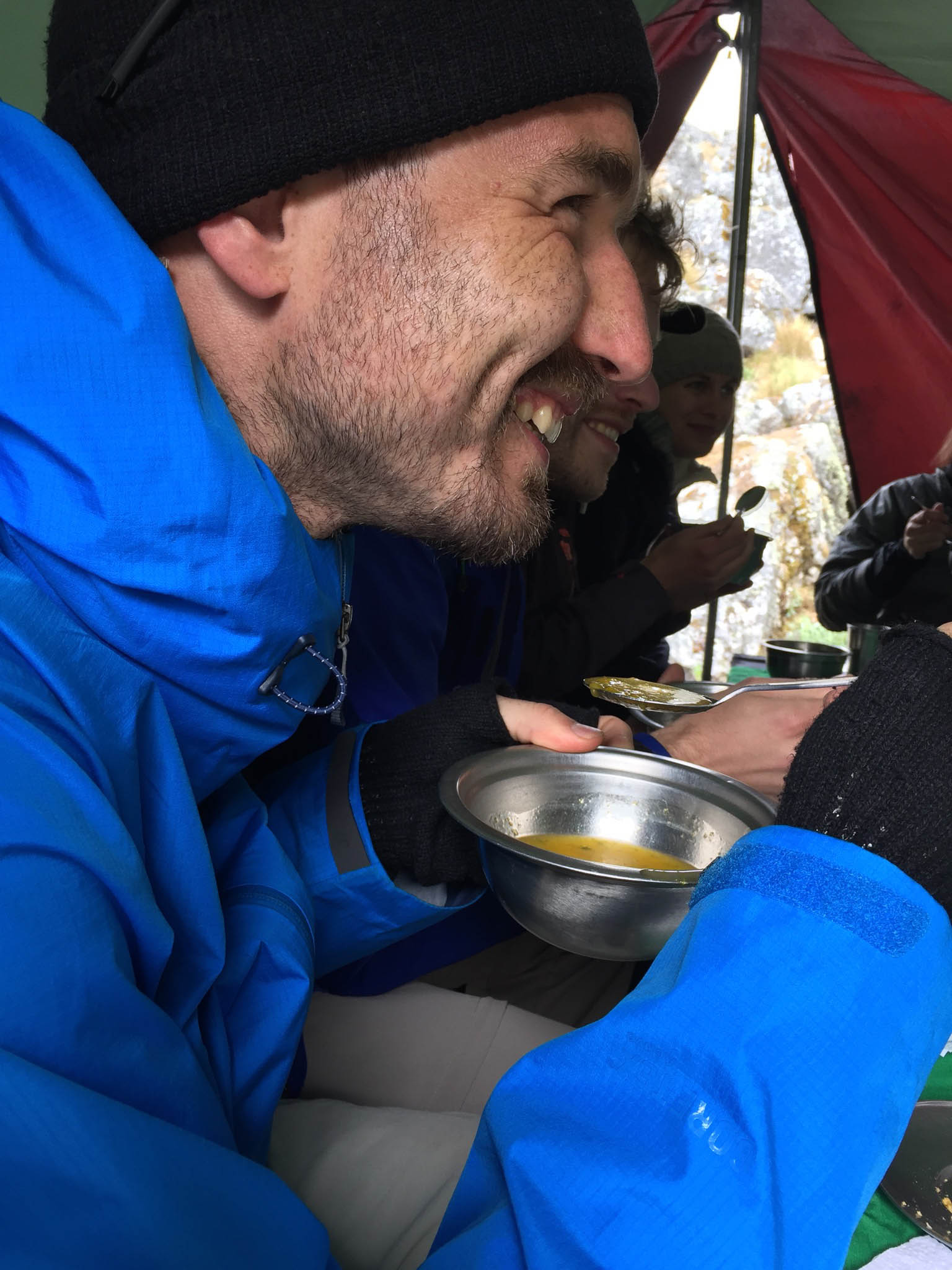 Our chef was pretty awesome. Every meal had tons of variety and tons of food. I had made it known at breakfast that I was celiac so sometimes I needed more of certain foods when the others contained gluten and everyone was accommodating to “let Katie eat all the fruits”.
Our chef was pretty awesome. Every meal had tons of variety and tons of food. I had made it known at breakfast that I was celiac so sometimes I needed more of certain foods when the others contained gluten and everyone was accommodating to “let Katie eat all the fruits”.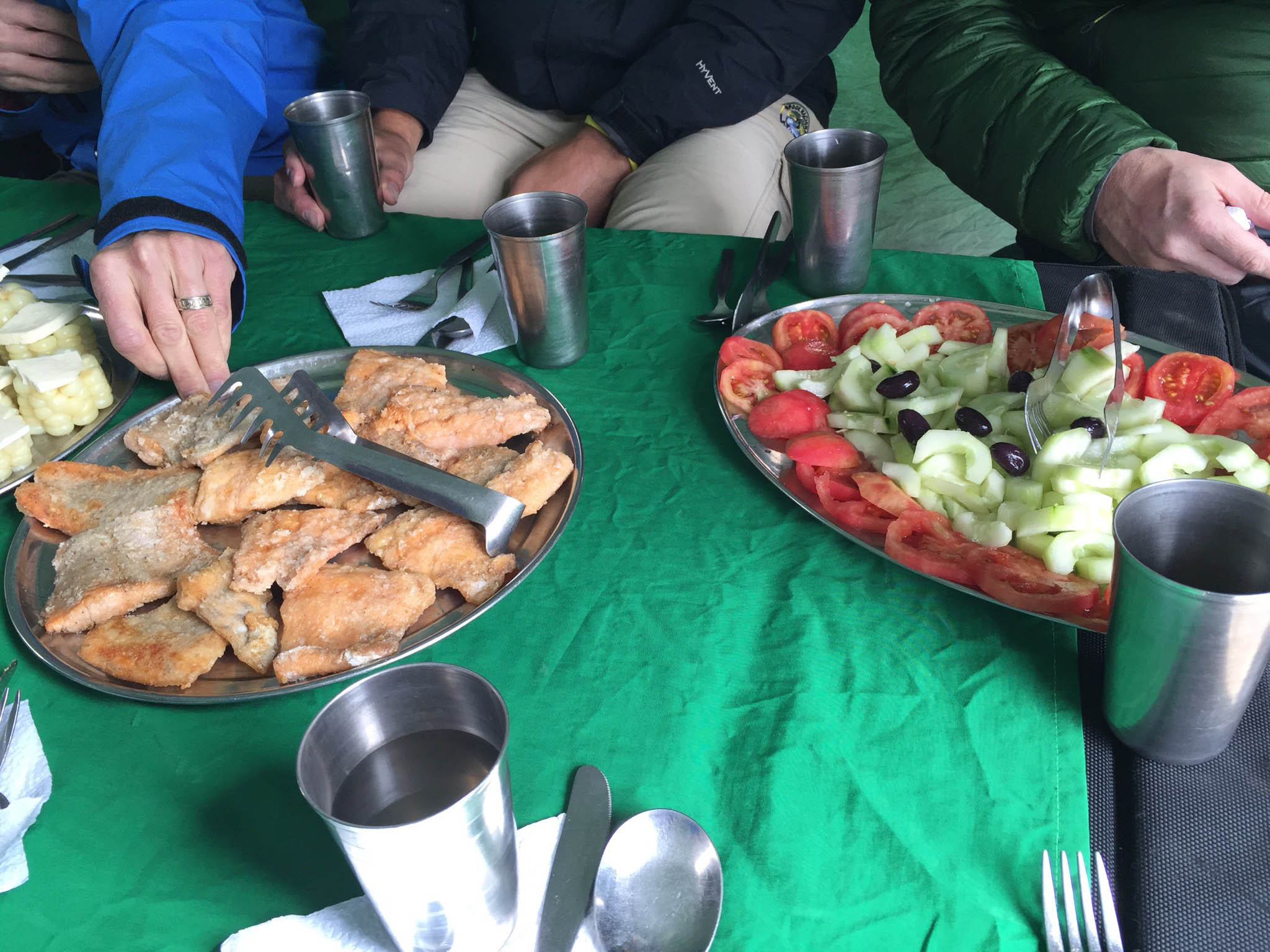 At lunch we had fried fish, cucumbers and tomatoes, olives and below you can see Peruvian corn with cheese in the middle and ceviche to the left.
At lunch we had fried fish, cucumbers and tomatoes, olives and below you can see Peruvian corn with cheese in the middle and ceviche to the left.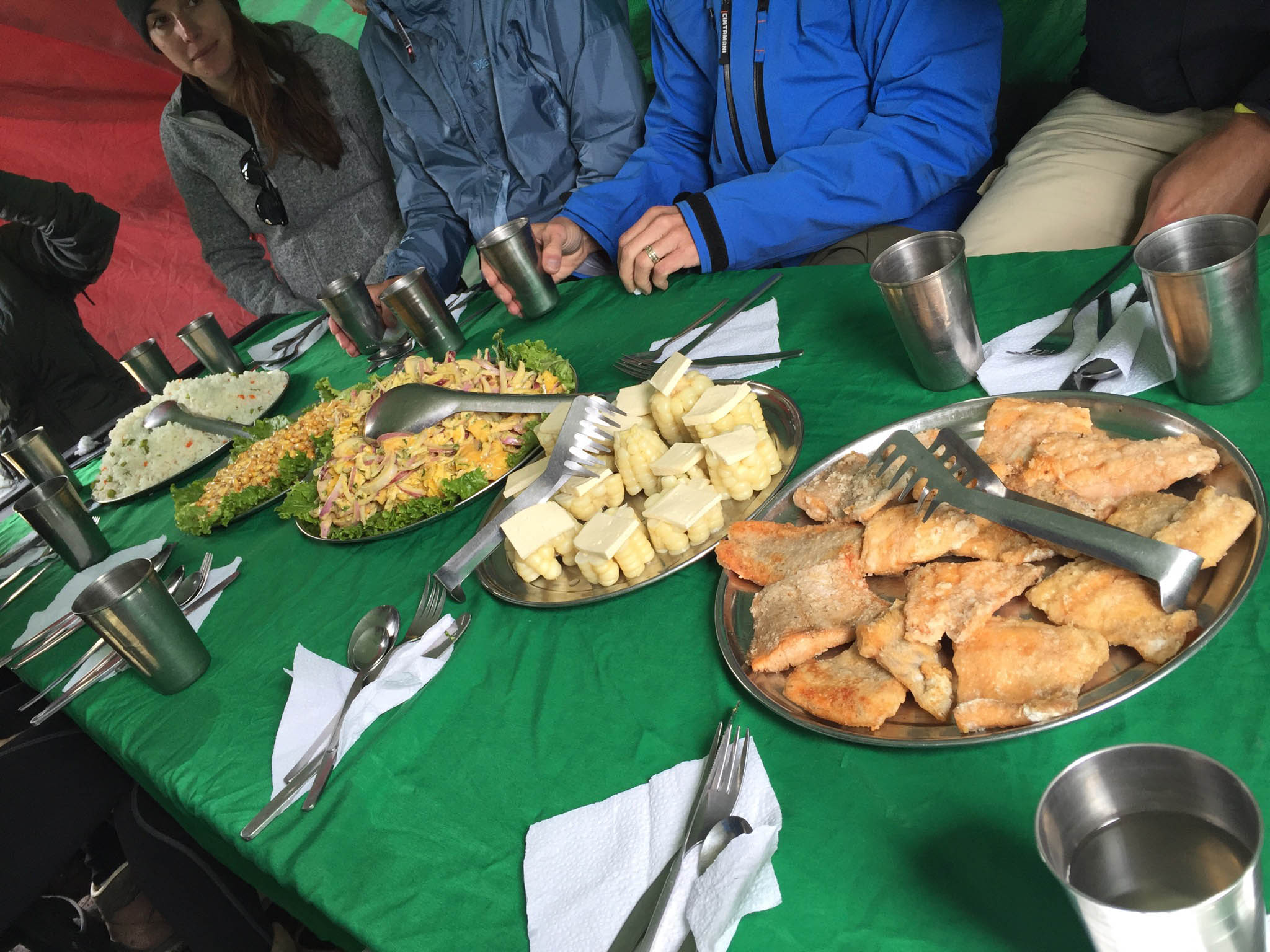 They also had rice and toasted crunchy corn. It was delicious!
They also had rice and toasted crunchy corn. It was delicious! After lunch, we all got a chance to use the bathroom. Before and after eating, everyone had the chance to wash their hands with soap and water. Considering that I had peed on mine, I was really appreciative of this, even though Kay had disinfectant with him too.
After lunch, we all got a chance to use the bathroom. Before and after eating, everyone had the chance to wash their hands with soap and water. Considering that I had peed on mine, I was really appreciative of this, even though Kay had disinfectant with him too.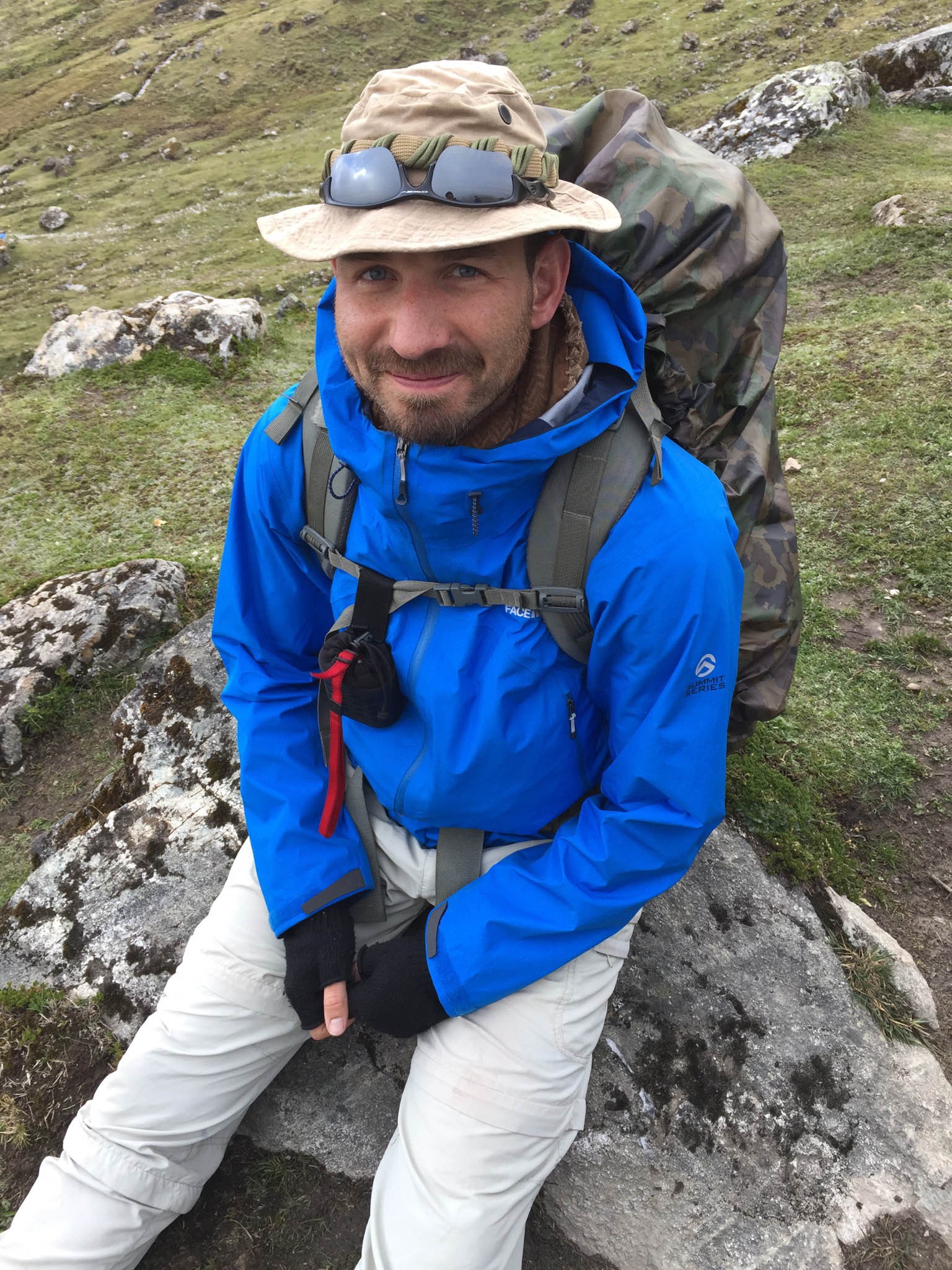 After lunch we hiked a couple hours down to Huayracmachay where we set up camp for the night. We were actually pretty lucky the entire trail that it was never raining when we set up or tore down camp. I was very thankful for this!
After lunch we hiked a couple hours down to Huayracmachay where we set up camp for the night. We were actually pretty lucky the entire trail that it was never raining when we set up or tore down camp. I was very thankful for this!
We set up camp before it got dark and then met for the cocktail hour. Kay and I are used to setting up camp quickly, so we got things sorted so that we’d be ready to peel off our clothes at night and crawl into our sleeping bags.
Behind us, the view to Salkantay was already closing up again.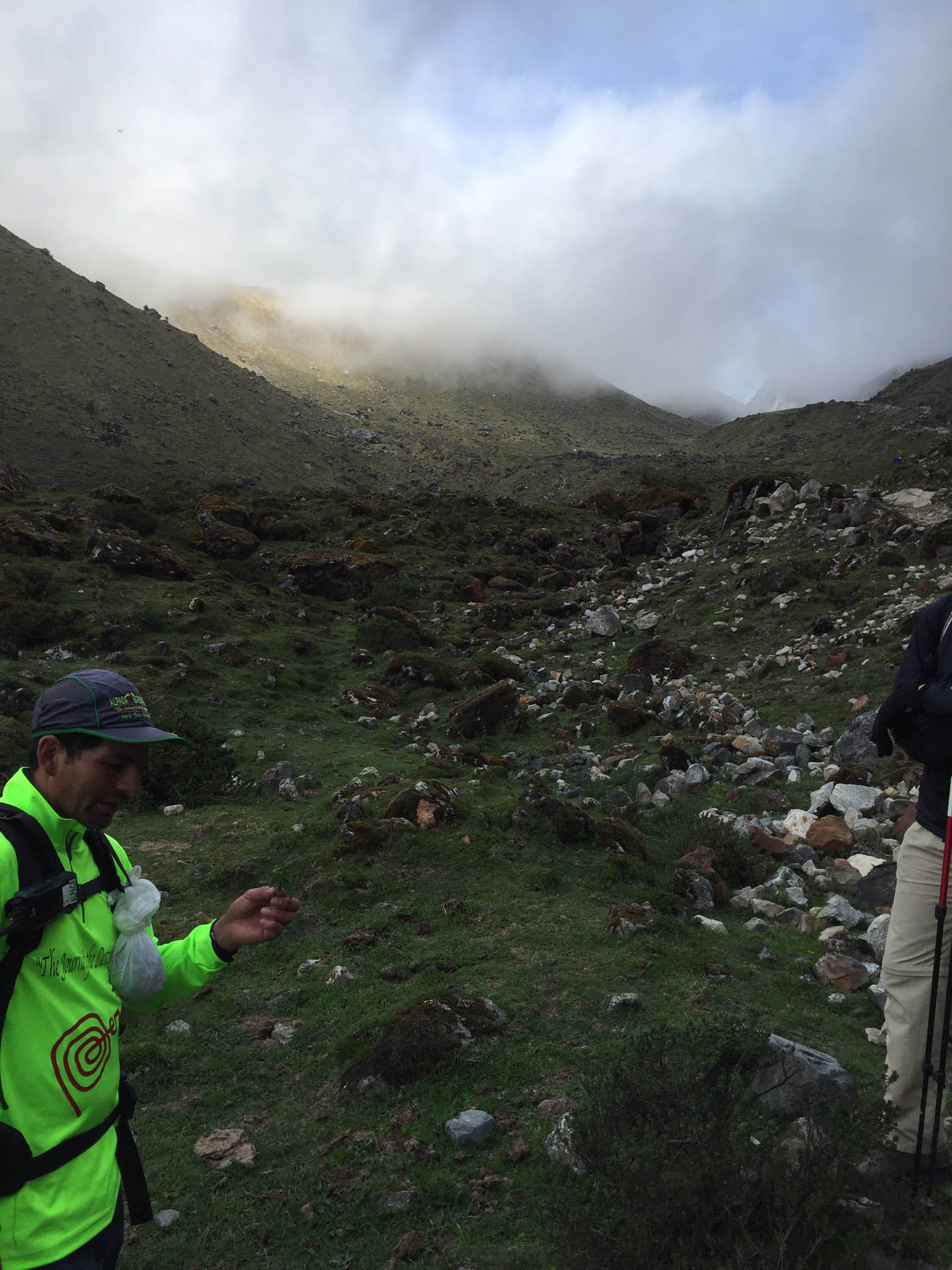 Inside the basic shelter where the cook was set up, the guides set up a funny burning (kerosin?) lamp above Kay’s head. We told the guys to be careful getting up so they wouldn’t light their heads on fire. 🙂
Inside the basic shelter where the cook was set up, the guides set up a funny burning (kerosin?) lamp above Kay’s head. We told the guys to be careful getting up so they wouldn’t light their heads on fire. 🙂 We had a pre-dinner cocktail hour with hot tea and the best, saltiest tasting popcorn you ever did desire on the trail. Afterward it was time for dinner.
We had a pre-dinner cocktail hour with hot tea and the best, saltiest tasting popcorn you ever did desire on the trail. Afterward it was time for dinner. More rice and veggies for dinner as well as chicken. I was impressed overall how much meat we enjoyed on the trip. It was quite rare if at all on our homestay in Amantaní Island, so I felt like a spoiled tourist.
More rice and veggies for dinner as well as chicken. I was impressed overall how much meat we enjoyed on the trip. It was quite rare if at all on our homestay in Amantaní Island, so I felt like a spoiled tourist.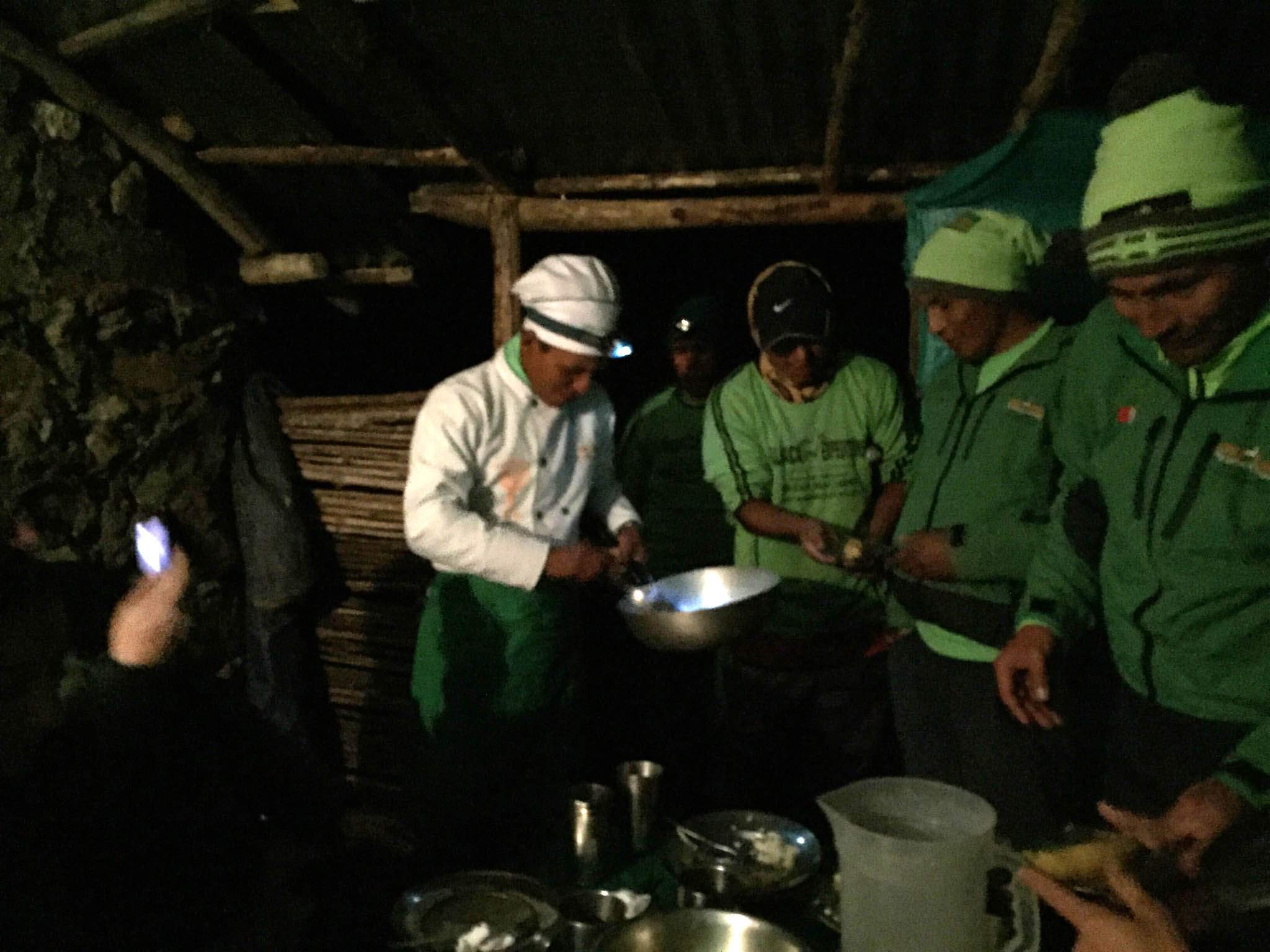 If that wasn’t enough, our chef outdid himself by flambeing bananas with pisco for dessert. Looks a little perverted, but tasted wonderful!
If that wasn’t enough, our chef outdid himself by flambeing bananas with pisco for dessert. Looks a little perverted, but tasted wonderful!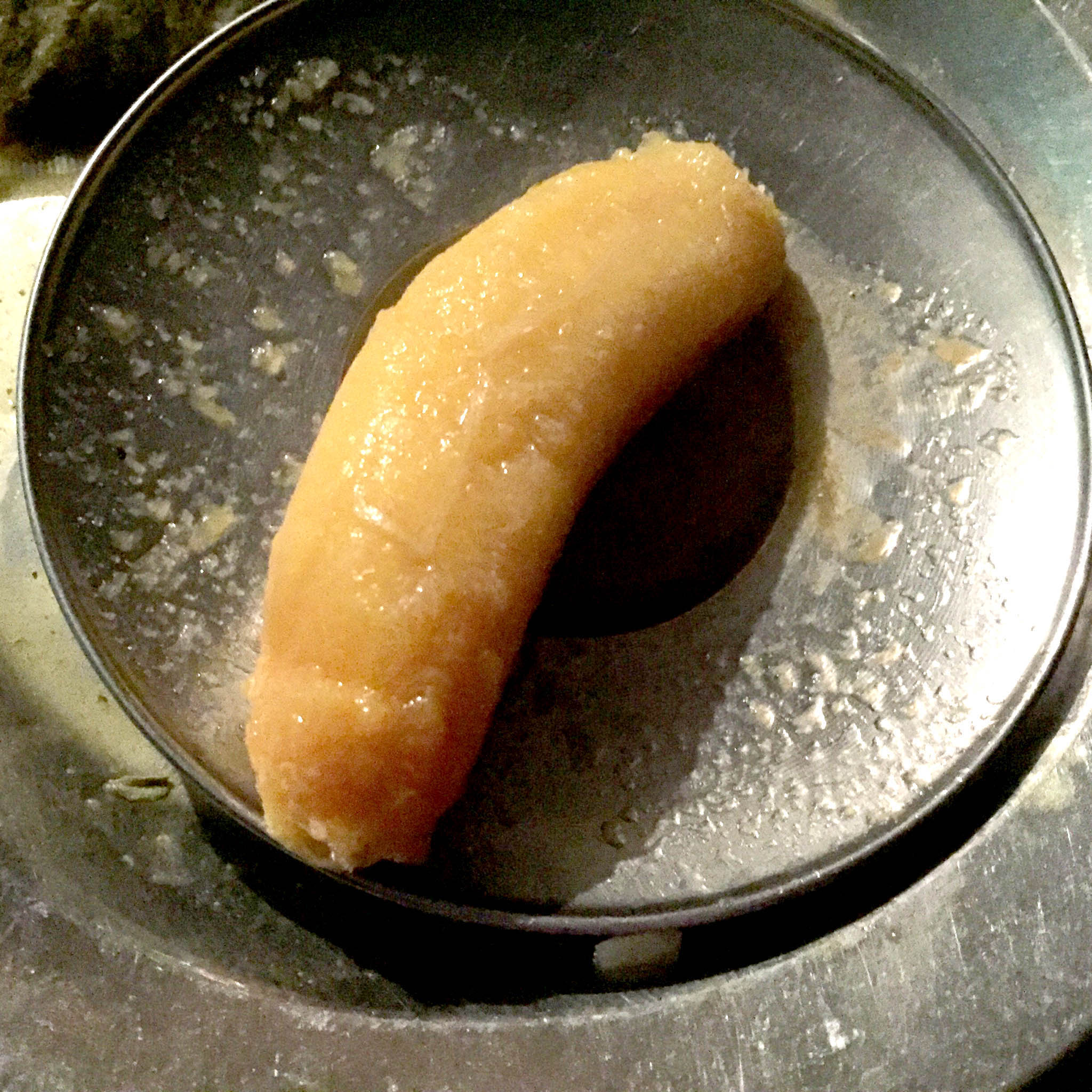 After dinner we all made our way to the bathroom, which was a real toilet with running water. HOORAY! We brushed our teeth and then went to sleep.
After dinner we all made our way to the bathroom, which was a real toilet with running water. HOORAY! We brushed our teeth and then went to sleep.
Up next, day two!
Alpaca Expeditions was founded by a retired porter and Inca tour guide. Their fantastic, professional tours specialize in sustainable tourism both by supporting local farmers and by paying fair wages to local porters, employee health/life insurance, and respecting local labor laws. The company also has social projects for children’s needs and they even work to help porters and their families to visit Machu Picchu, something that many locals in the area are never able to do on their own. By supporting Alpaca Expeditions, you can help them give back to the community and support the local Andeans.
More from our trip to Peru:
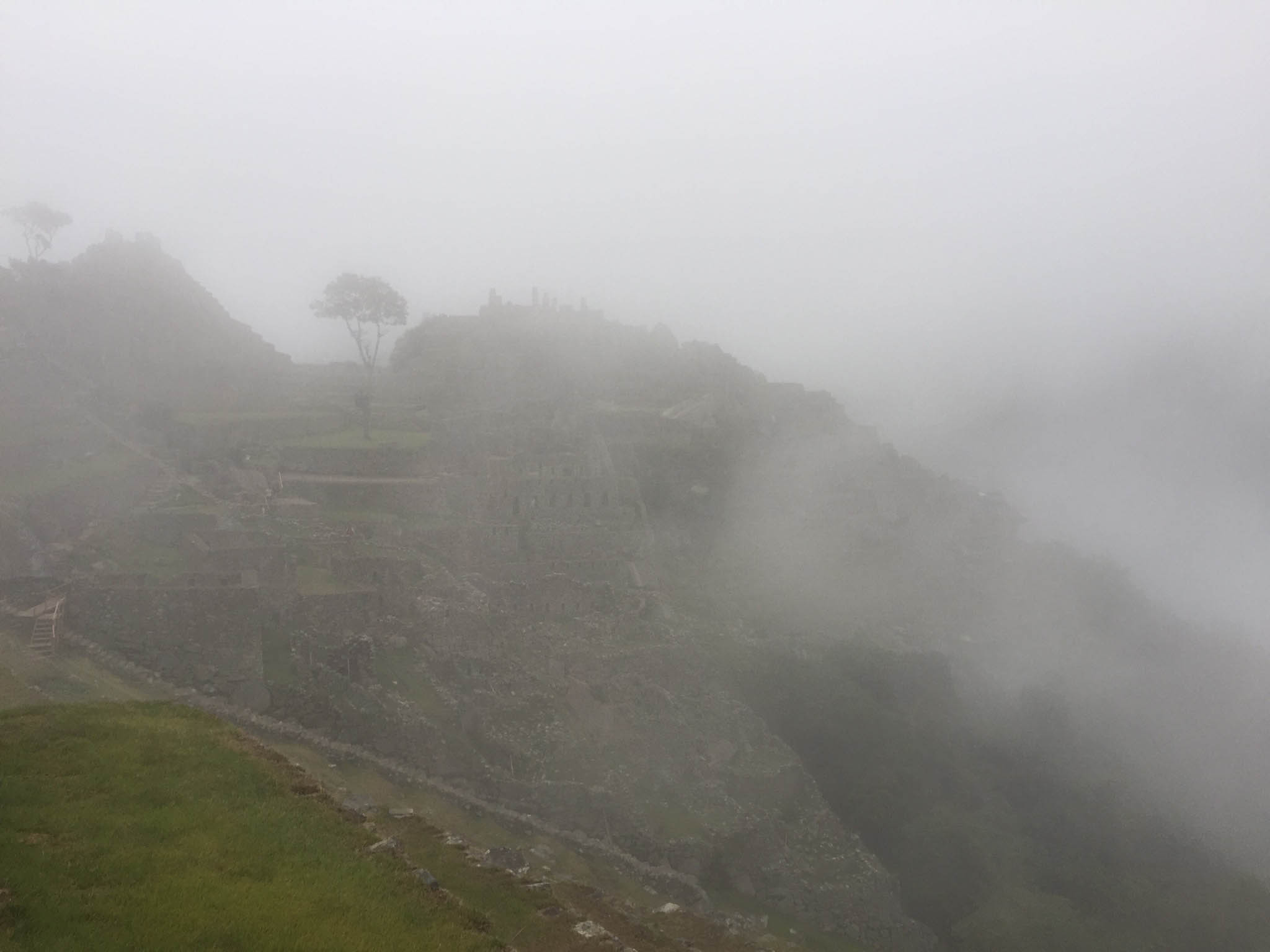 The man had a good sense of humor and he’d said exactly what I was feeling on the inside. It’s foggy… and it’s raining… and I can’t see anything. NOOooooooo. Don’t cry, don’t be disappointed, don’t cry!
The man had a good sense of humor and he’d said exactly what I was feeling on the inside. It’s foggy… and it’s raining… and I can’t see anything. NOOooooooo. Don’t cry, don’t be disappointed, don’t cry!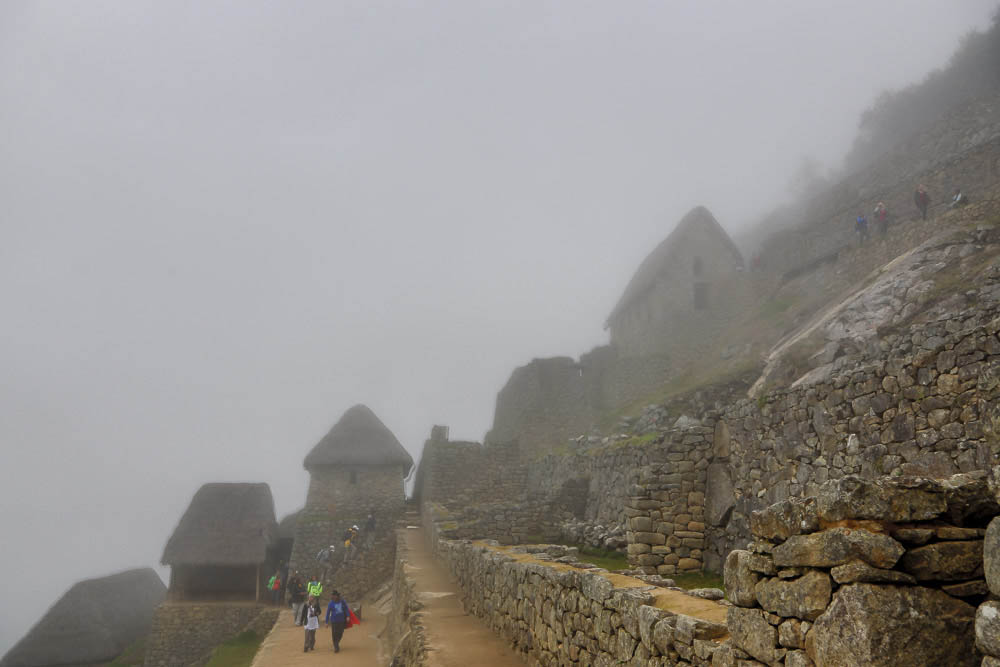 Maybe it will get better, I thought… and it would for a bit, but it also got worse and it did rain quite a bit. That’s life.
Maybe it will get better, I thought… and it would for a bit, but it also got worse and it did rain quite a bit. That’s life. Valentine took us on a tour around the grounds and explained more about Inca culture and traditions and how they think people lived in the compound.
Valentine took us on a tour around the grounds and explained more about Inca culture and traditions and how they think people lived in the compound.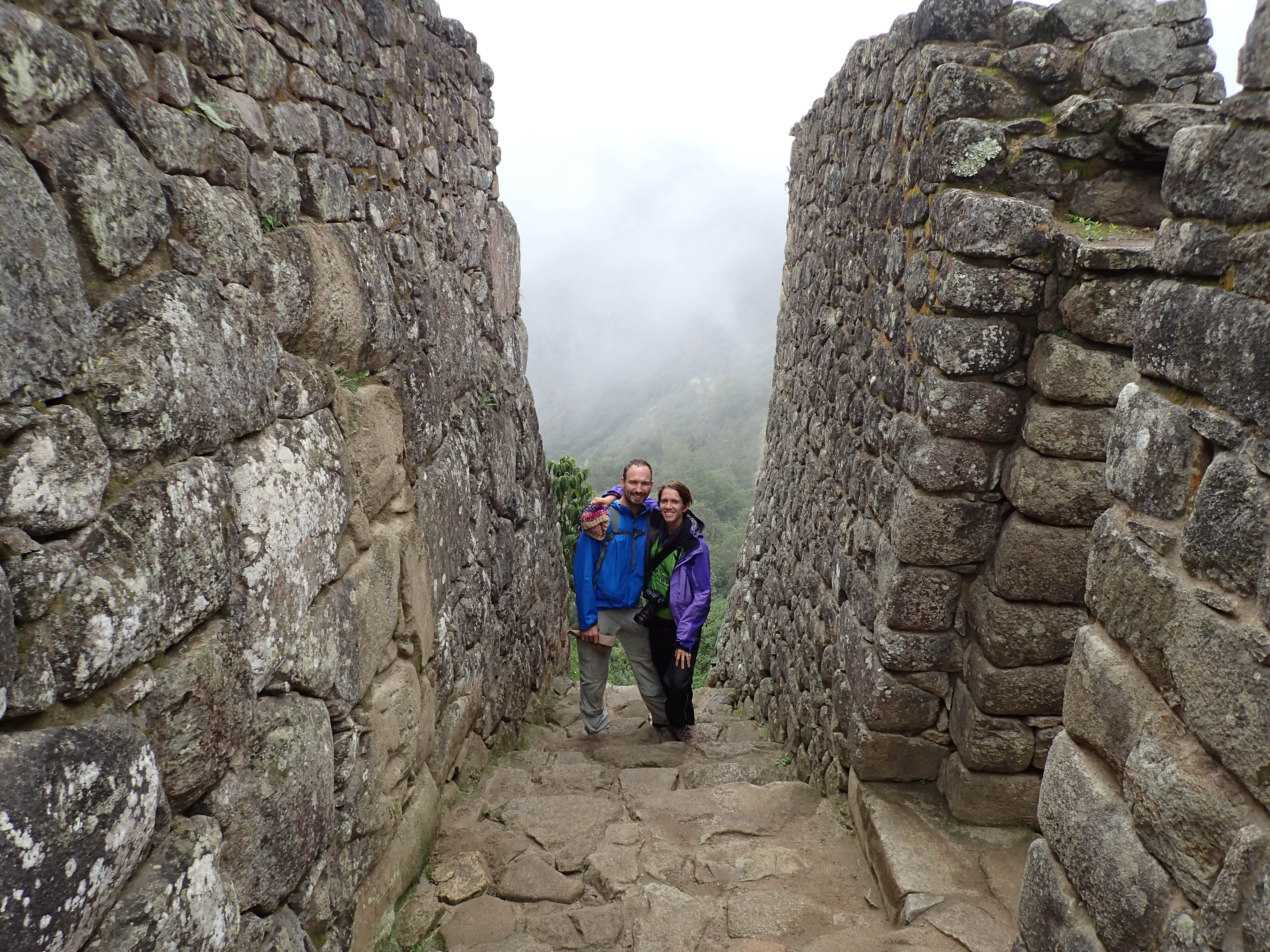 It’s an incredibly amazing place. You can only wonder how the Incas really lived here.
It’s an incredibly amazing place. You can only wonder how the Incas really lived here.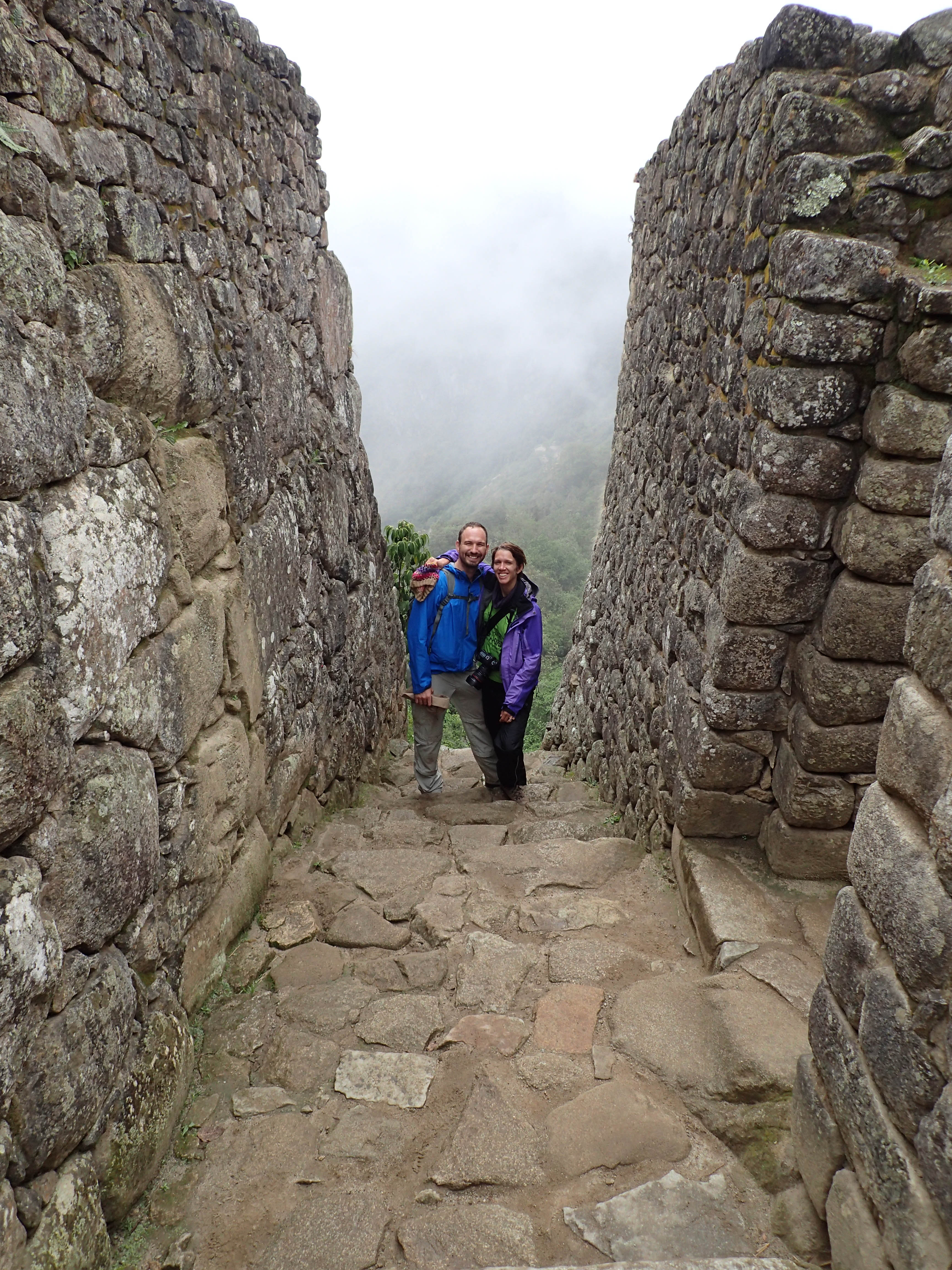
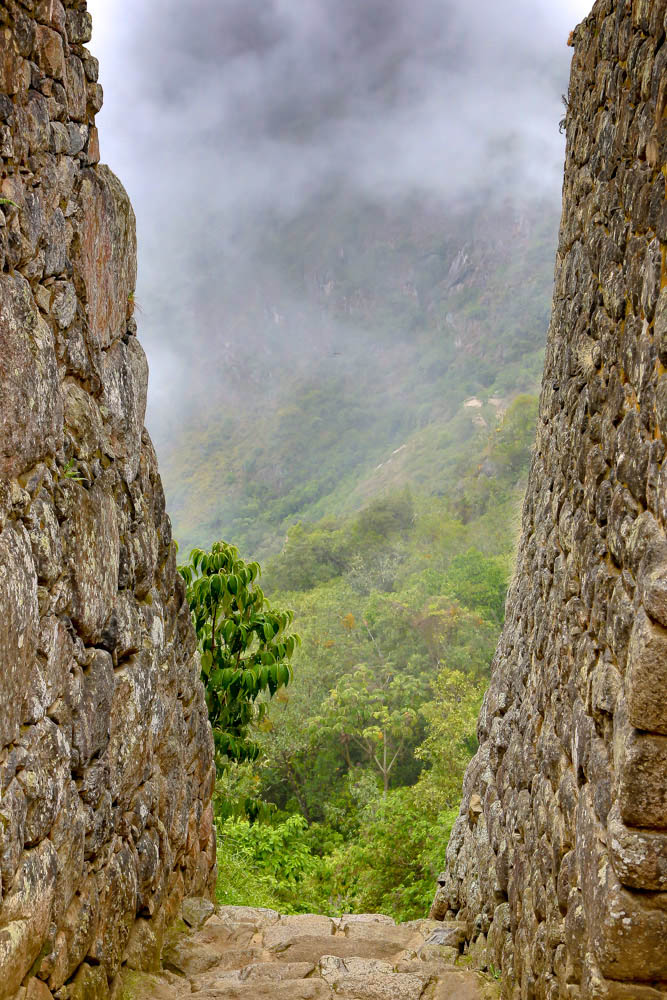
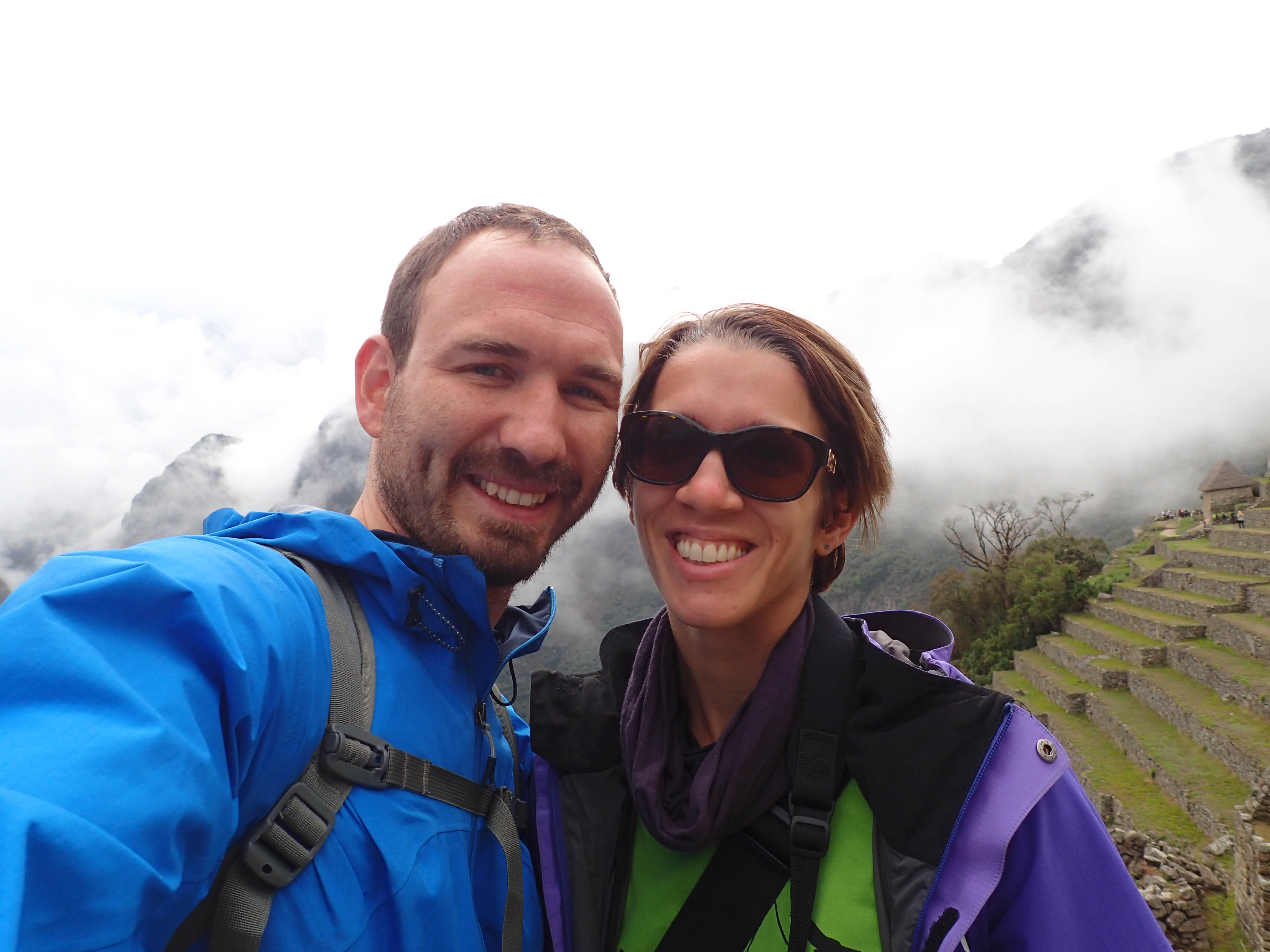
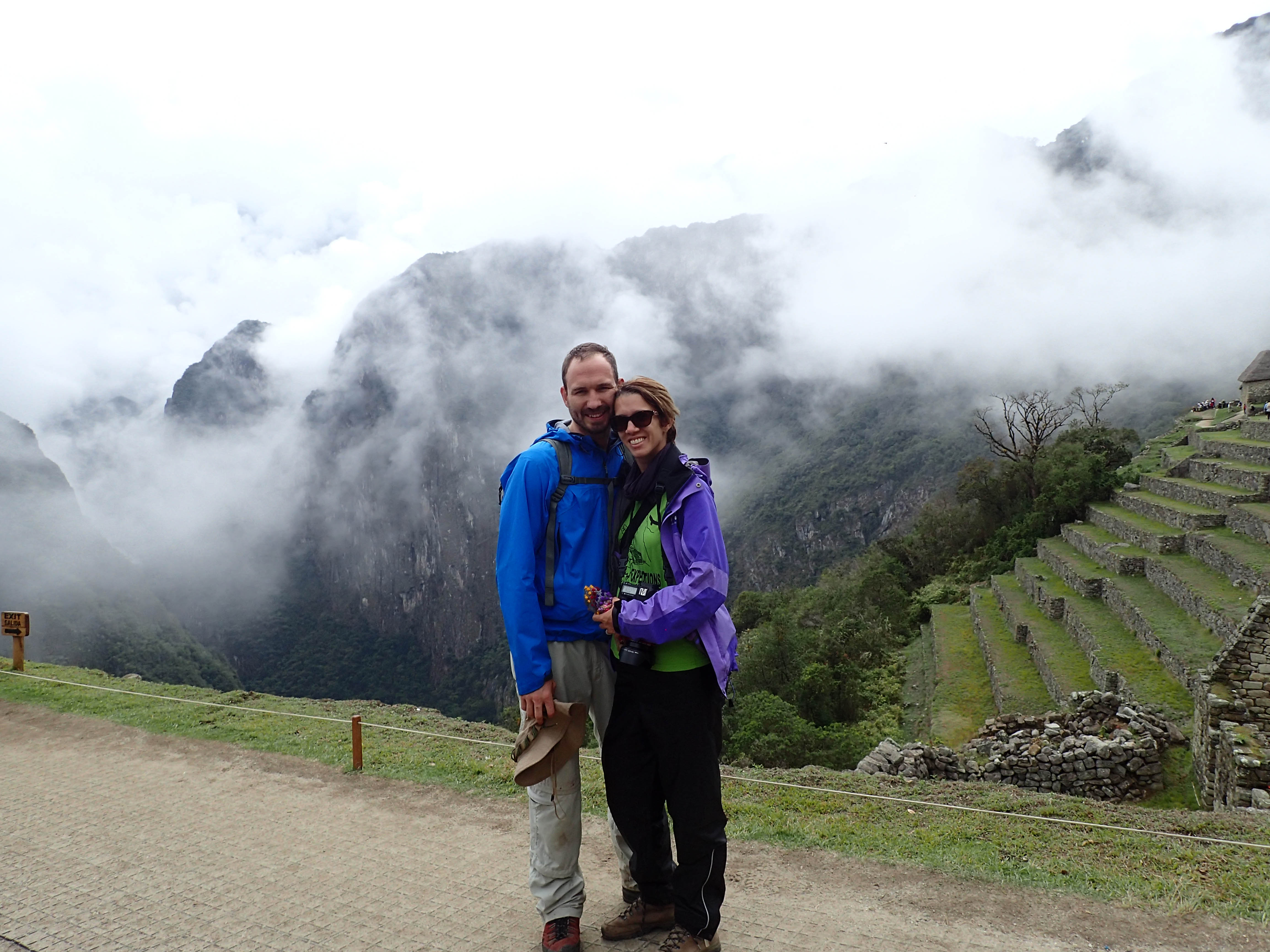 Kay was pretty much unperturbed by the rain and cover. He was just really amazed by how monumental this place is.
Kay was pretty much unperturbed by the rain and cover. He was just really amazed by how monumental this place is.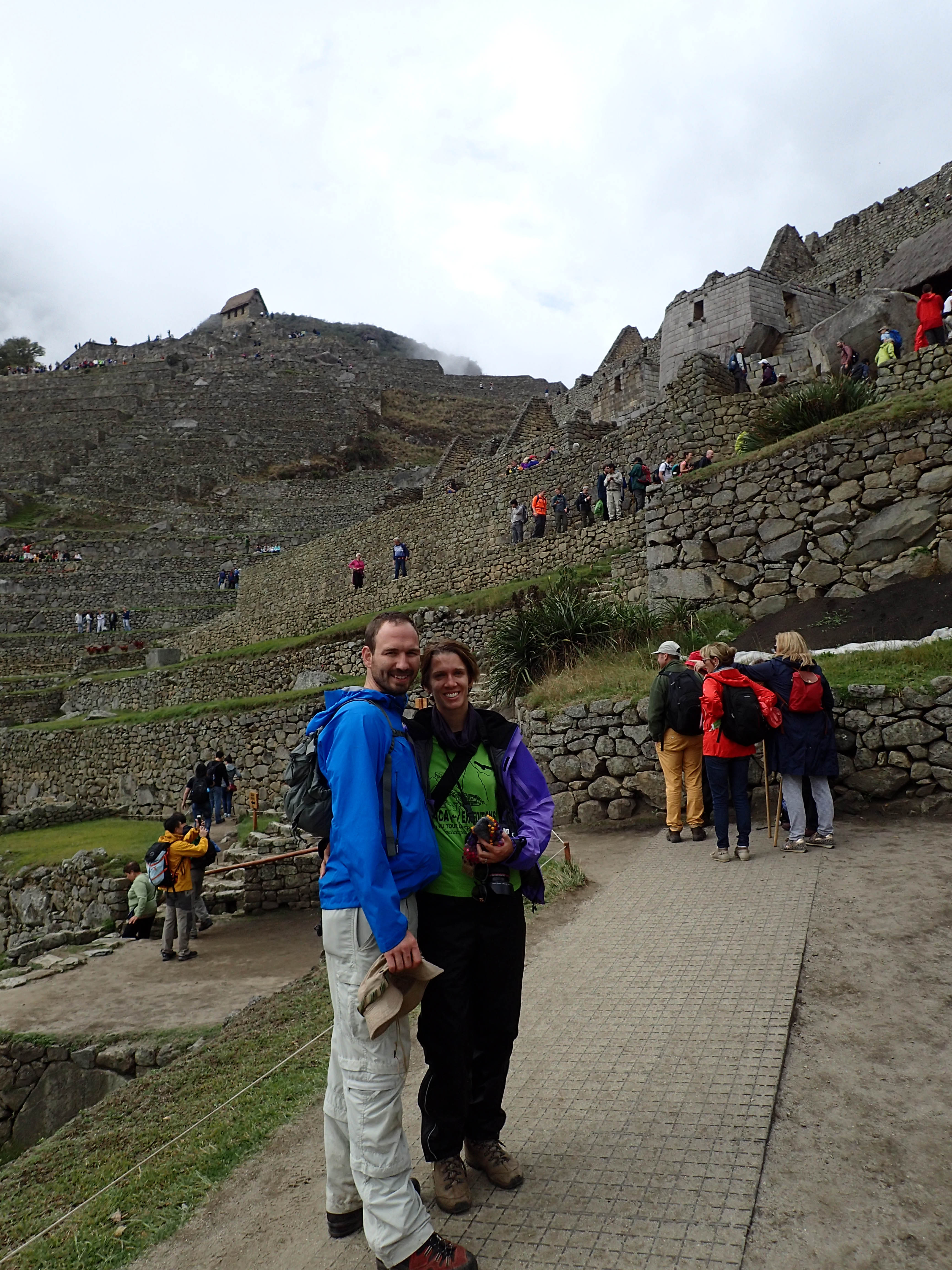 We took a few more photos with the group before it was time to hike our special package of the trip up to Huayna Picchu.
We took a few more photos with the group before it was time to hike our special package of the trip up to Huayna Picchu.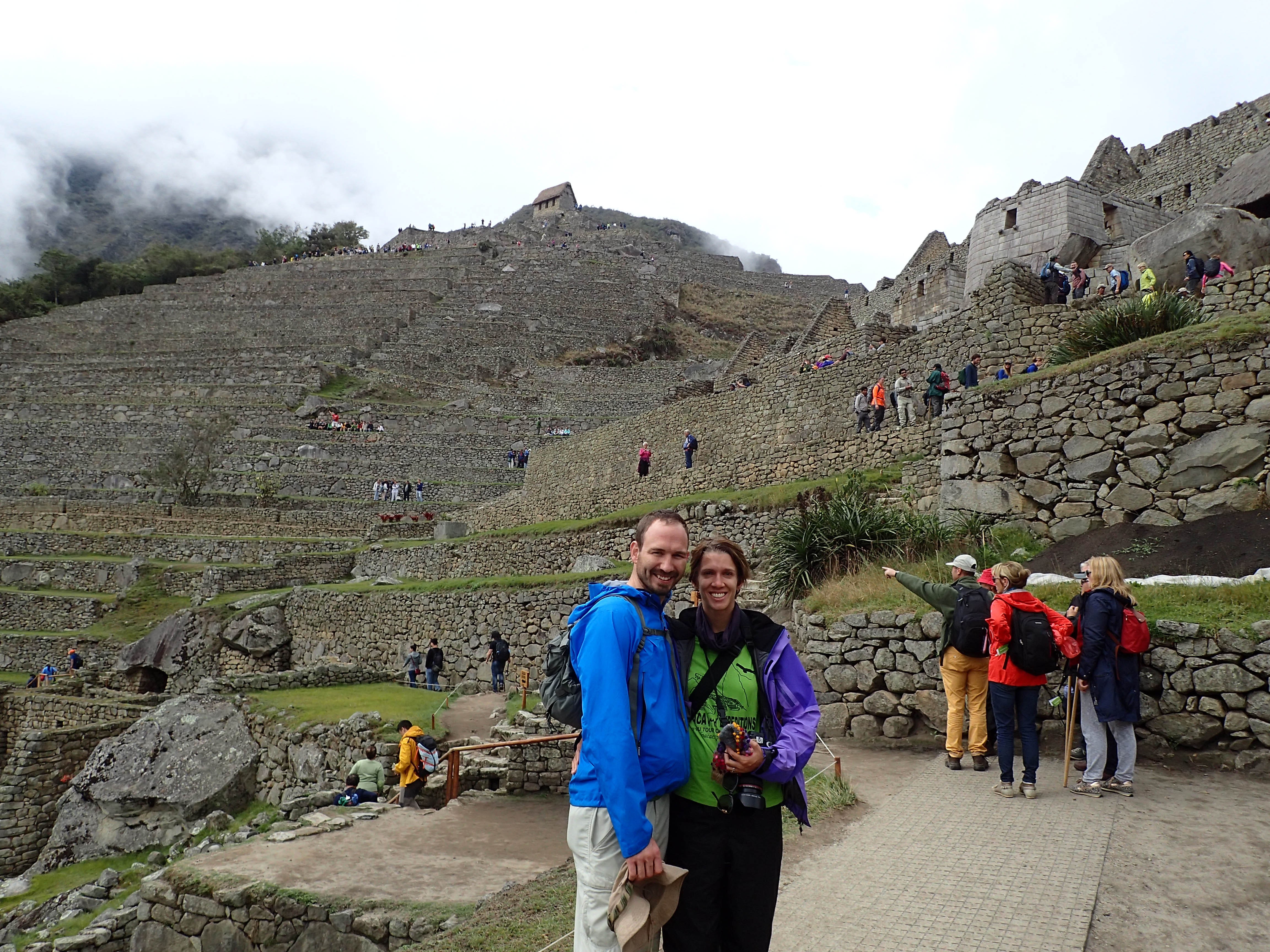
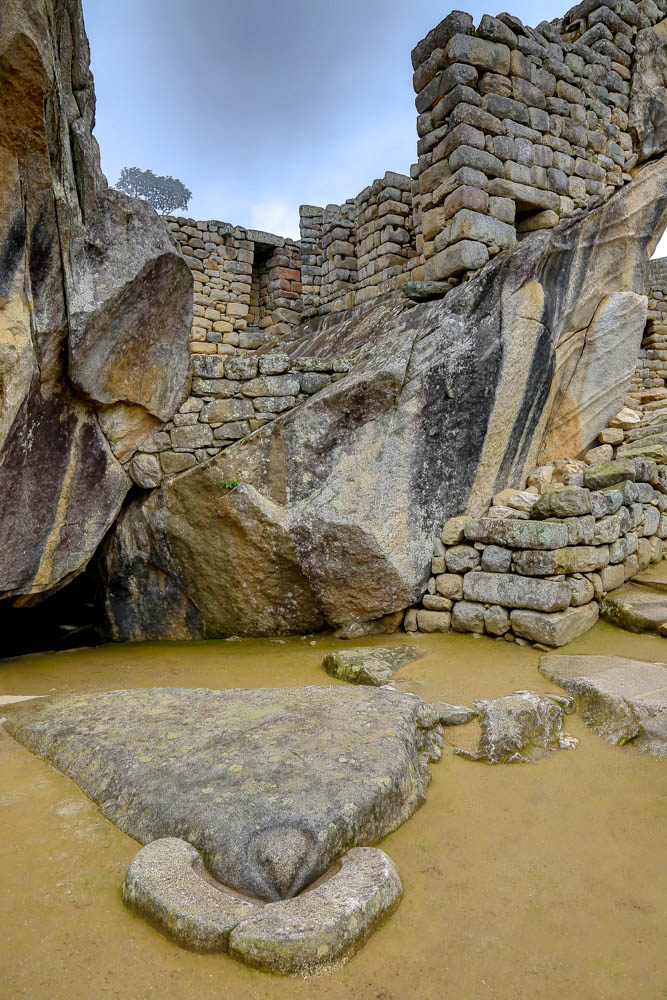
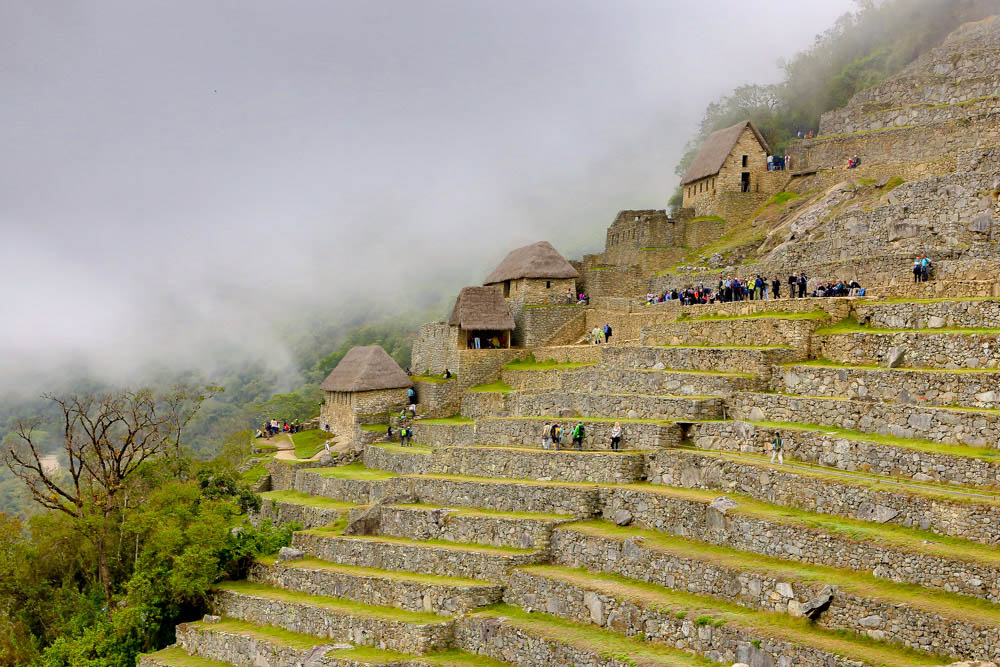
 Even though it was a little dreary, it actually added to the mystic surrounding the mystery of the Incas and what really happened to them and how they really lived. Nobody really knows.
Even though it was a little dreary, it actually added to the mystic surrounding the mystery of the Incas and what really happened to them and how they really lived. Nobody really knows.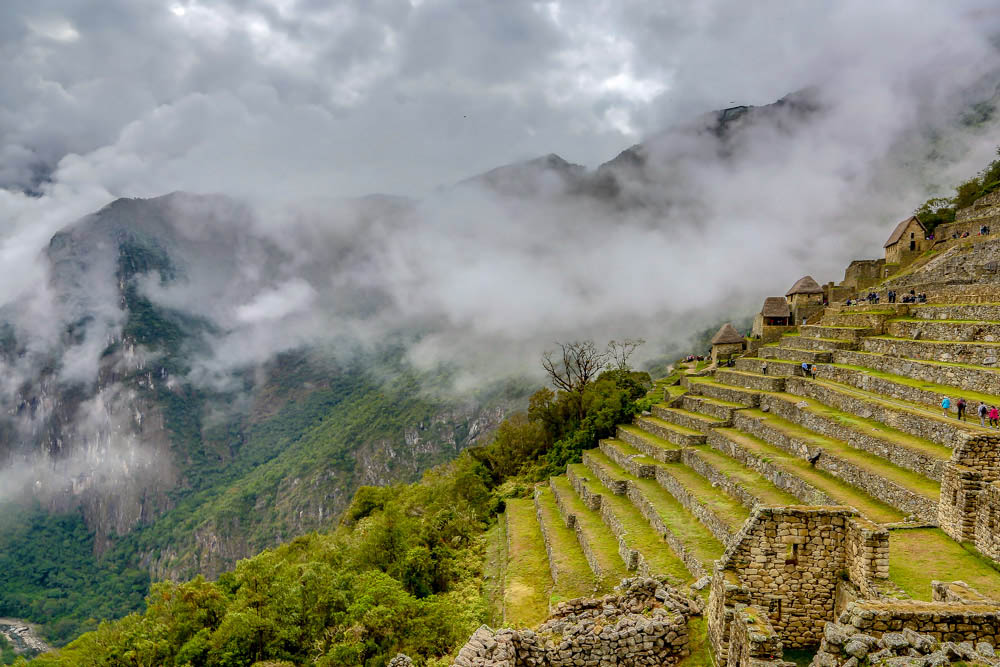 The sure knew how to pick a location for their holy site though!
The sure knew how to pick a location for their holy site though!
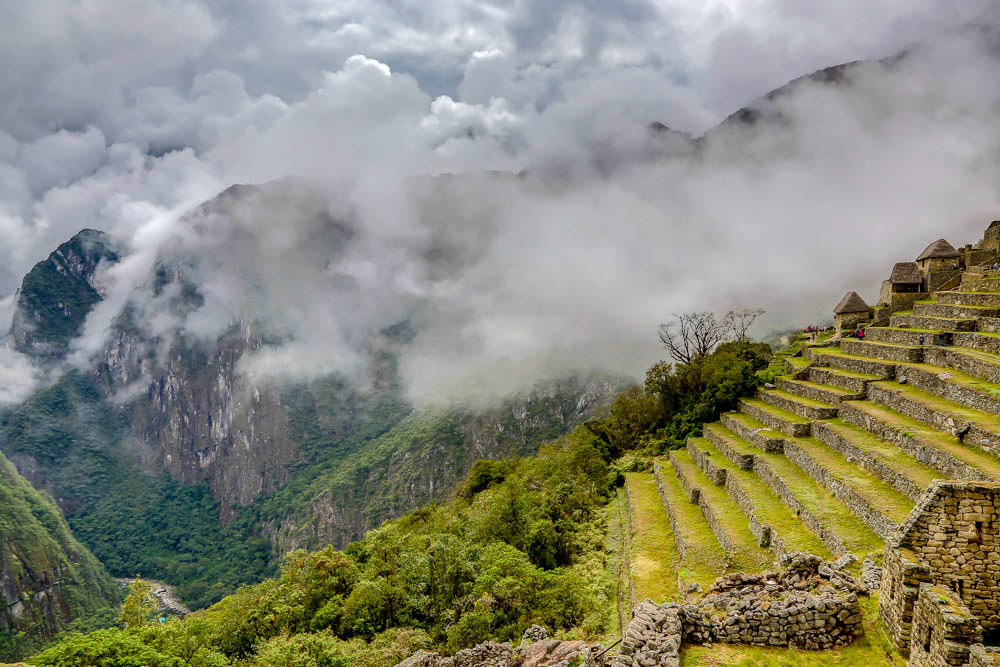 Group photo time and then Valentine and Filio bid us goodbye.
Group photo time and then Valentine and Filio bid us goodbye.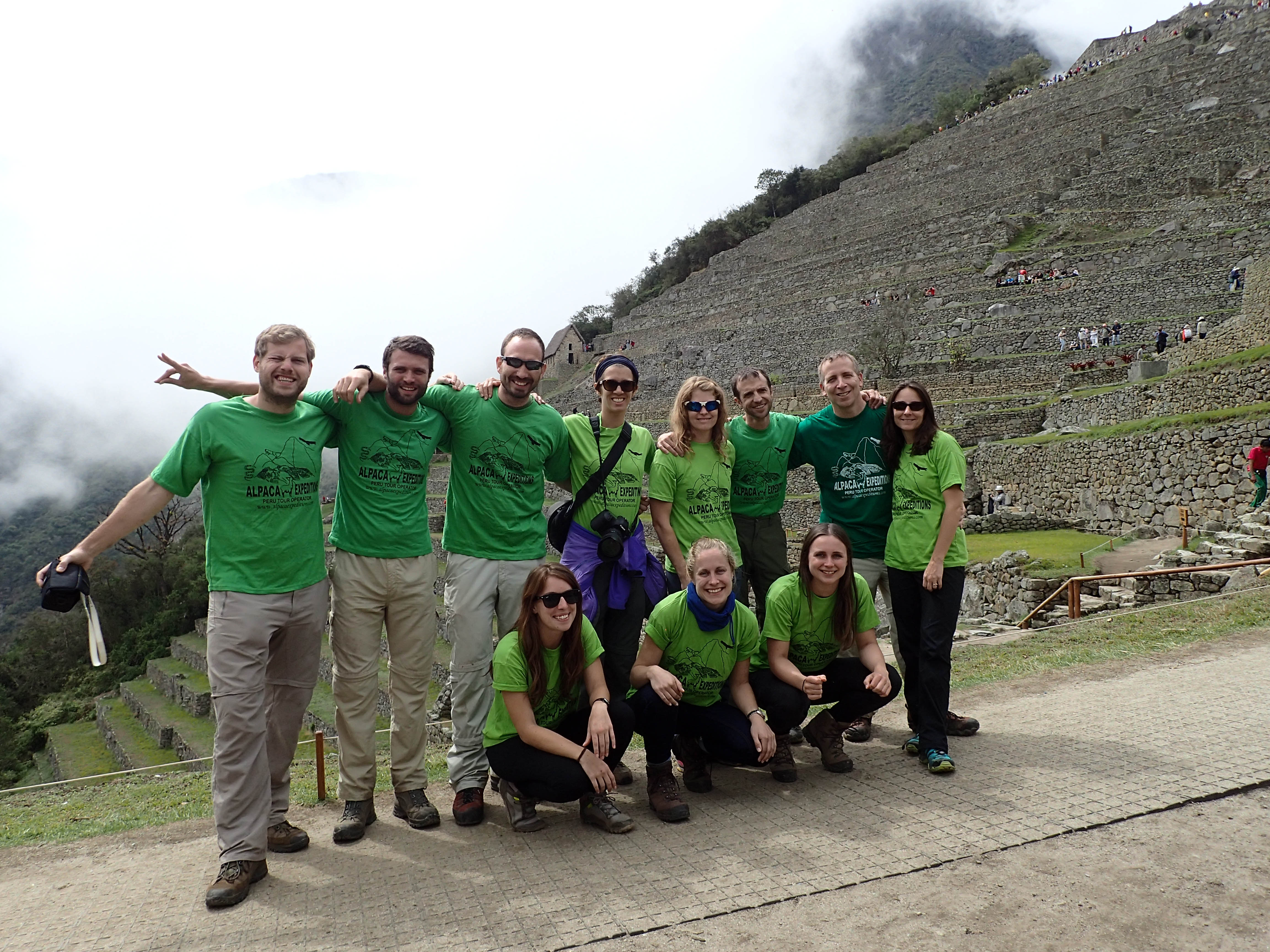 From there, we actually didn’t have unlimited time to hike to Huayna Picchu, come back and take the classic tourist picture in Machu Picchu and then catch the bus down to Aguas Calientes so we could get the right train home. And we couldn’t miss any of it because we had a plane to catch the next day!
From there, we actually didn’t have unlimited time to hike to Huayna Picchu, come back and take the classic tourist picture in Machu Picchu and then catch the bus down to Aguas Calientes so we could get the right train home. And we couldn’t miss any of it because we had a plane to catch the next day!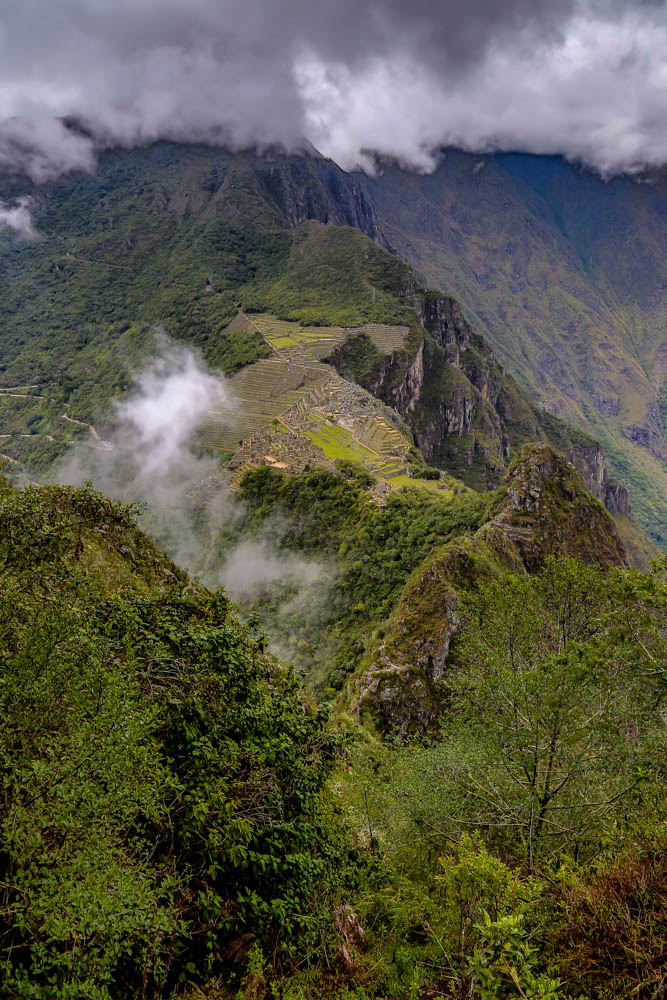 The trail up and down from Huayna Picchu is listed as “dangerous” and they actually make you sign in and out of a guide book to let the park know if you made it back alive, no shit.
The trail up and down from Huayna Picchu is listed as “dangerous” and they actually make you sign in and out of a guide book to let the park know if you made it back alive, no shit.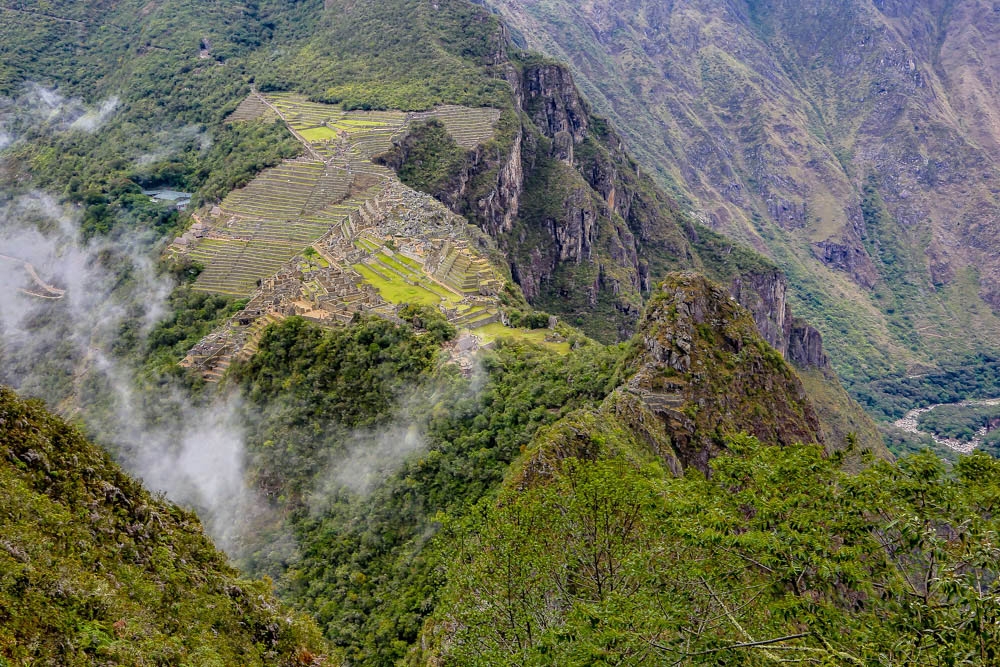 After hiking up to 4600m, hiking up 2720m at Huayna Picchu was a piece of cake. While people beside us huffed and puffed and talked about going into cardiac arrest, we kept a brisk pace upwards.
After hiking up to 4600m, hiking up 2720m at Huayna Picchu was a piece of cake. While people beside us huffed and puffed and talked about going into cardiac arrest, we kept a brisk pace upwards.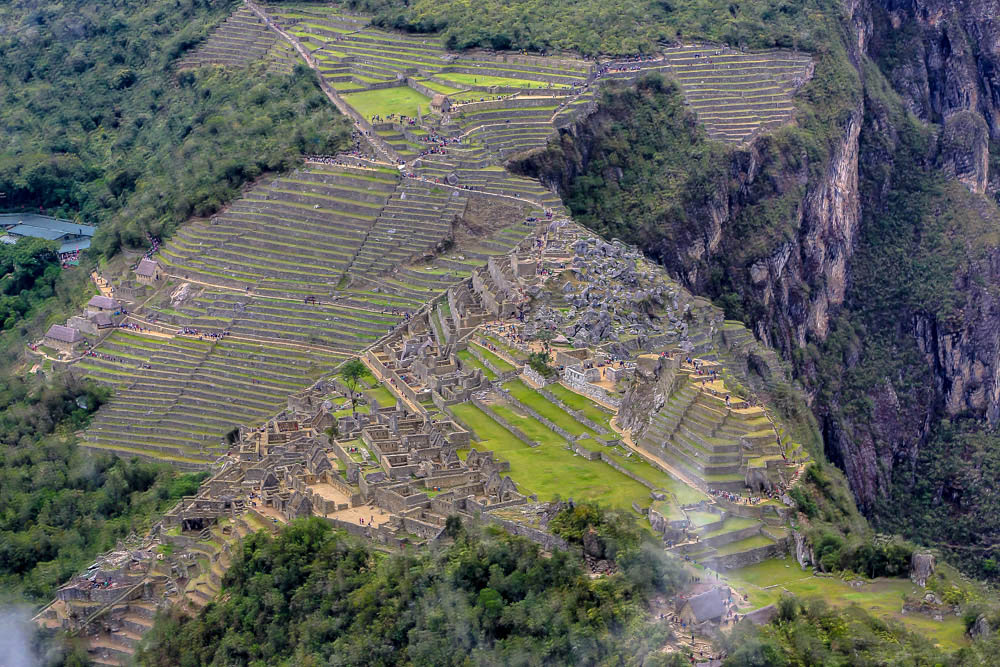 After waiting for the clouds to clear a little, it started raining on the way down. They actually do trick you a little, because the nice, big steps are on the way up, and the tiny narrow, your-foot-barely-fits-on-them steps were what we had with the rain on the way down.
After waiting for the clouds to clear a little, it started raining on the way down. They actually do trick you a little, because the nice, big steps are on the way up, and the tiny narrow, your-foot-barely-fits-on-them steps were what we had with the rain on the way down.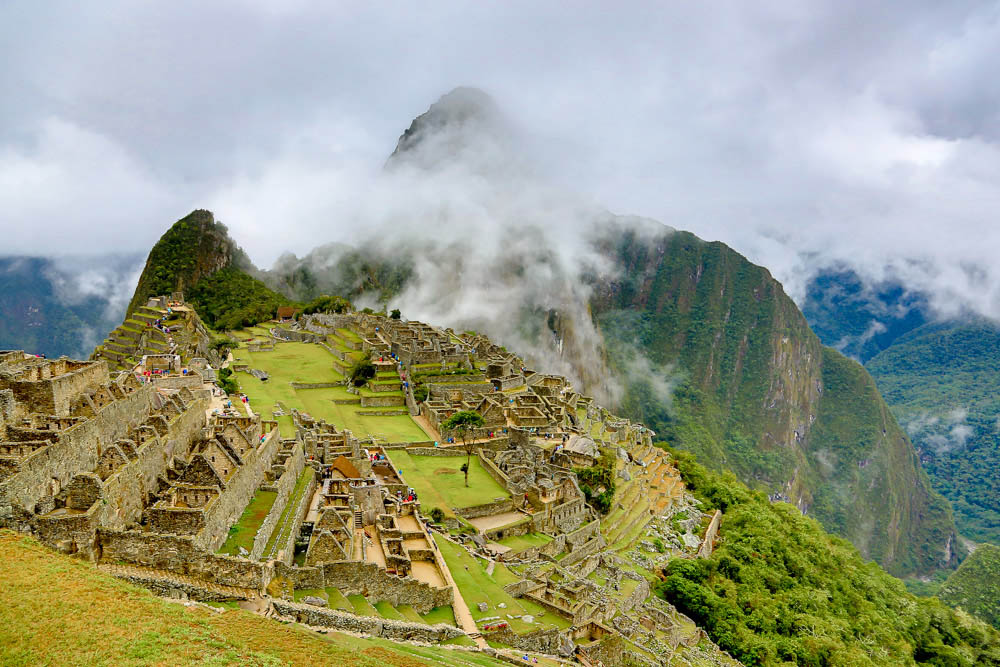 After trying to wait for the rain to pass for 20-30 minutes, we just gave up and headed to the classic postcard location.
After trying to wait for the rain to pass for 20-30 minutes, we just gave up and headed to the classic postcard location.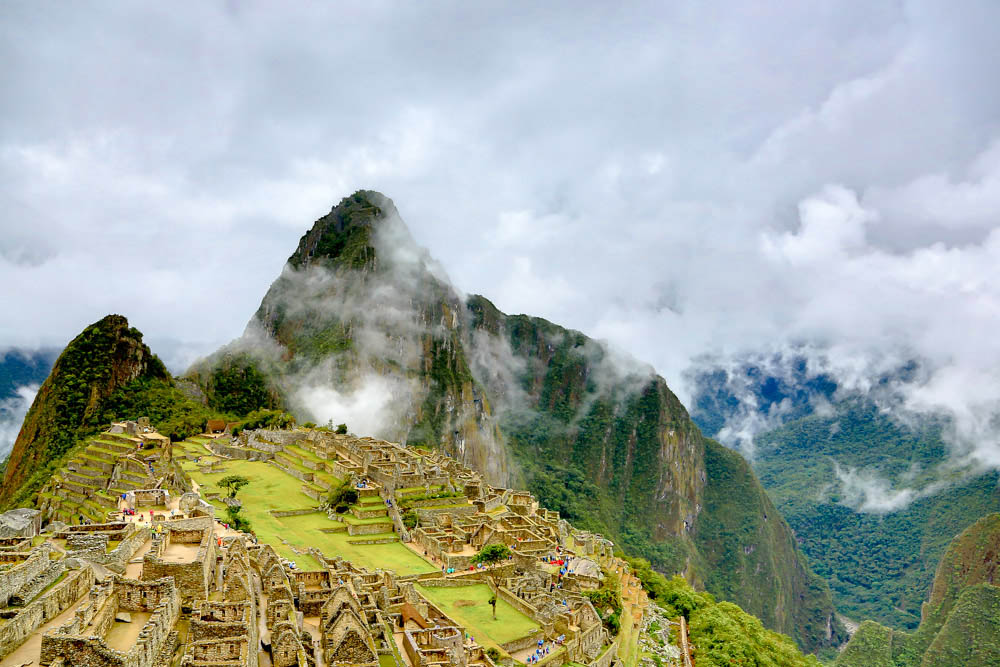 The rain and clouds were pretty badass.
The rain and clouds were pretty badass.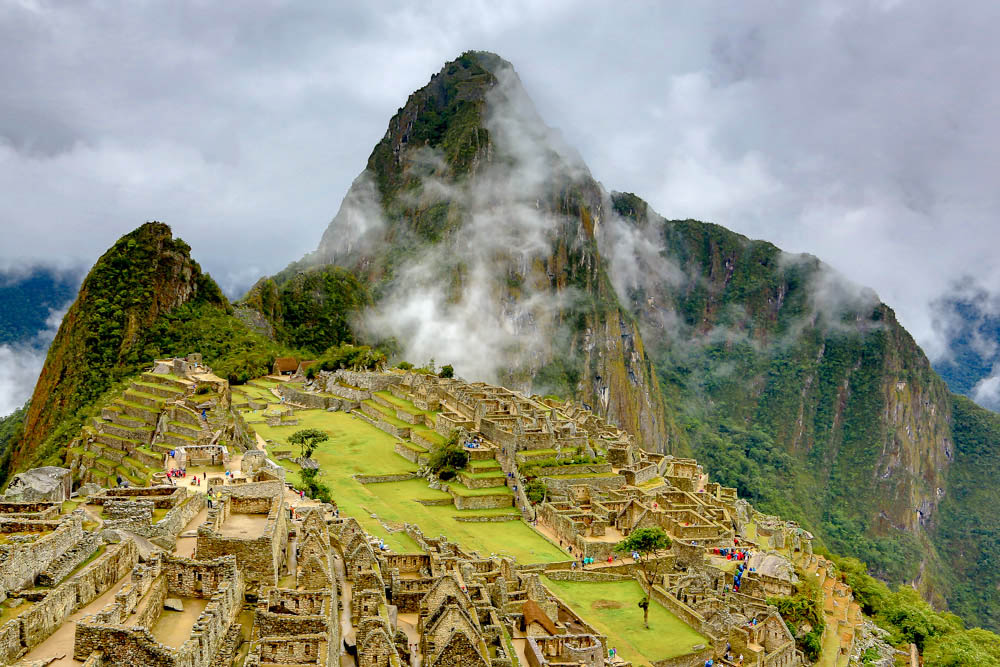 It wasn’t how I pictured seeing Machu Picchu and these photos have been edited quite a bit, but it was still impossible to deny the wonder and awe of such a sacred site even in the rain and fog.
It wasn’t how I pictured seeing Machu Picchu and these photos have been edited quite a bit, but it was still impossible to deny the wonder and awe of such a sacred site even in the rain and fog.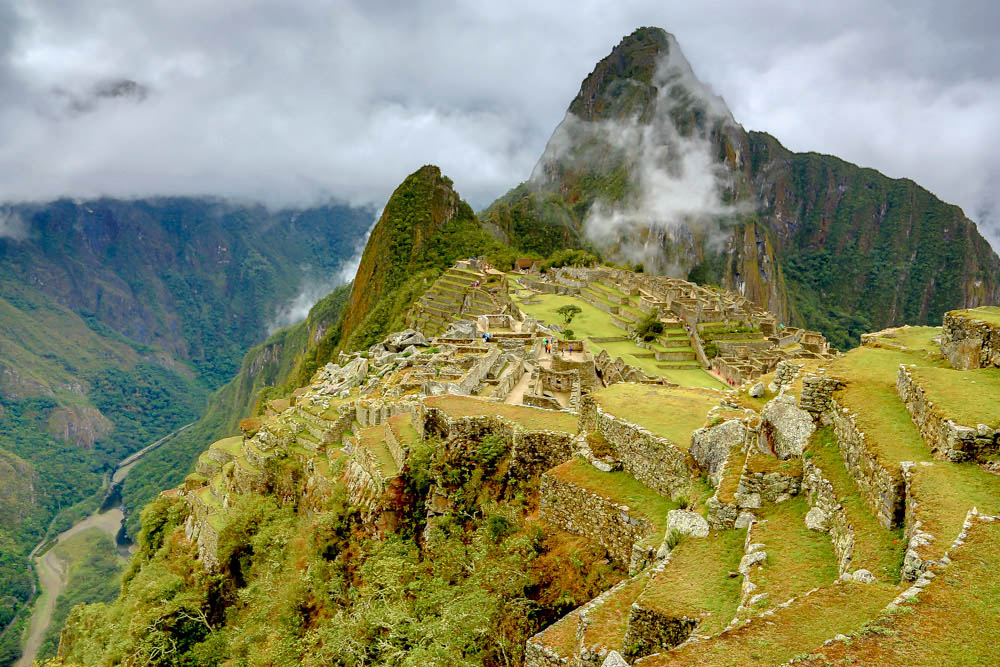 I got the “dark, moody Machu Picchu”, which I guess I deserve. 😛
I got the “dark, moody Machu Picchu”, which I guess I deserve. 😛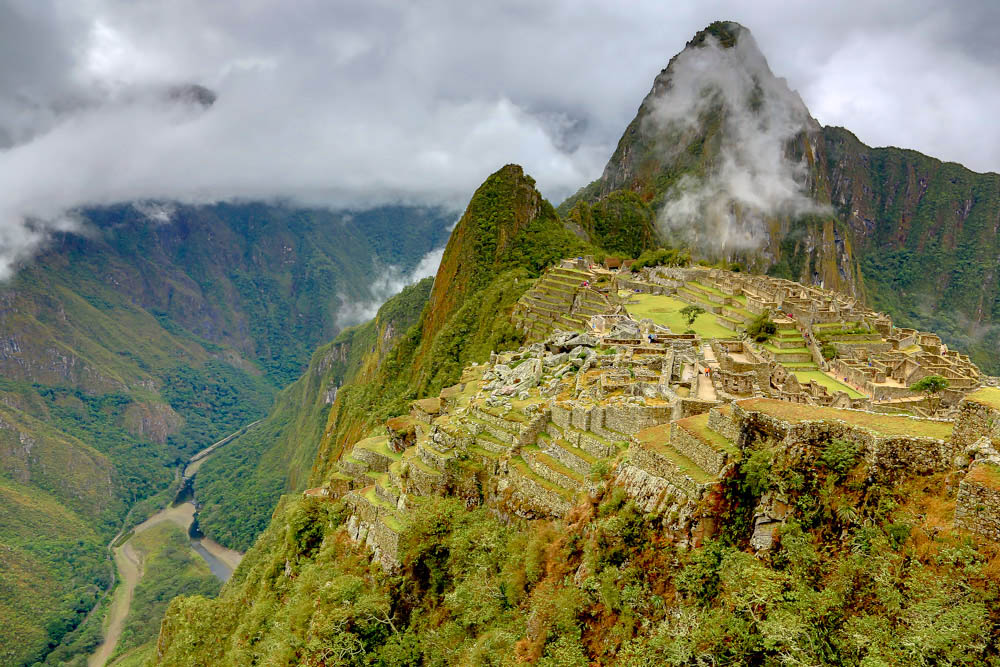
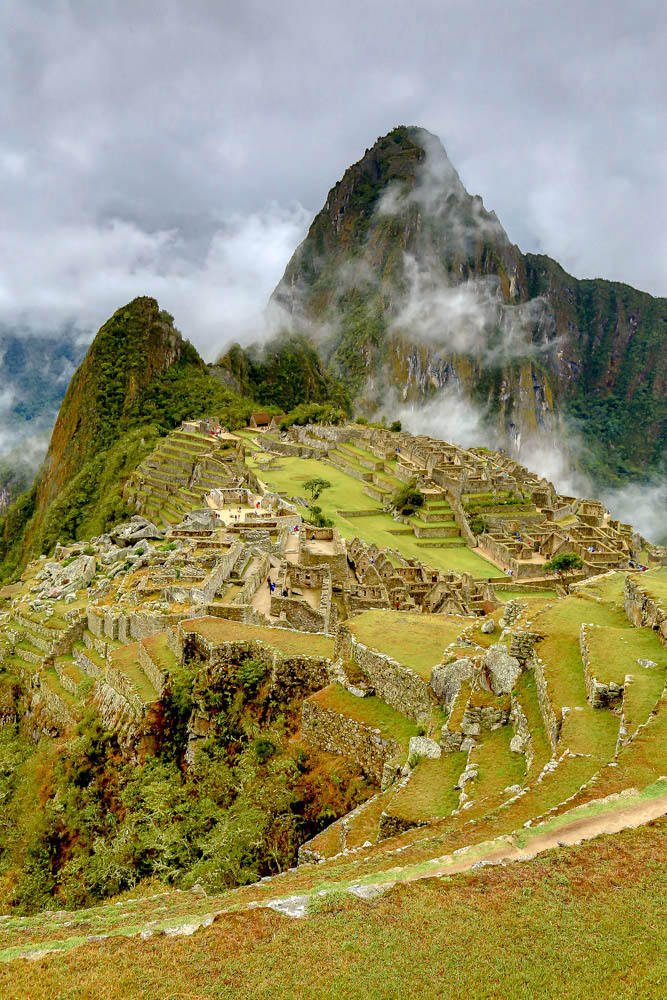
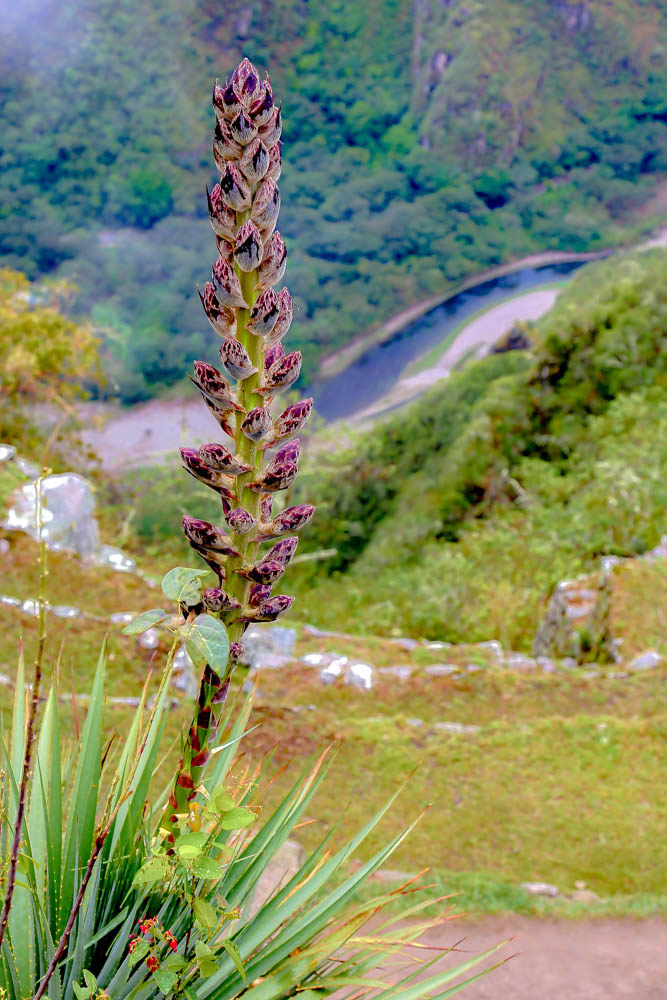
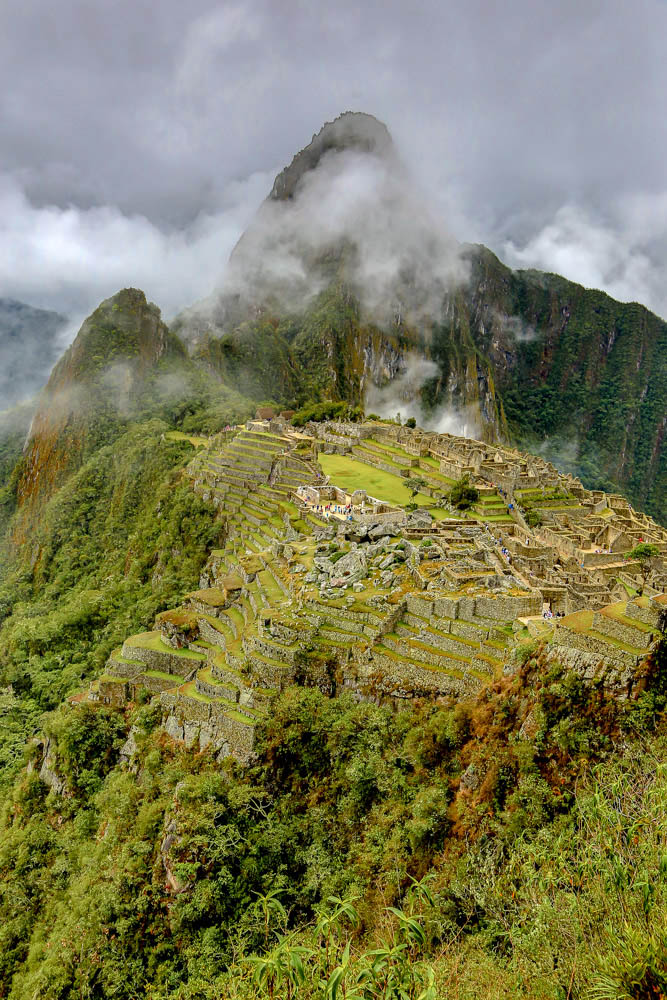 Kay and I didn’t want to go, but we had to get in line for the buses to take us back to town to catch the train, which would be an experience in itself.
Kay and I didn’t want to go, but we had to get in line for the buses to take us back to town to catch the train, which would be an experience in itself.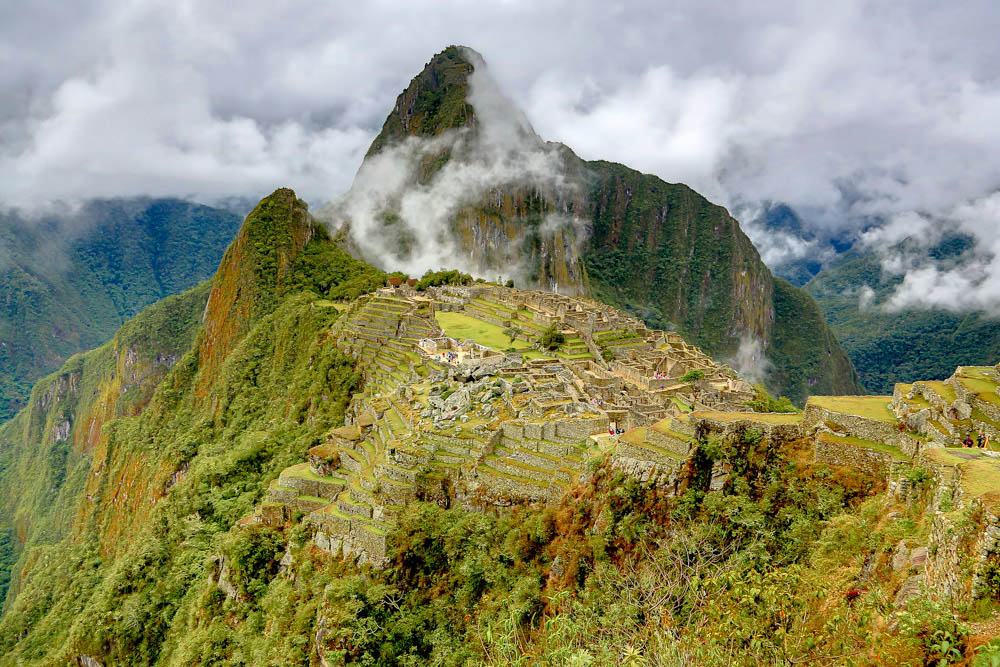
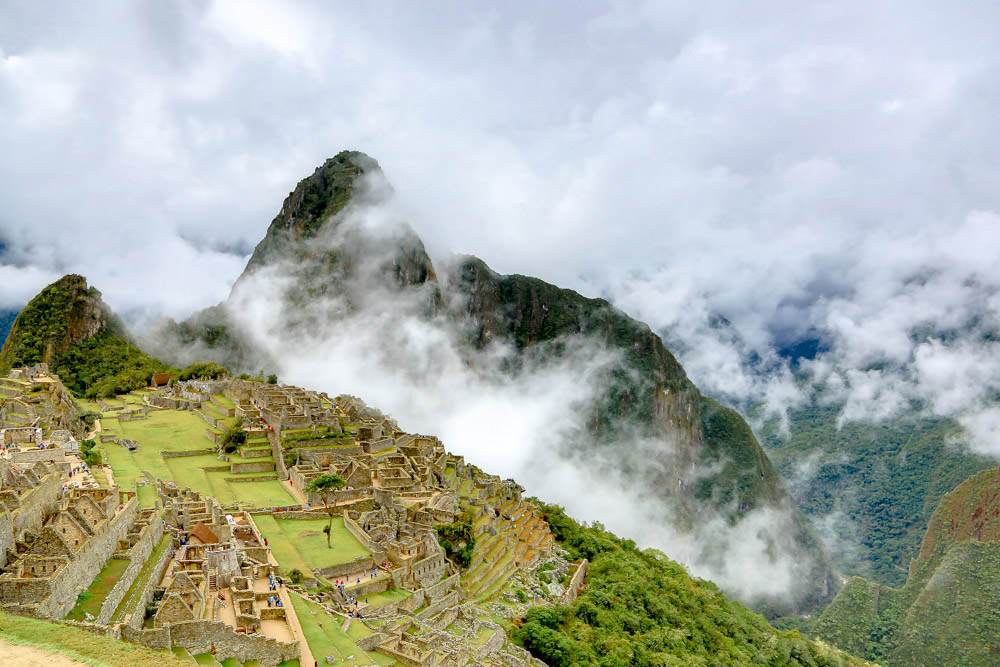 We snapped a few more photos, including some mandatory selfies, before heading back down.
We snapped a few more photos, including some mandatory selfies, before heading back down.
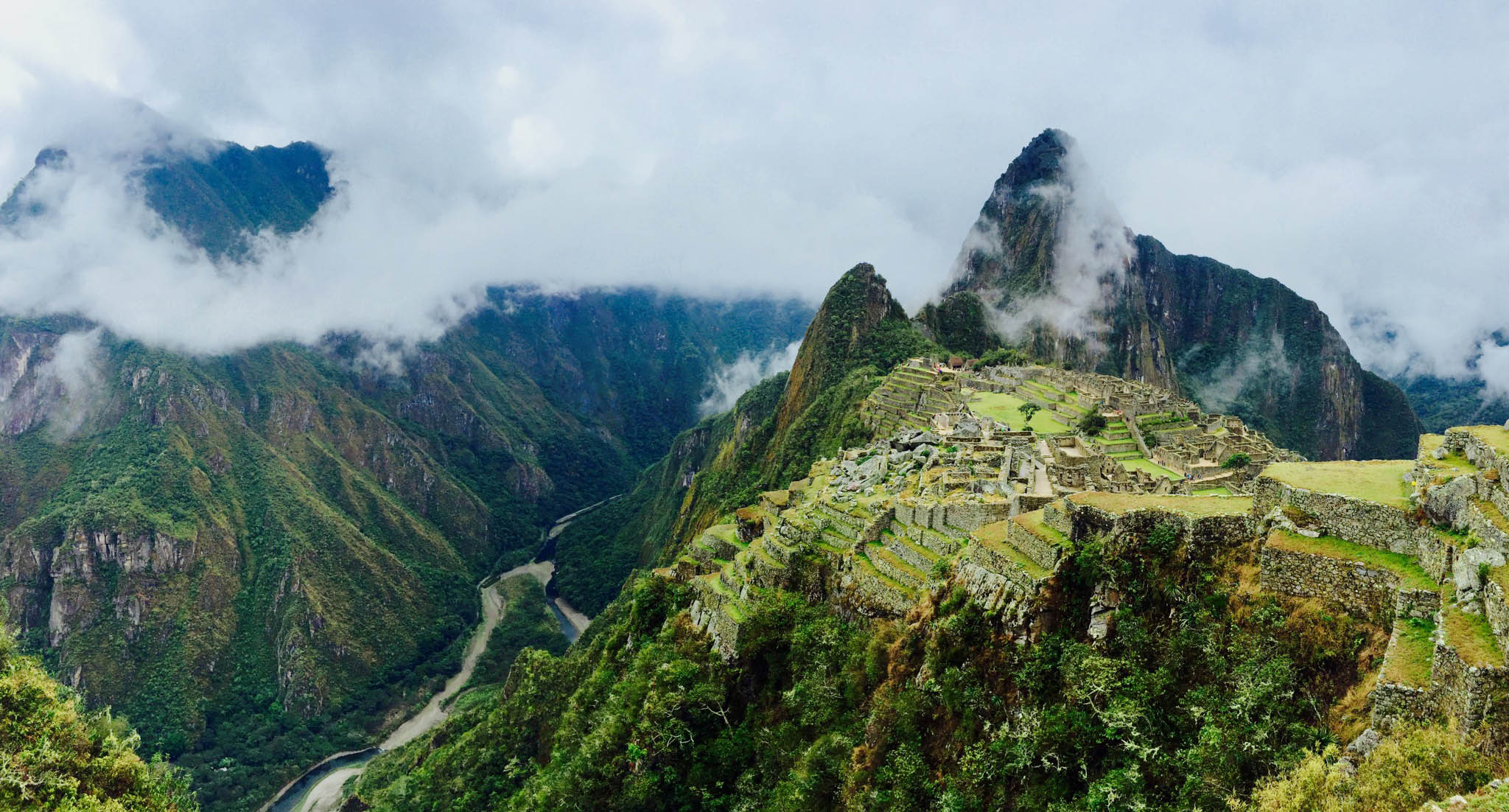
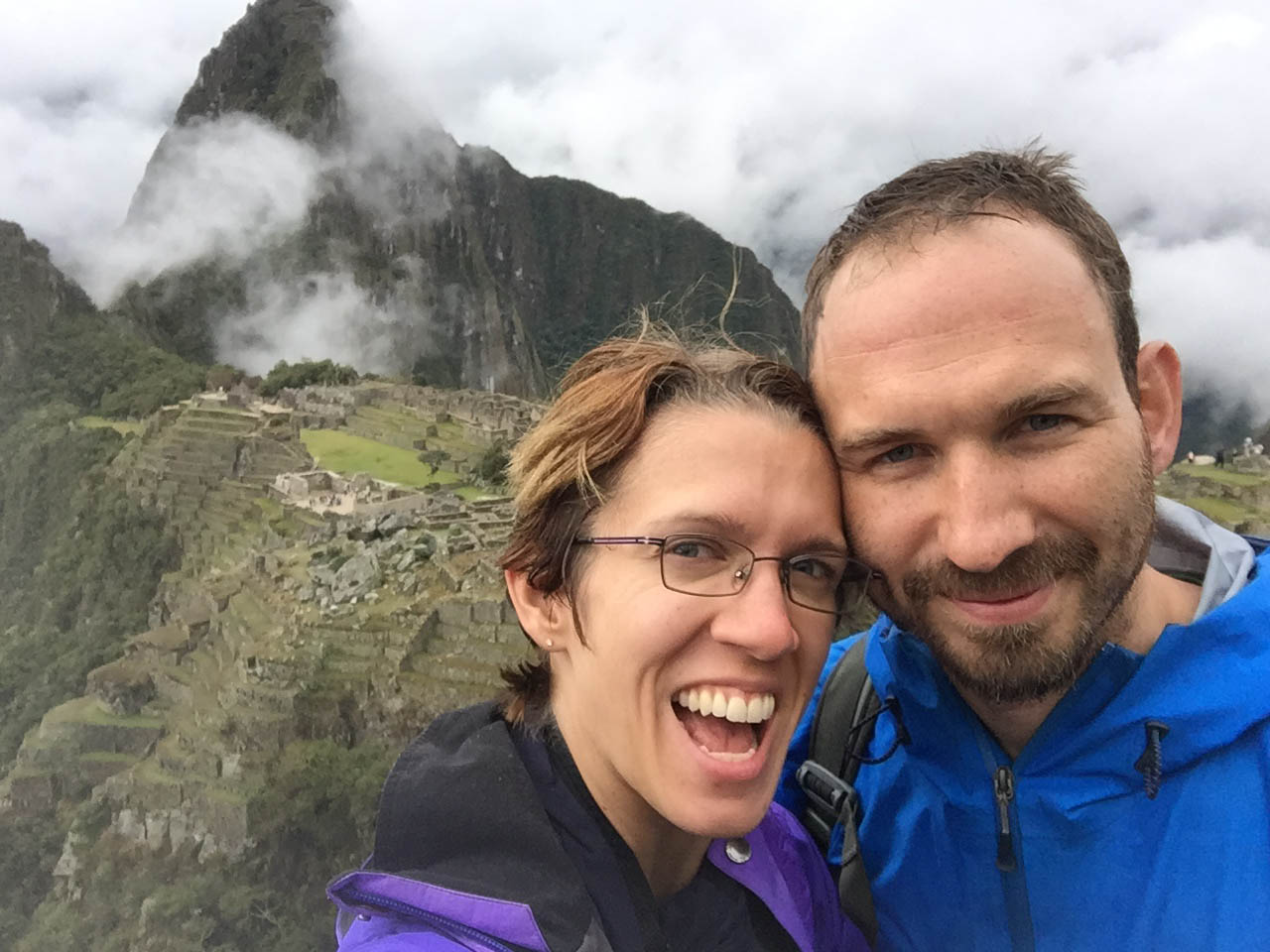 That’s it, Machu Picchu was in the books!
That’s it, Machu Picchu was in the books!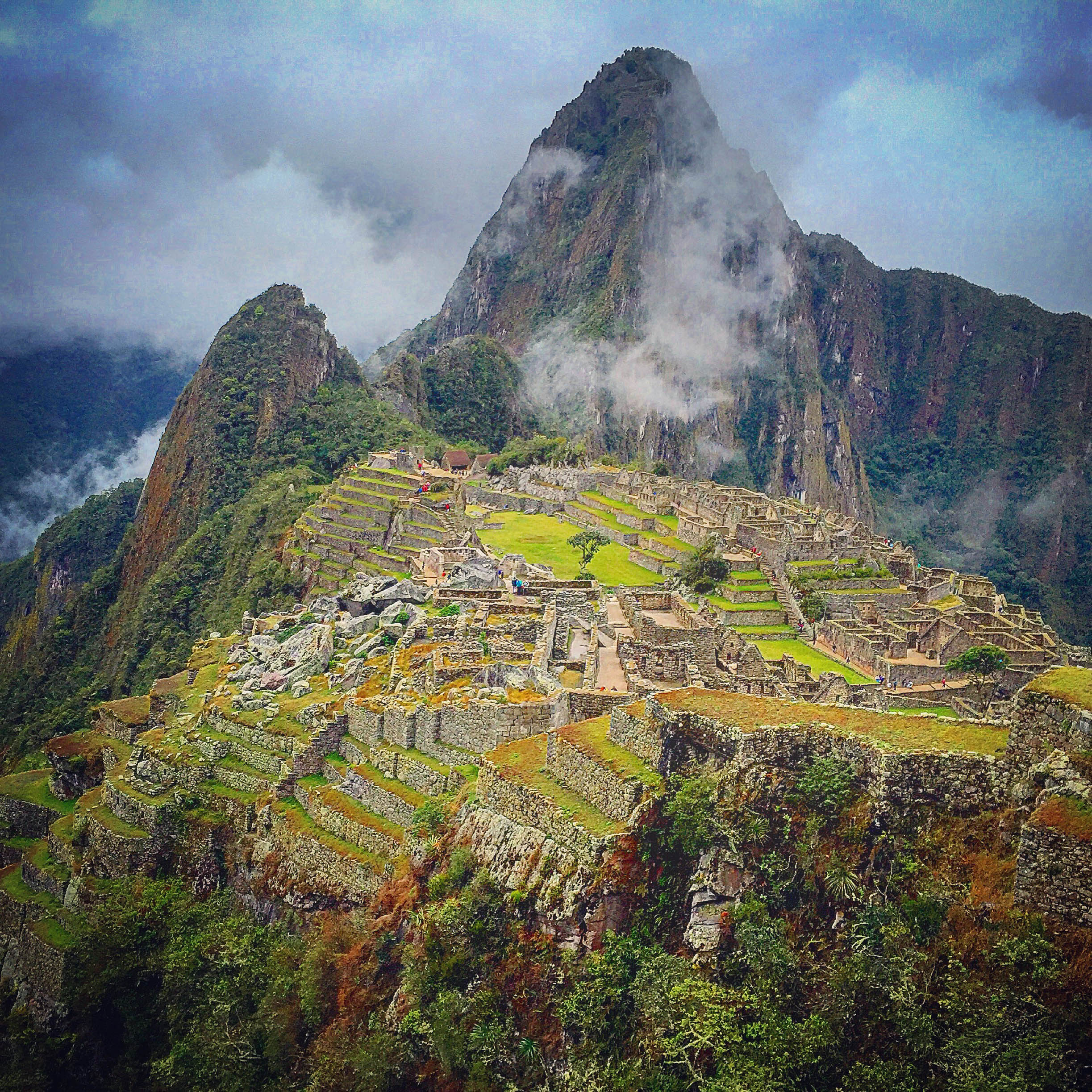 With our biggest ticket crossed off our bucket list, it was time to start the journey home, if only so I could get on a plane to Hong Kong for work. 🙂
With our biggest ticket crossed off our bucket list, it was time to start the journey home, if only so I could get on a plane to Hong Kong for work. 🙂
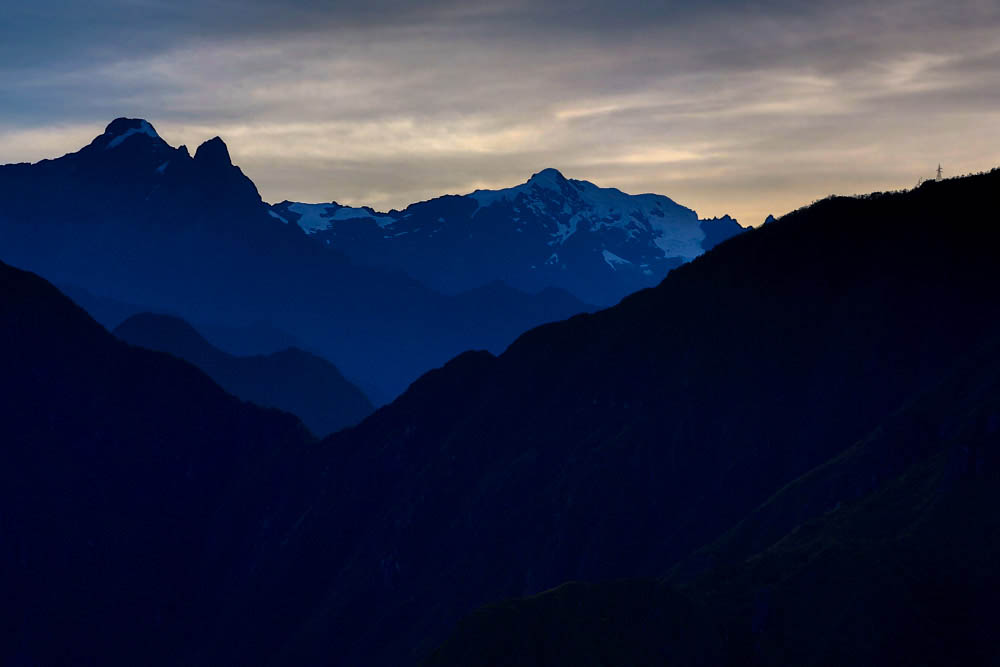
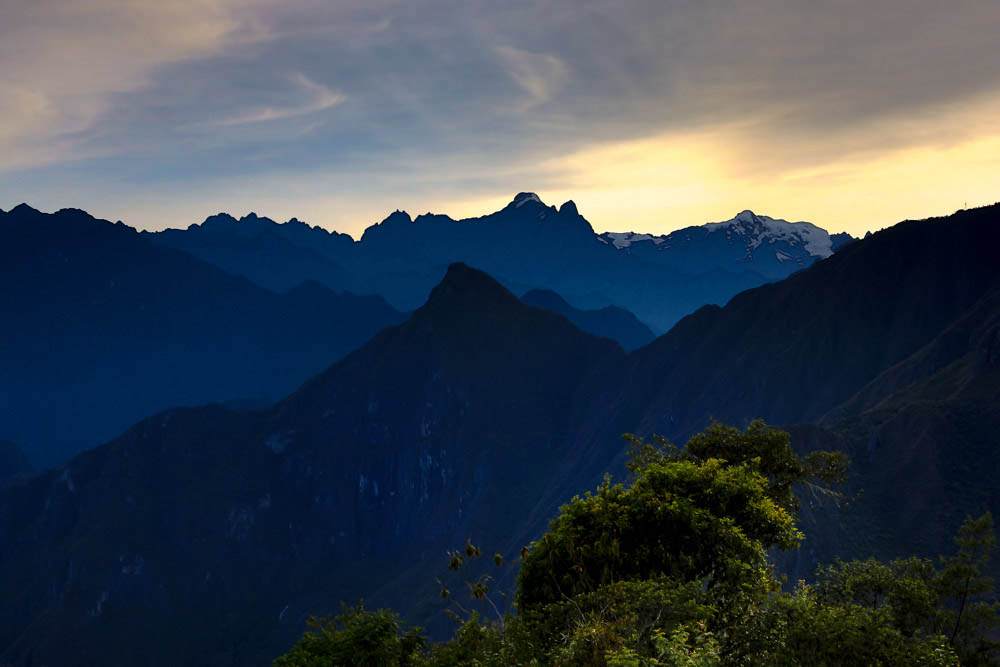
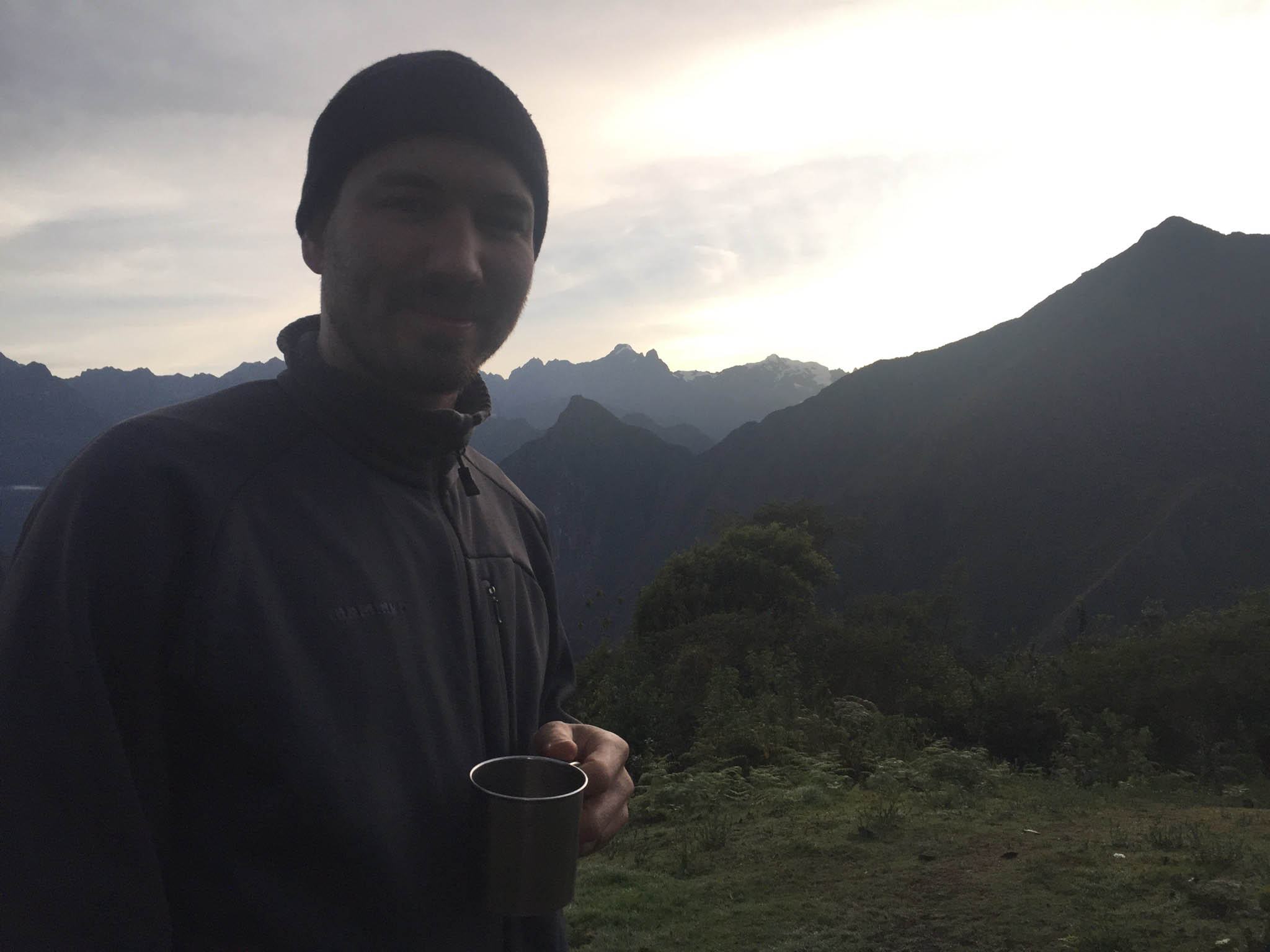

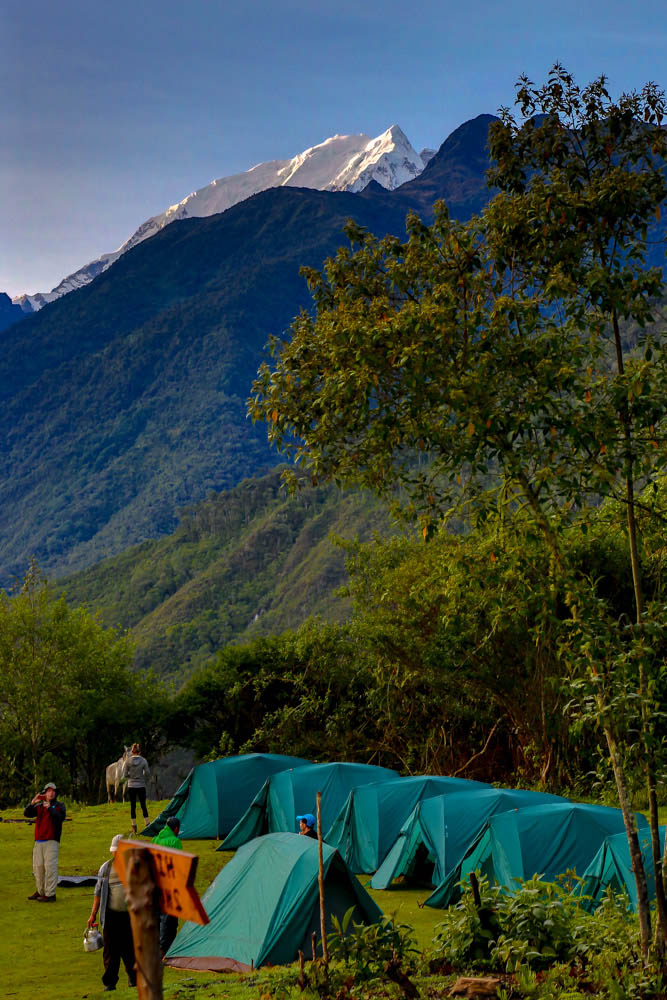
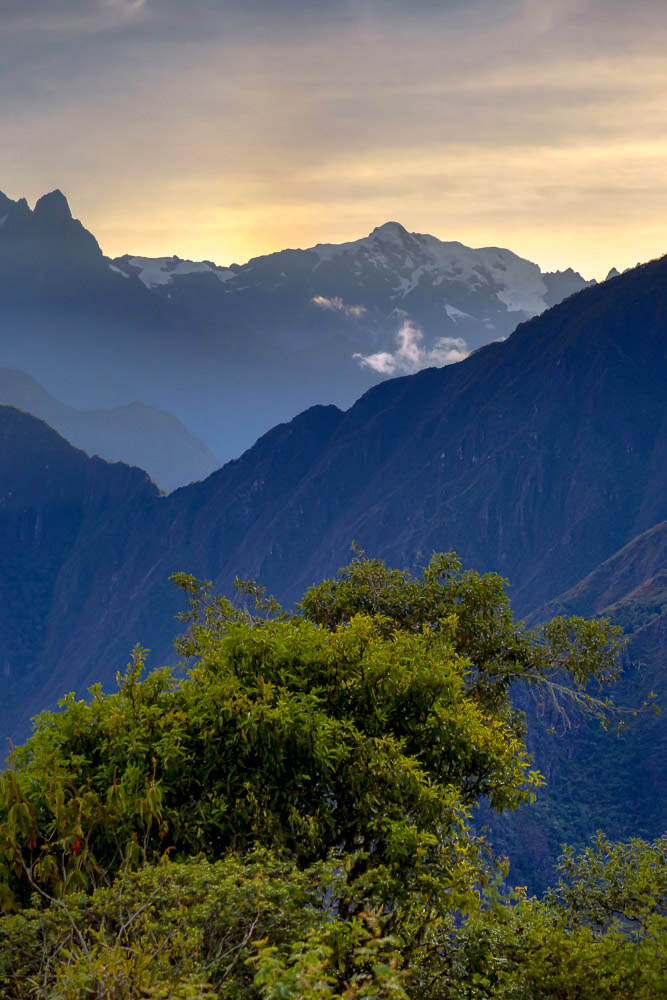
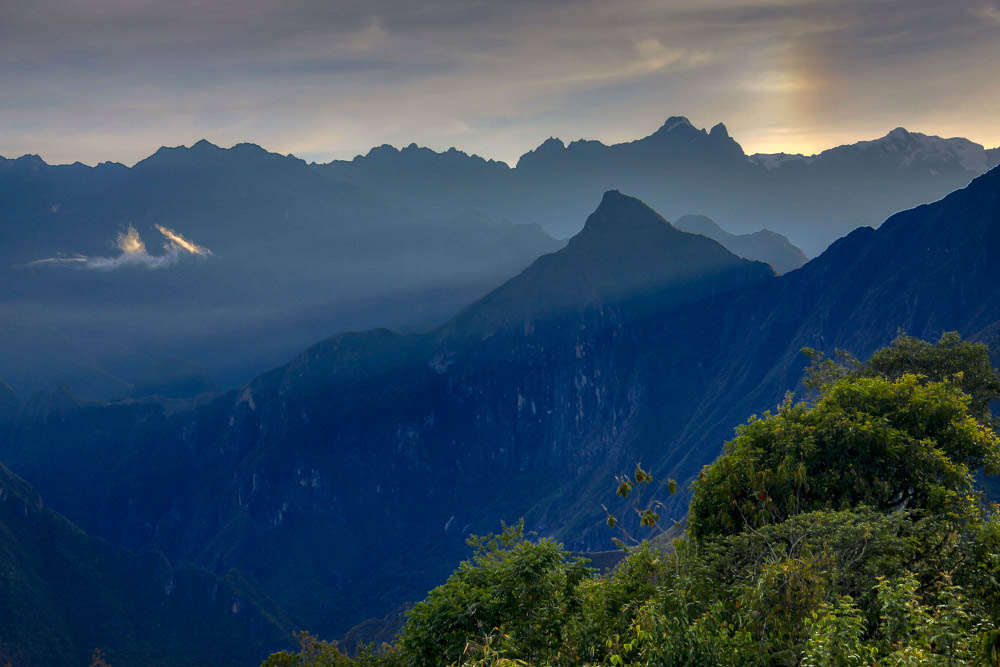

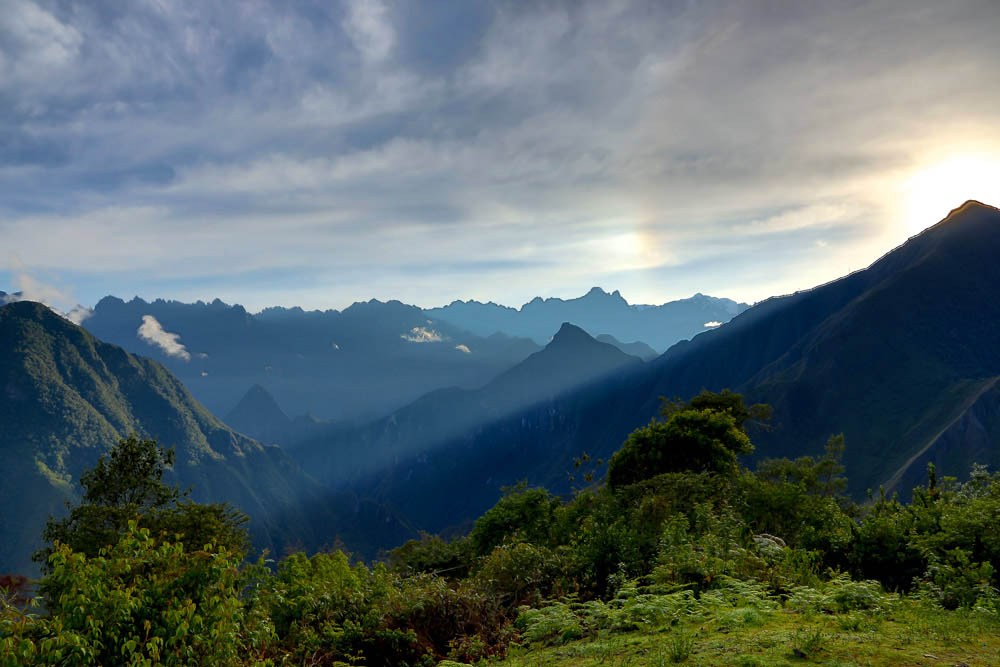
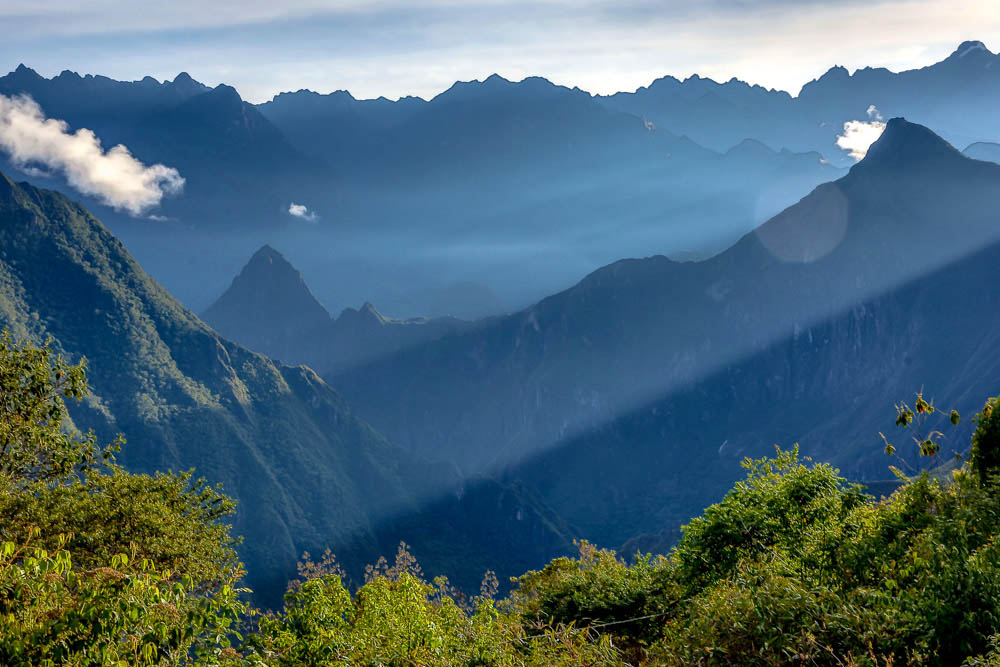

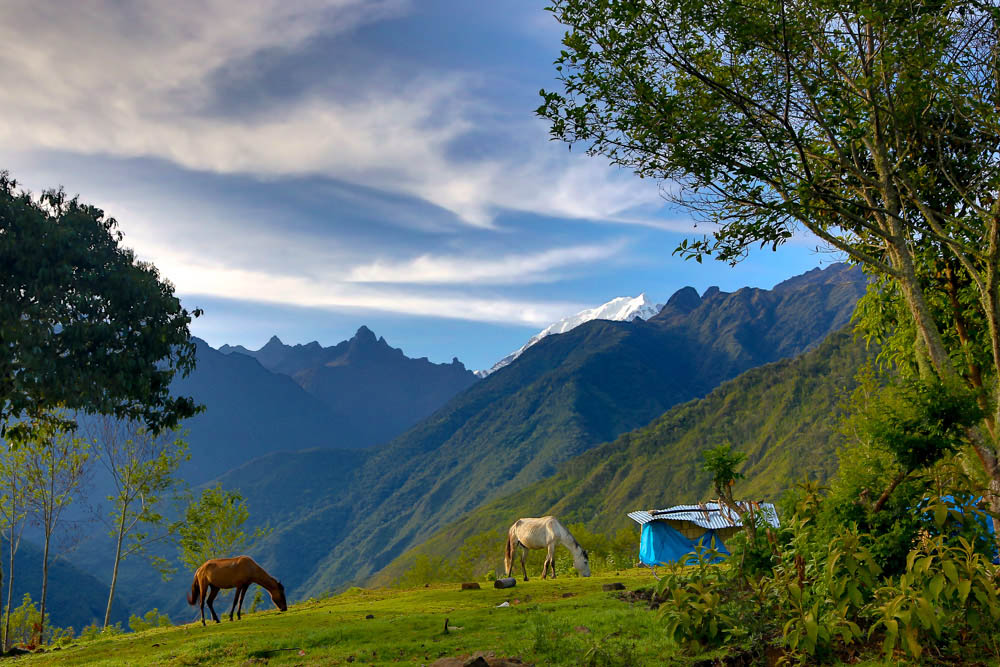
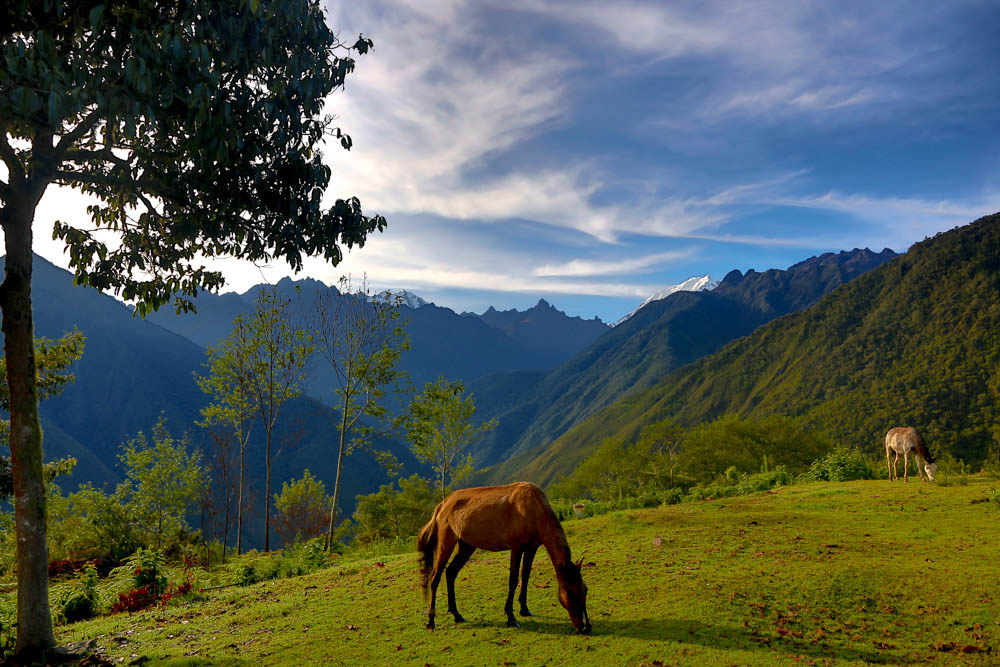
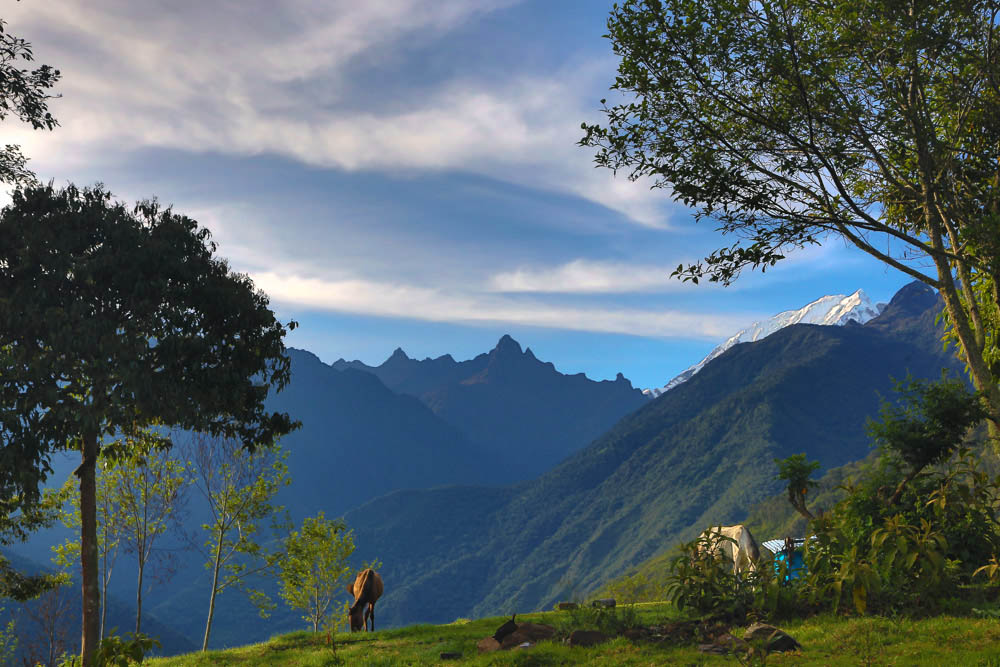
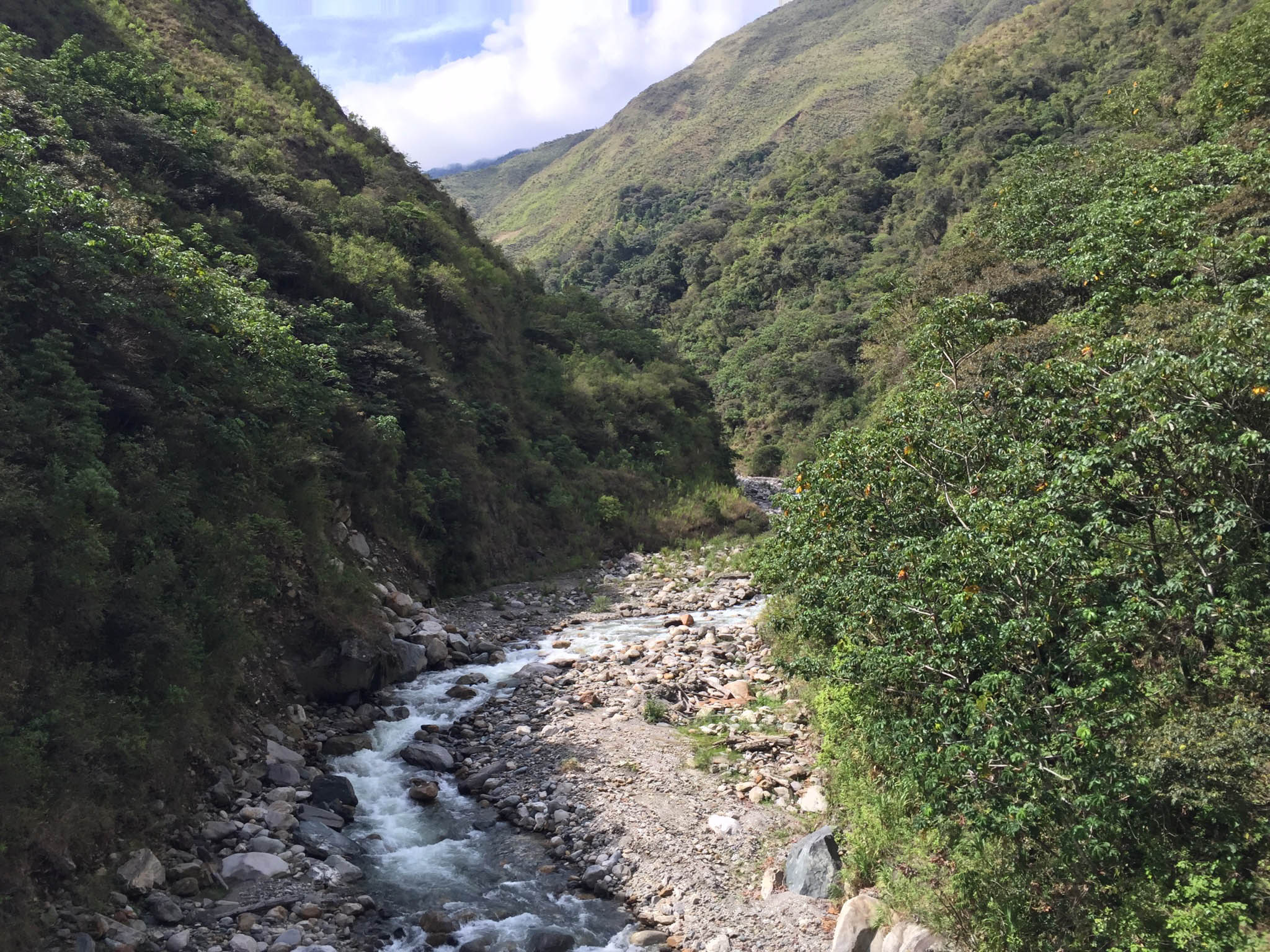
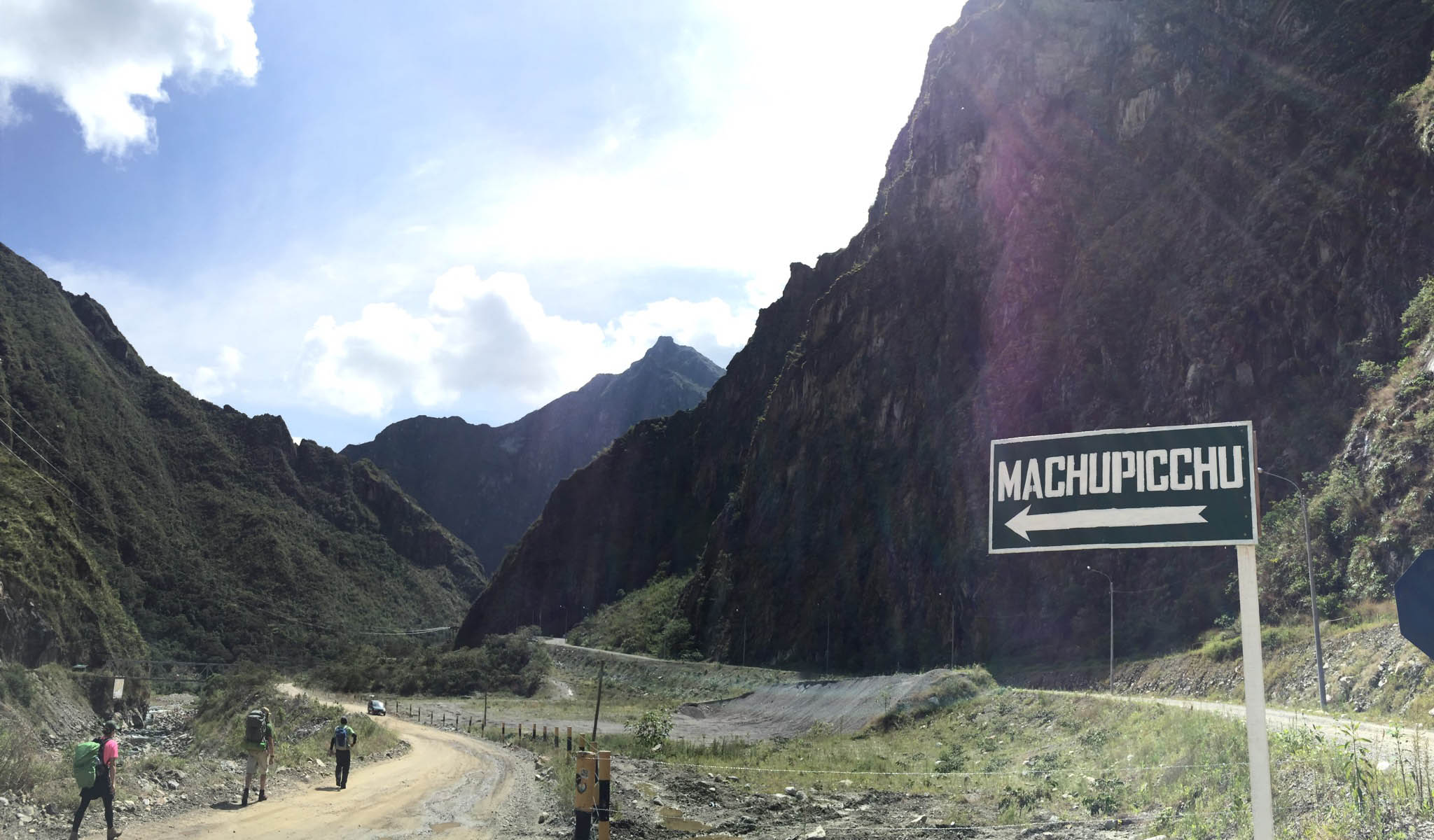


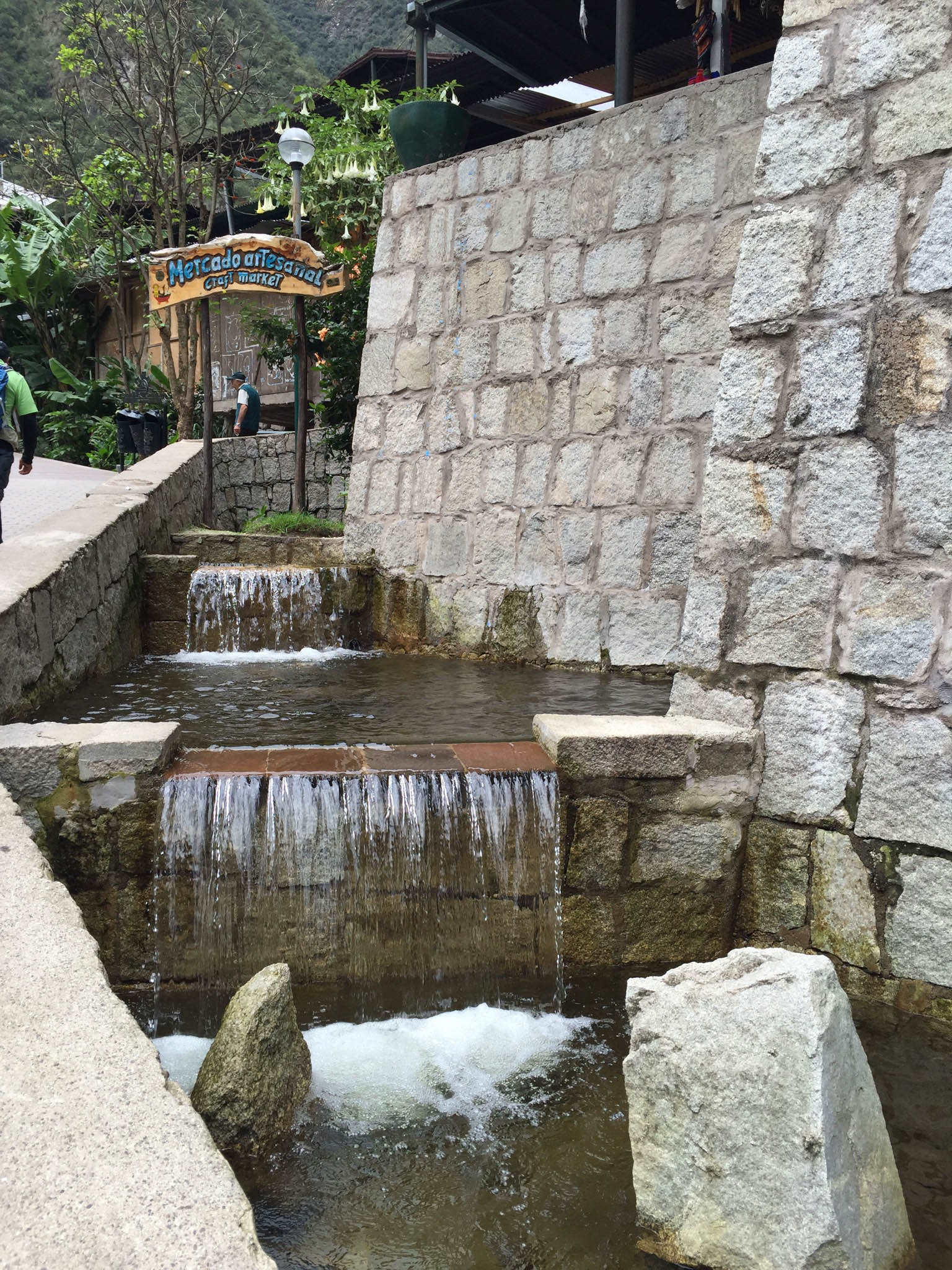
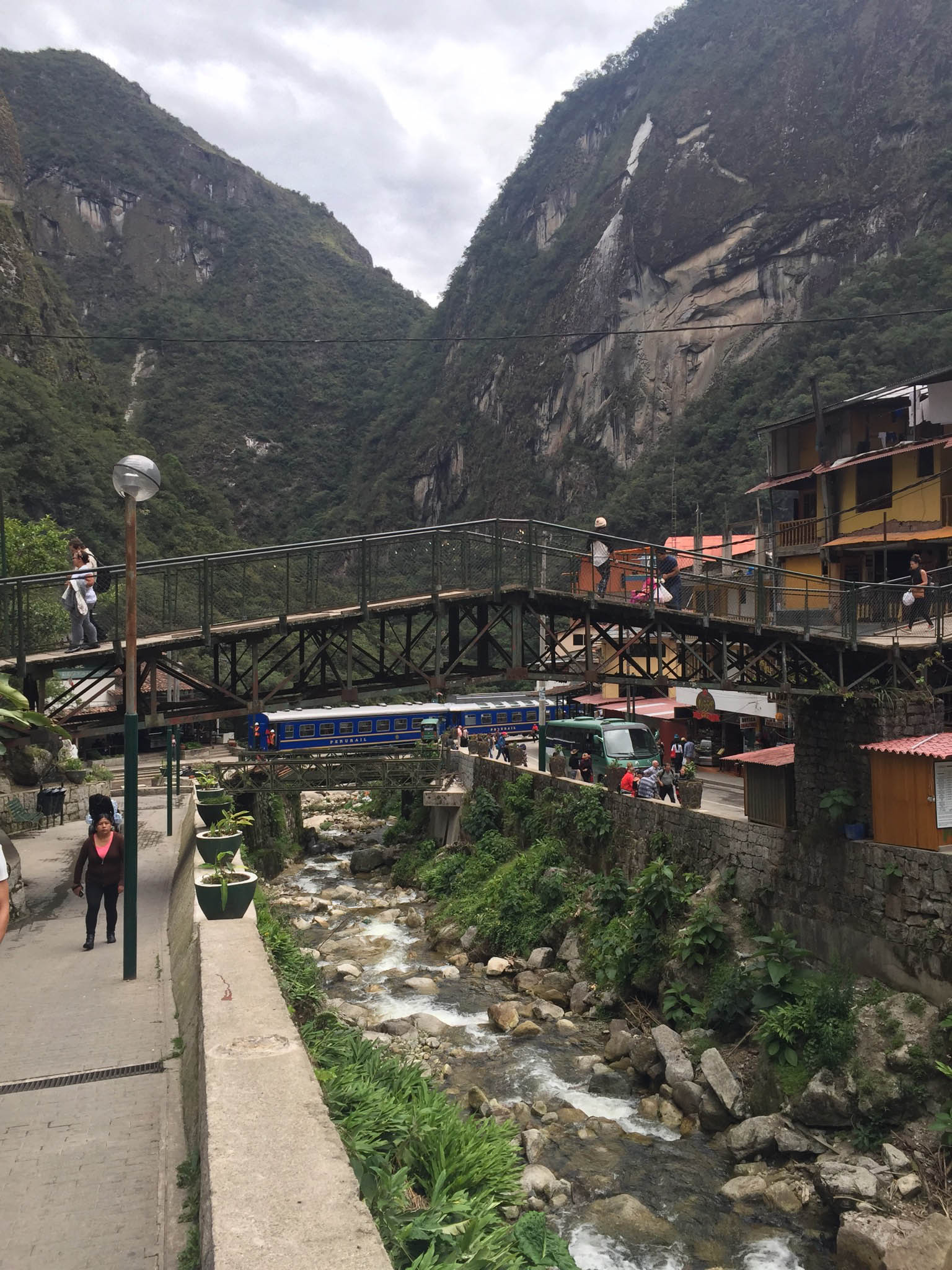
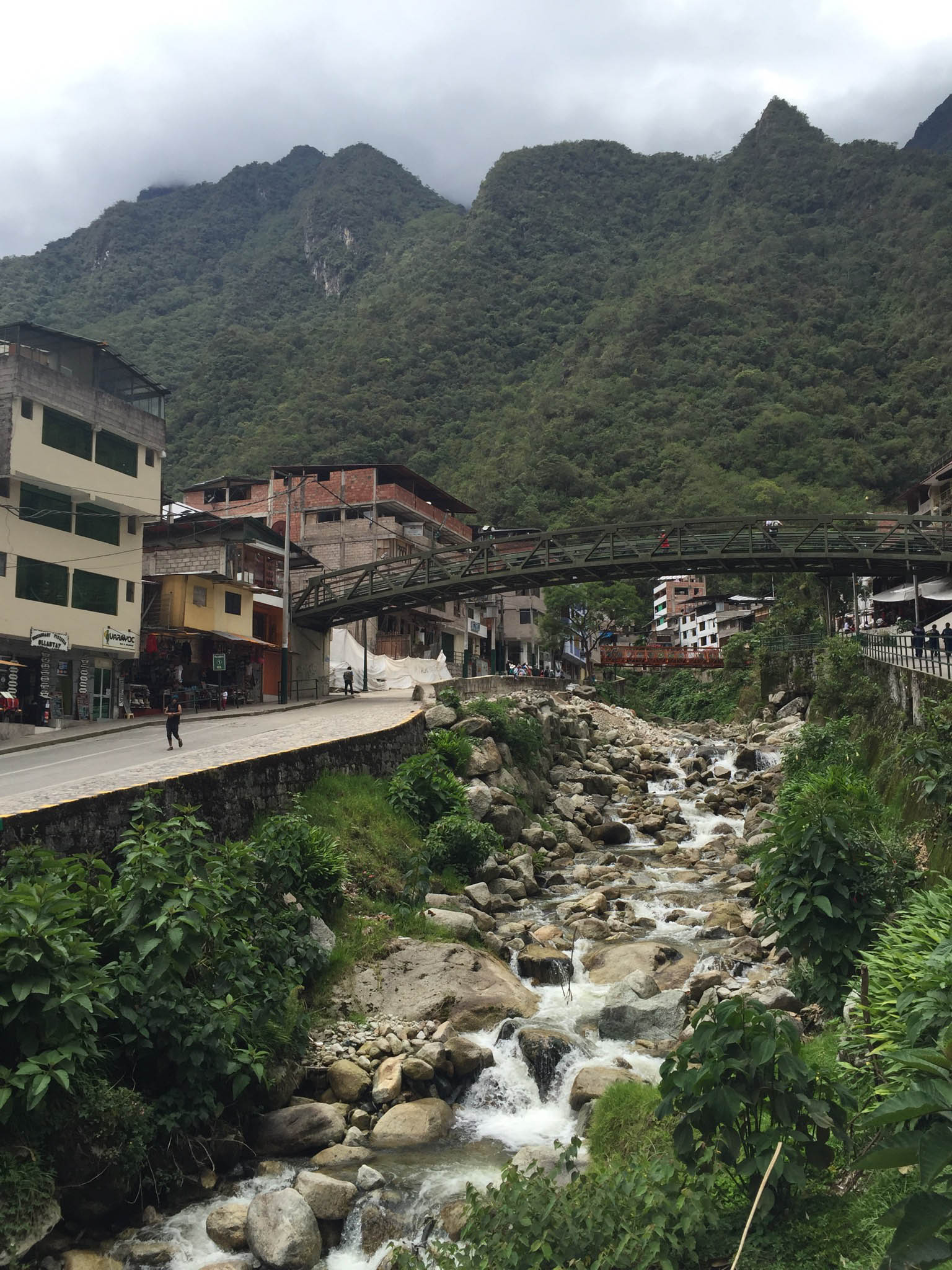
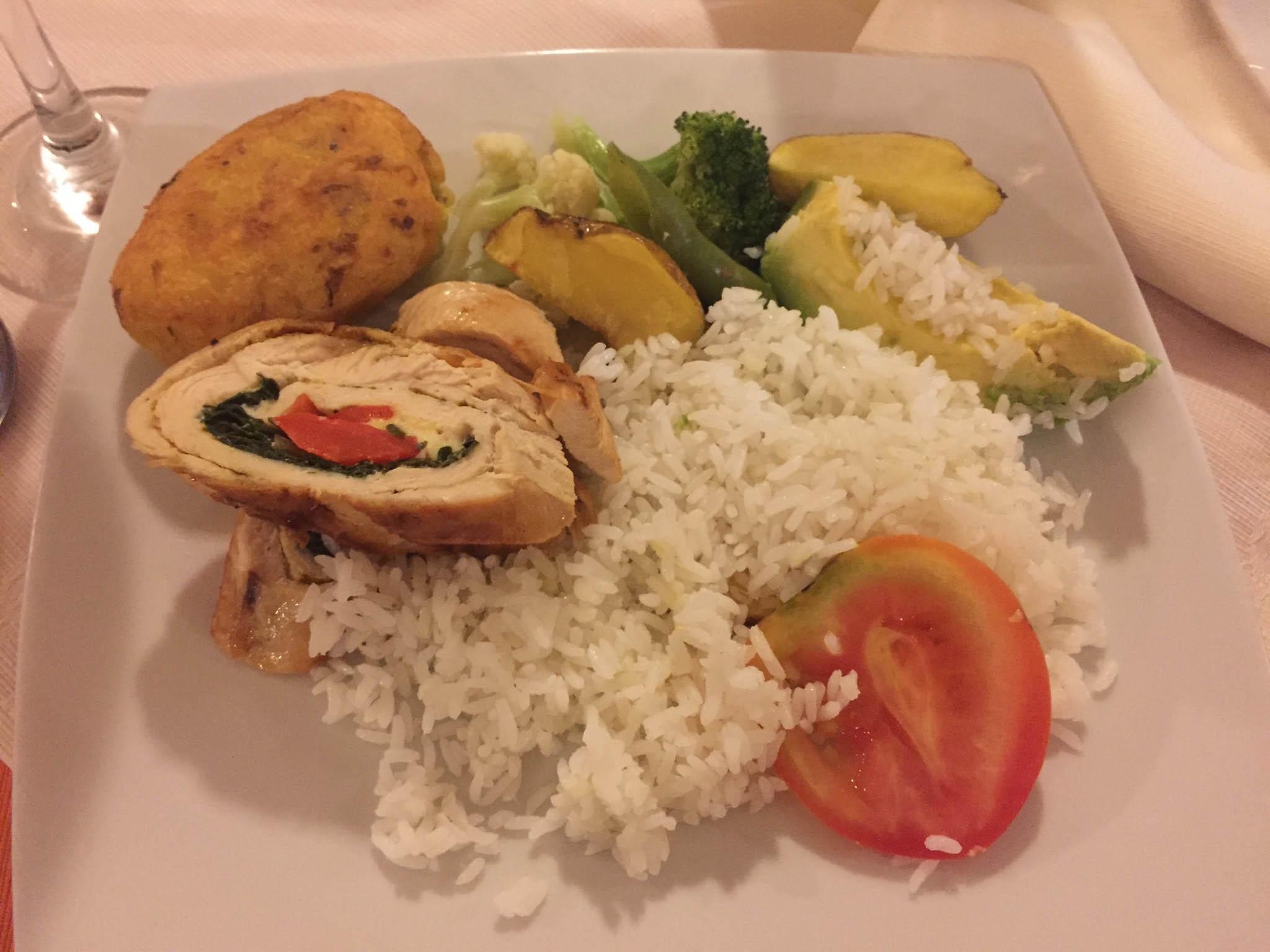

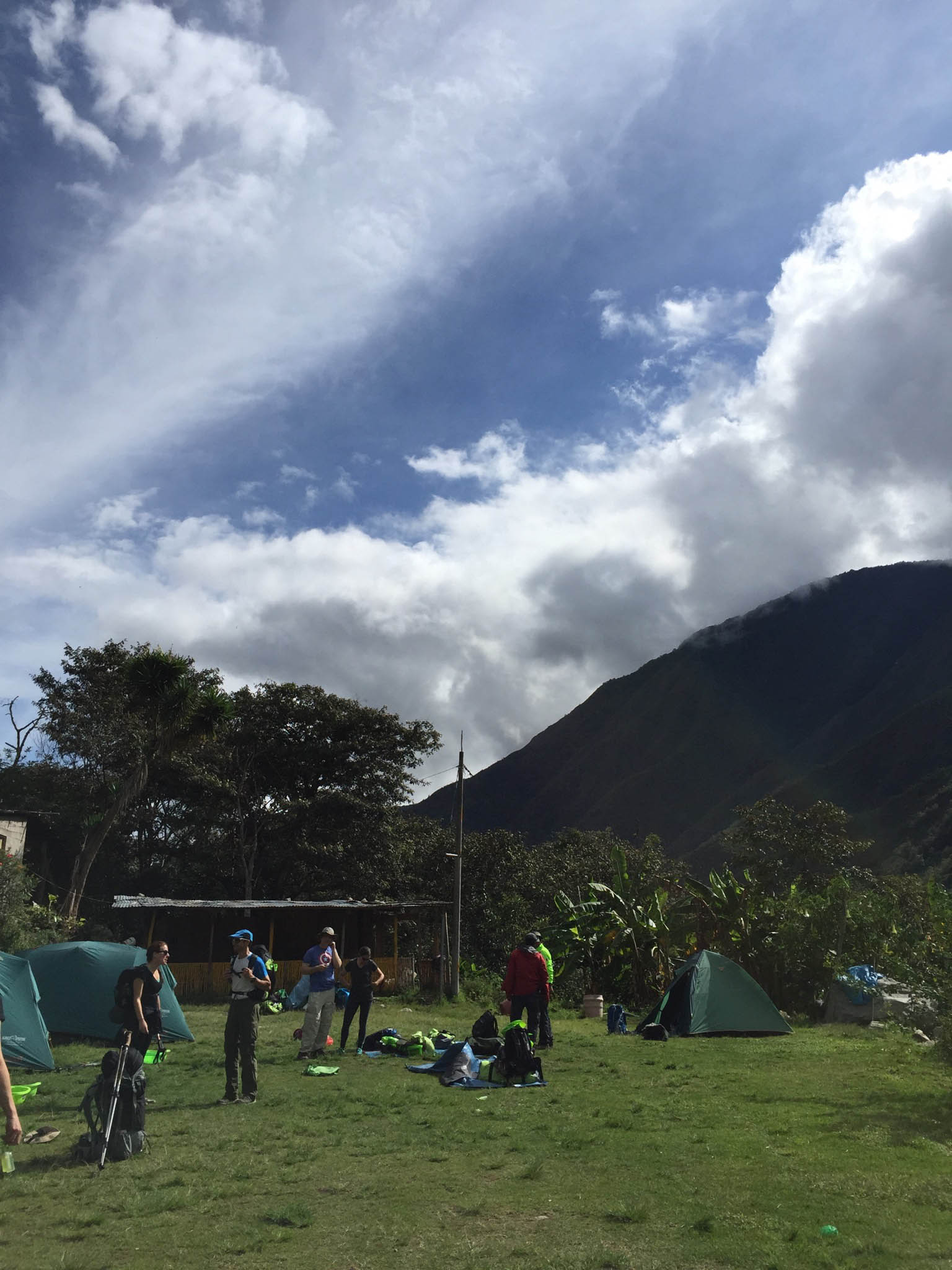
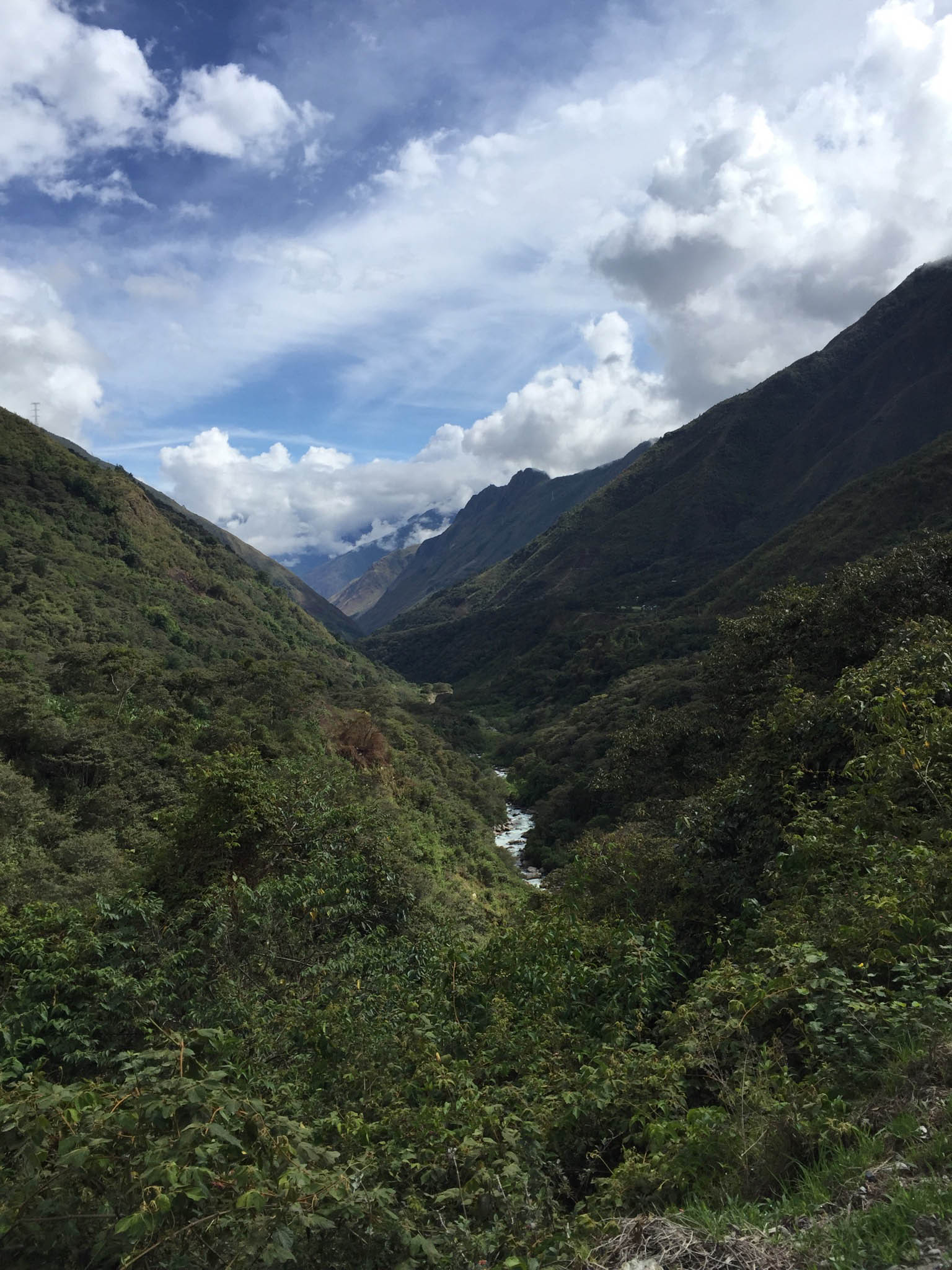 After a couple hours’ hike, with a little more rain, we landed at a “real Starbucks” as they said, where we learned about how coffee beans are harvested, shelled, and roasted over a hot fire in local kitchens.
After a couple hours’ hike, with a little more rain, we landed at a “real Starbucks” as they said, where we learned about how coffee beans are harvested, shelled, and roasted over a hot fire in local kitchens. It was hard not to notice the kitchen was full of guinea pigs, which our guide explained that many families keep guinea pigs in the kitchen where it is warm and then they eat them from time to time.
It was hard not to notice the kitchen was full of guinea pigs, which our guide explained that many families keep guinea pigs in the kitchen where it is warm and then they eat them from time to time.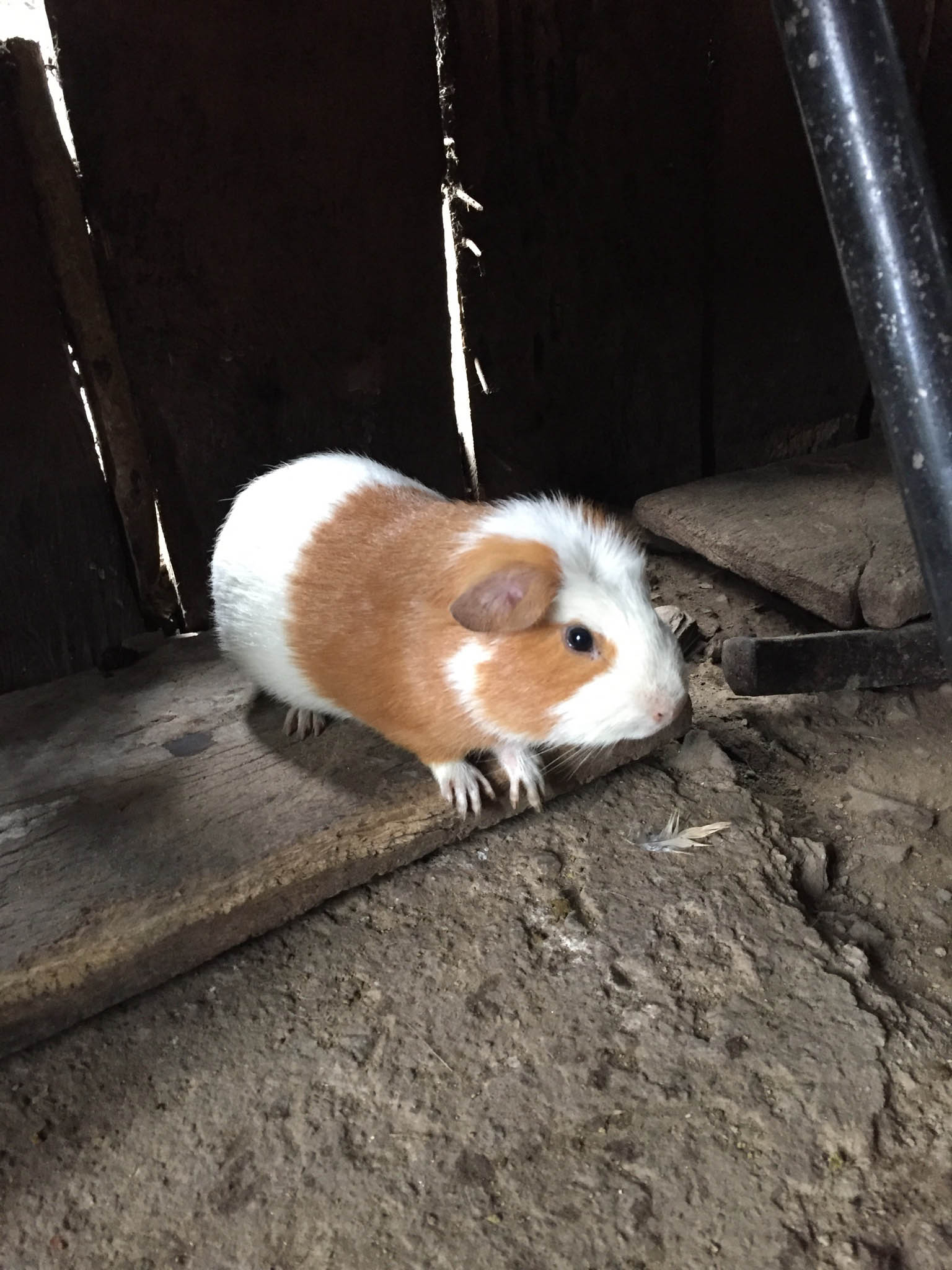 They were sooo cute and made this adorable, very odd squeaking noise for food when we fed them. There’s a video further down in case you want to hear. 🙂
They were sooo cute and made this adorable, very odd squeaking noise for food when we fed them. There’s a video further down in case you want to hear. 🙂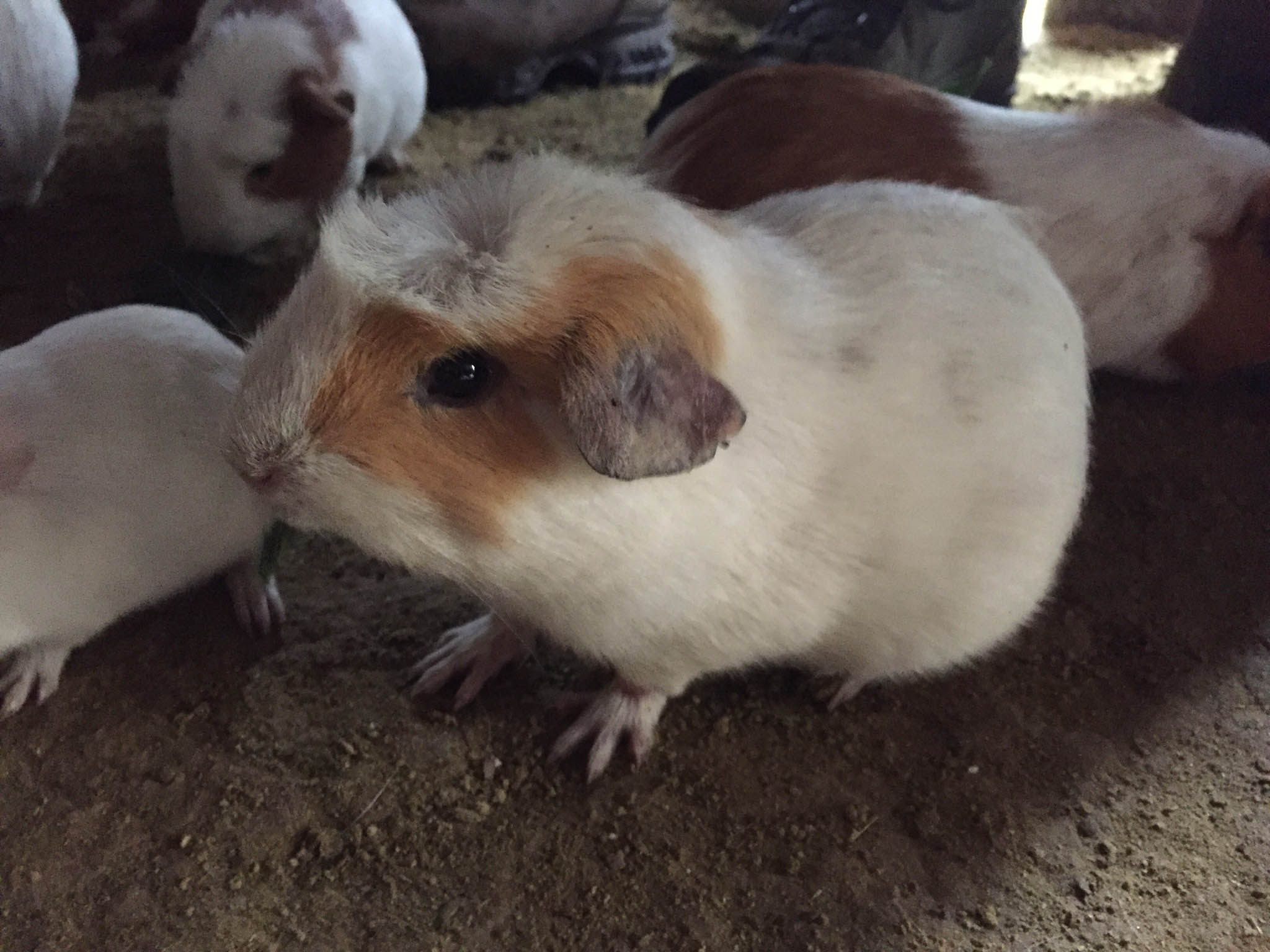 I only felt moderately guilty for having eaten one of these little guys in Puno.
I only felt moderately guilty for having eaten one of these little guys in Puno.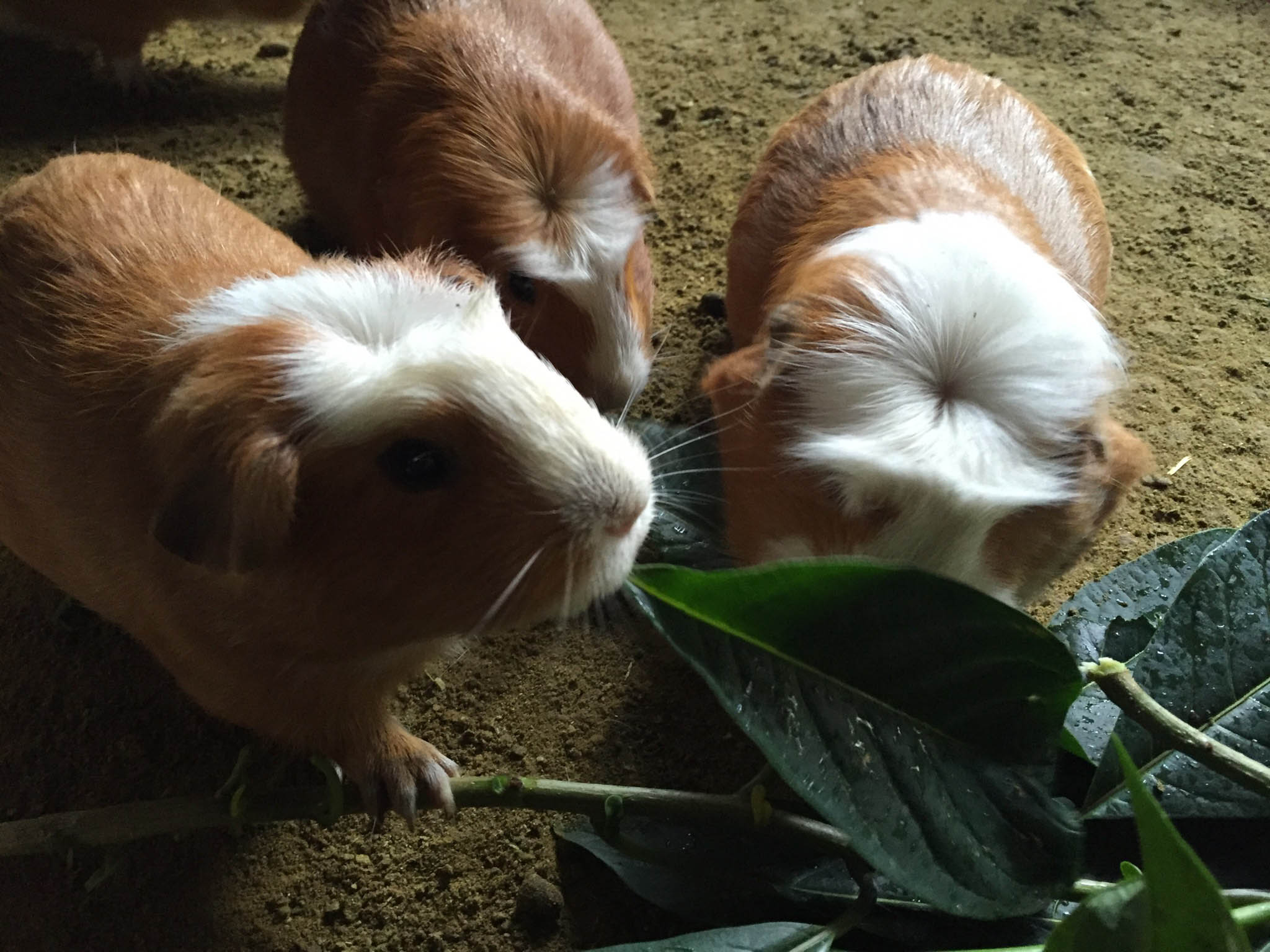
 Our coffee was roasted and then it was time to taste it, and boy was it good!
Our coffee was roasted and then it was time to taste it, and boy was it good!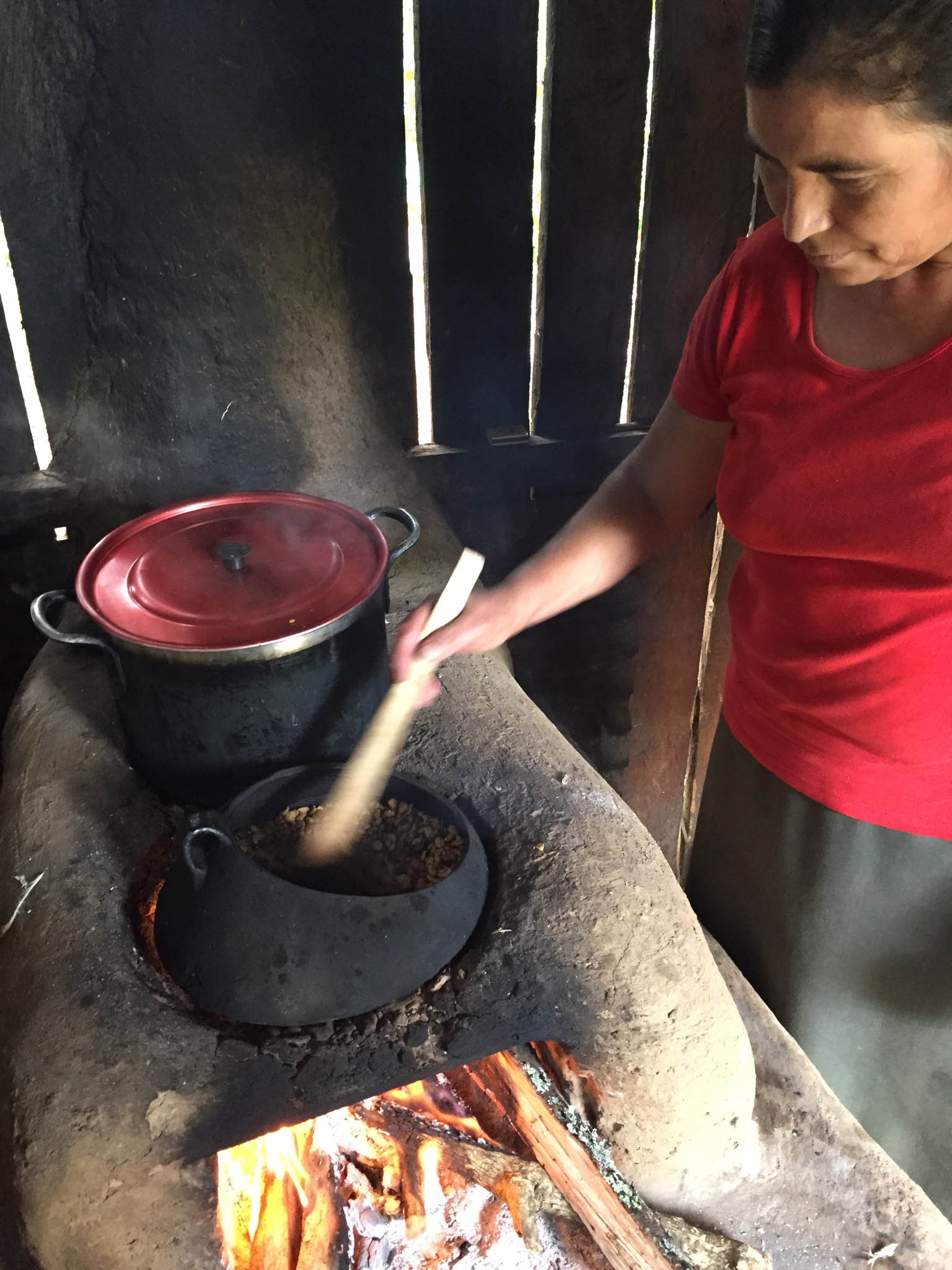 We liked the coffee so much we bought two bags to bring back home. This is another reason why having a big bag was useful. We of course put it in Kay’s pack. 😉
We liked the coffee so much we bought two bags to bring back home. This is another reason why having a big bag was useful. We of course put it in Kay’s pack. 😉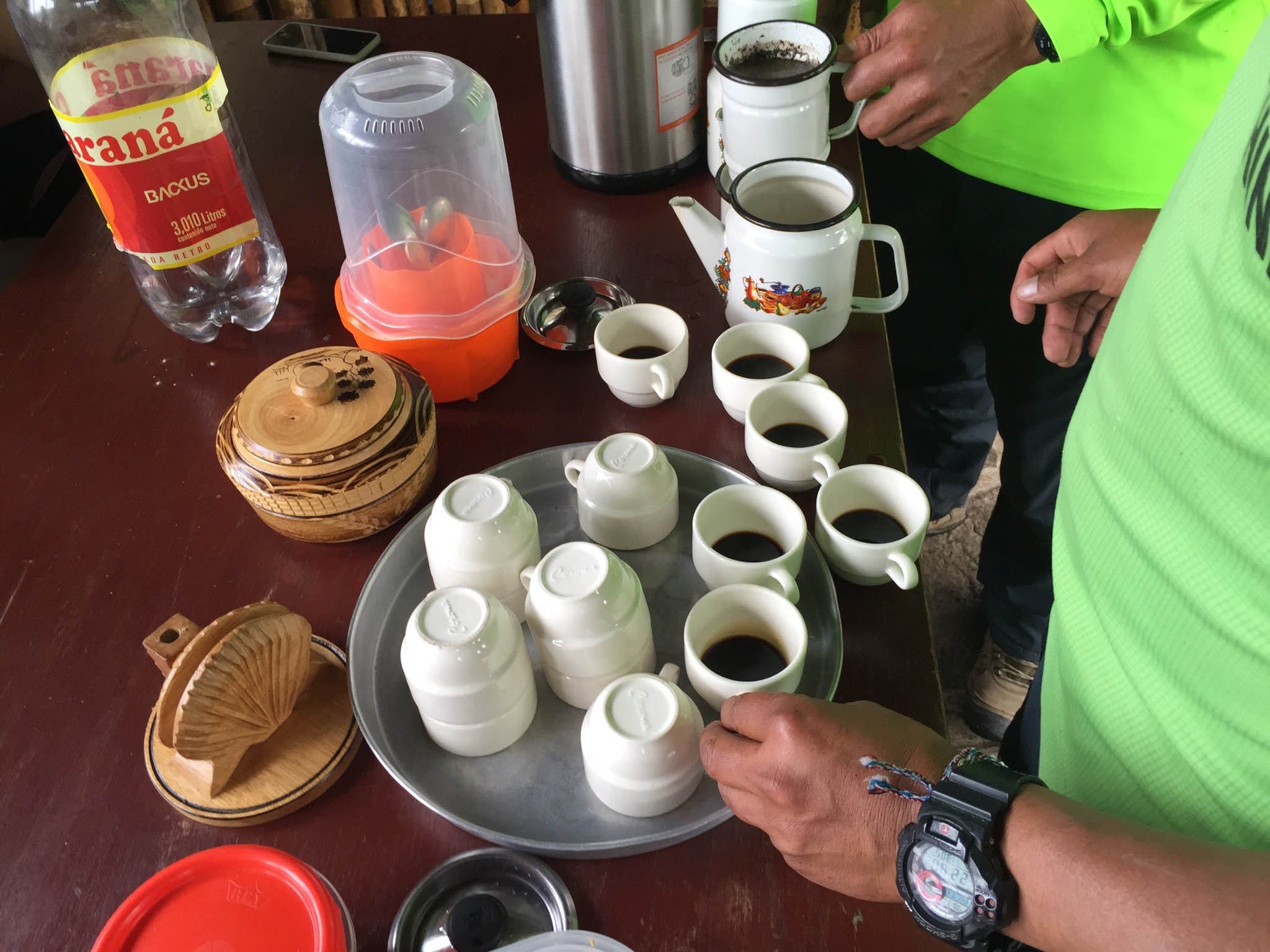 Afterward we started climbing UP again, which I wasn’t really ready for. The longest Kay and I ever hike is two days back and forth, so my legs were definitely protesting and didn’t understand why I kept forcing them to do hard work in this altitude.
Afterward we started climbing UP again, which I wasn’t really ready for. The longest Kay and I ever hike is two days back and forth, so my legs were definitely protesting and didn’t understand why I kept forcing them to do hard work in this altitude.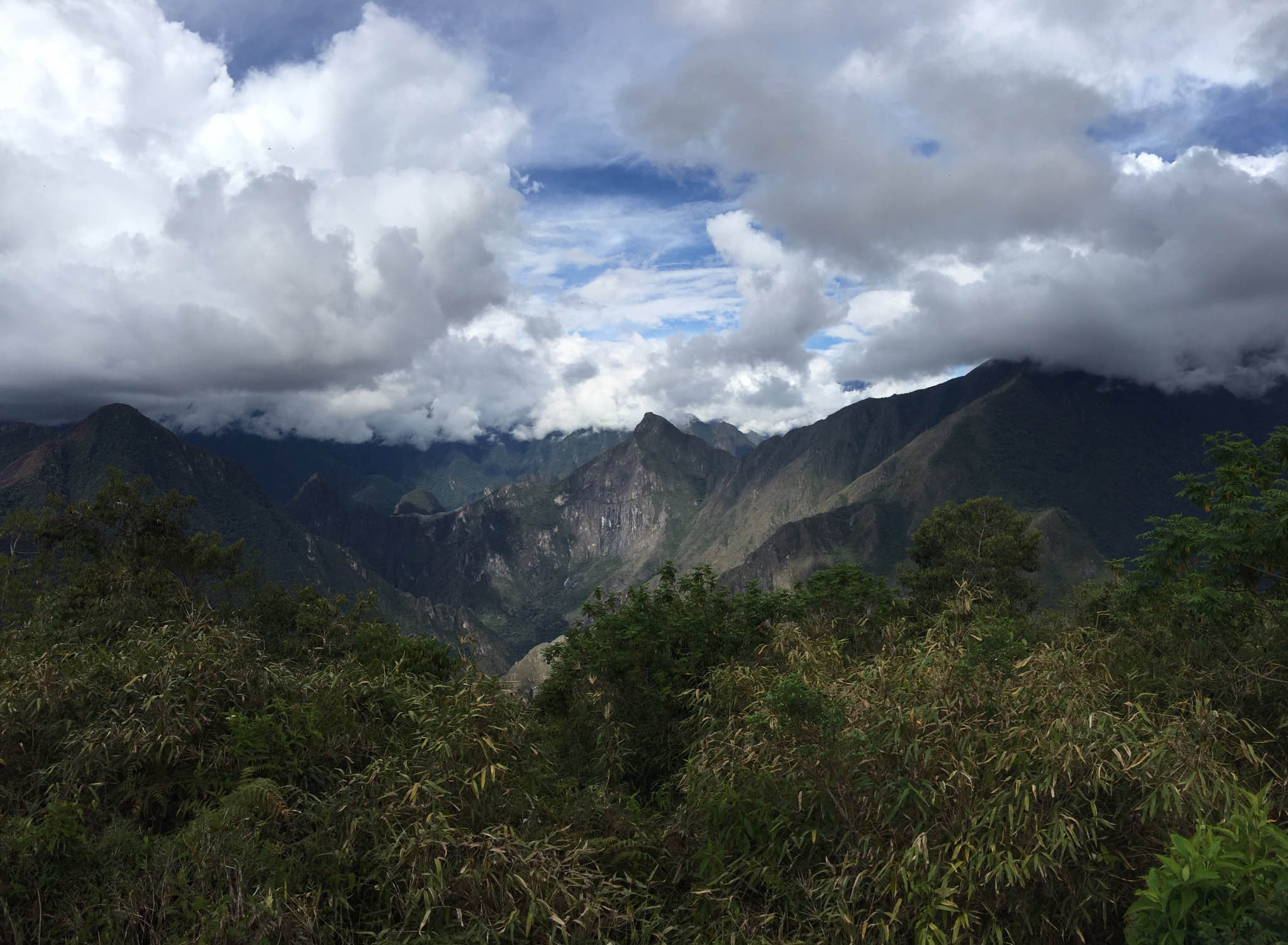 Finally we reached the top of Llactapata, where we had just a little way to go. I was pretty pooped out.
Finally we reached the top of Llactapata, where we had just a little way to go. I was pretty pooped out.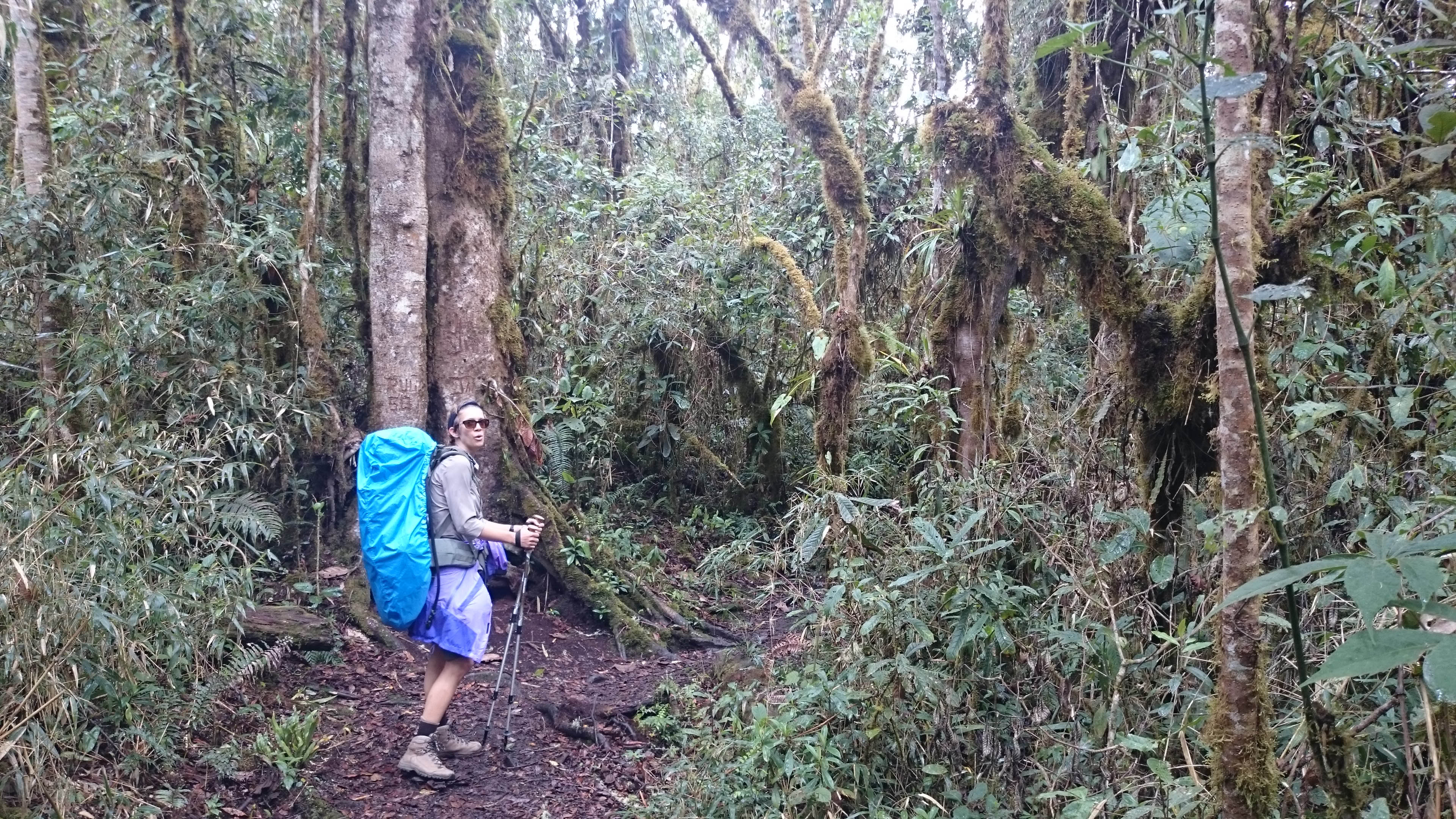 From here we only had a couple porters carrying our things on their backs, as well as our chef who was with us for the whole journey.
From here we only had a couple porters carrying our things on their backs, as well as our chef who was with us for the whole journey. This campsite is rarely used by others because it’s a bit out of the way, it’s not really “on the way” to Machu Picchu, but it offers undisturbed views of Machu Picchu from a distance, so we arrived early to watch the sun set and to get up early to see the sun rise the next morning.
This campsite is rarely used by others because it’s a bit out of the way, it’s not really “on the way” to Machu Picchu, but it offers undisturbed views of Machu Picchu from a distance, so we arrived early to watch the sun set and to get up early to see the sun rise the next morning.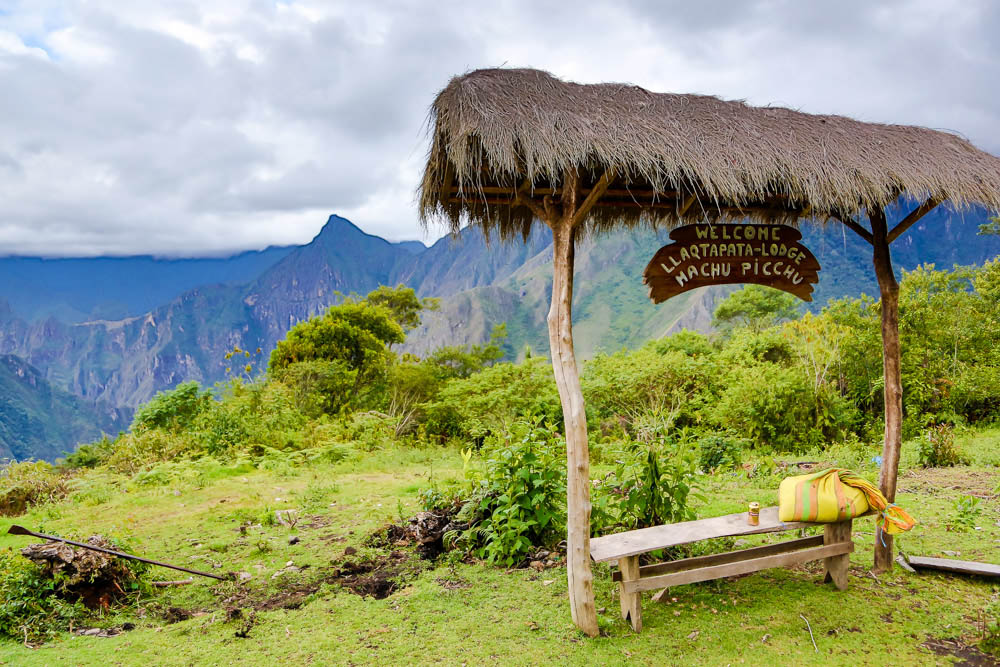 Along the way on this trail were also some Inca ruins of what could have been prayer sites pointed towards Machu Picchu.
Along the way on this trail were also some Inca ruins of what could have been prayer sites pointed towards Machu Picchu.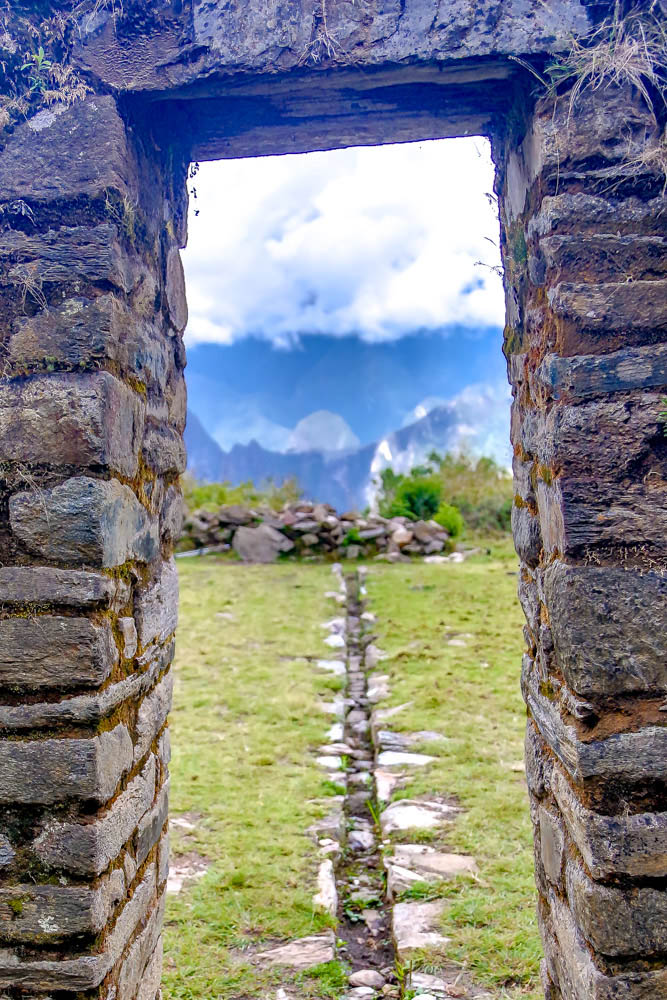 We set up for our last night of camping and enjoyed our usual popcorn and tea snack before watching the sun set.
We set up for our last night of camping and enjoyed our usual popcorn and tea snack before watching the sun set.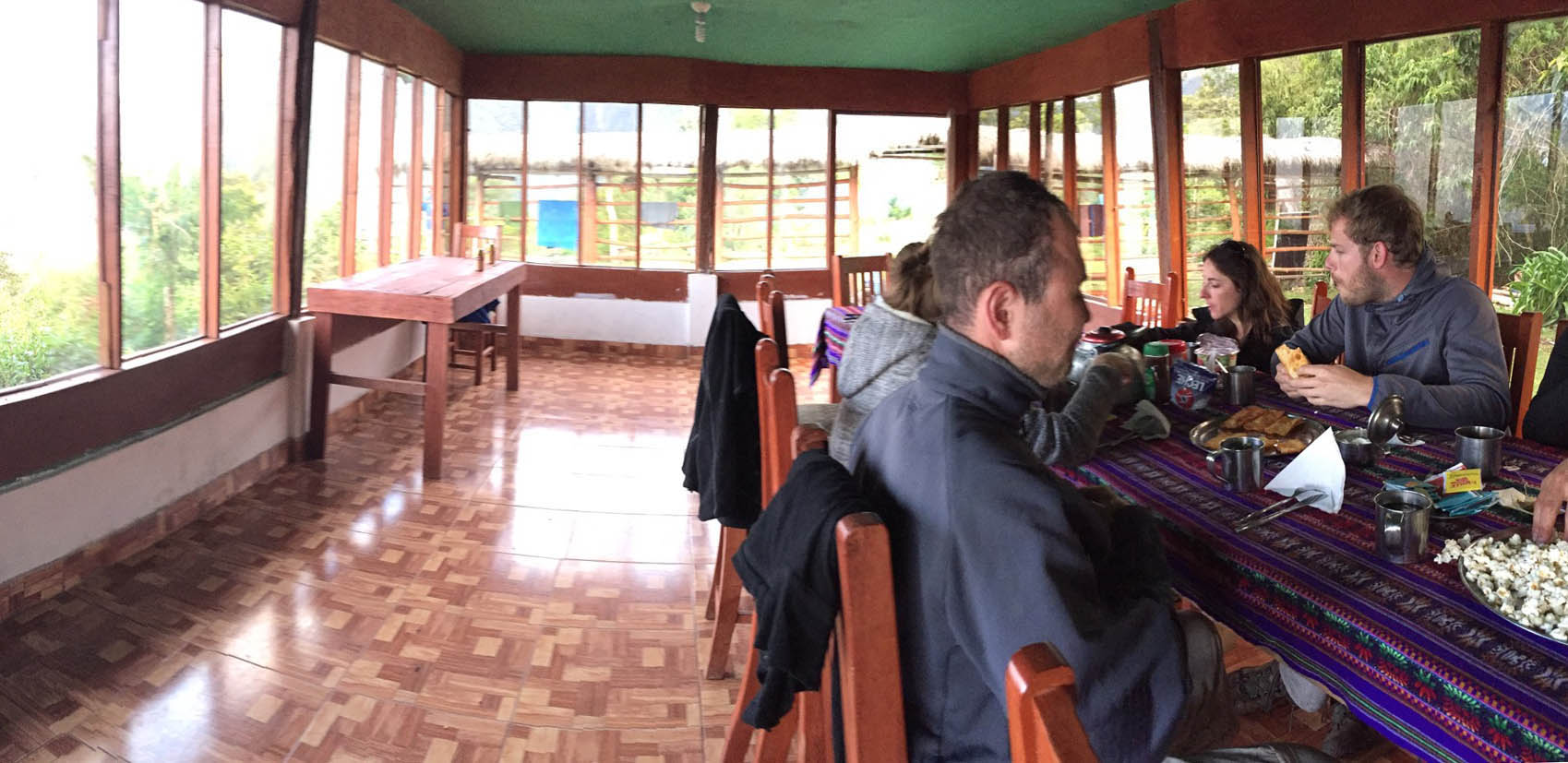 Dinner was in a room right on the ledge, with views over Machu Picchu. Pretty amazing backdrop. 🙂
Dinner was in a room right on the ledge, with views over Machu Picchu. Pretty amazing backdrop. 🙂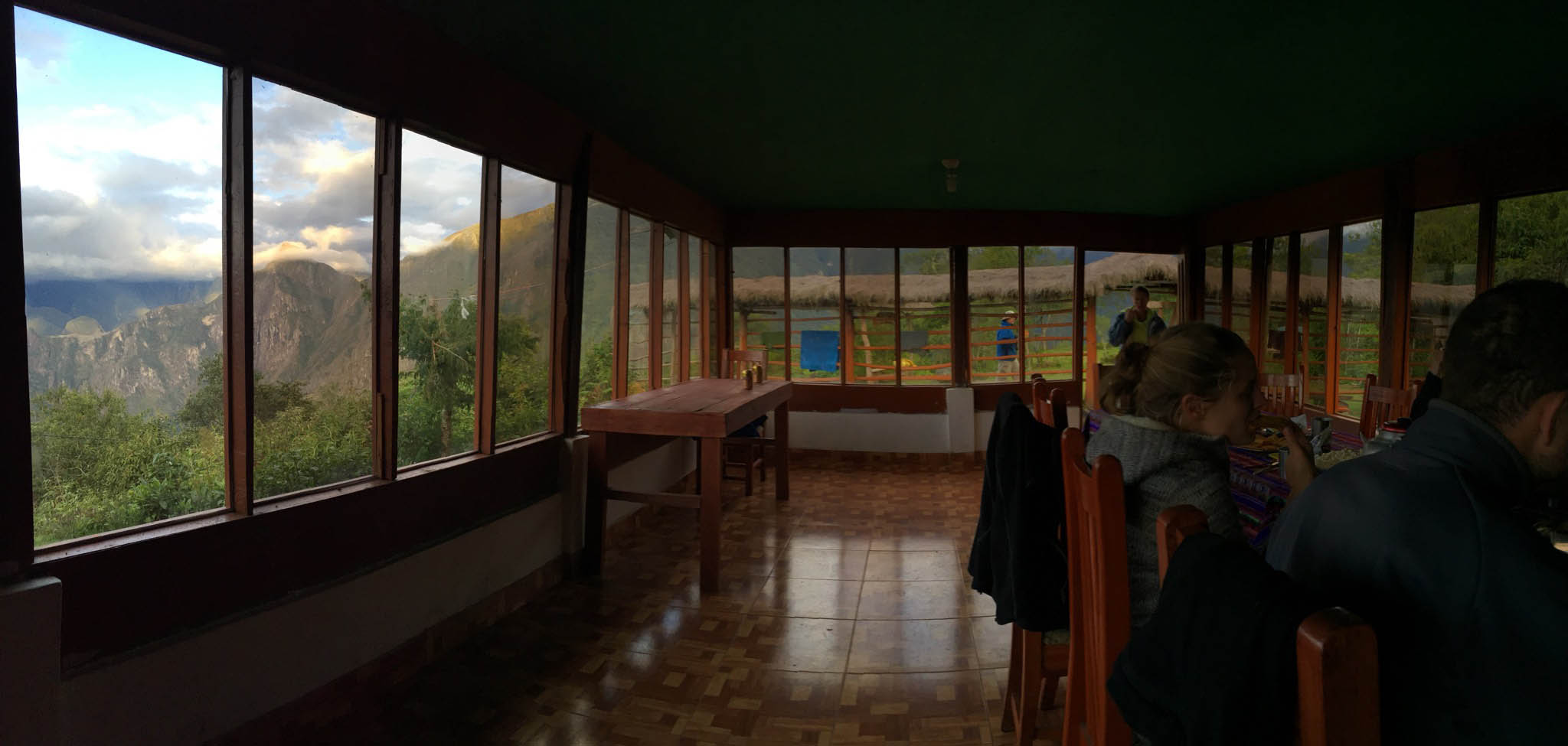
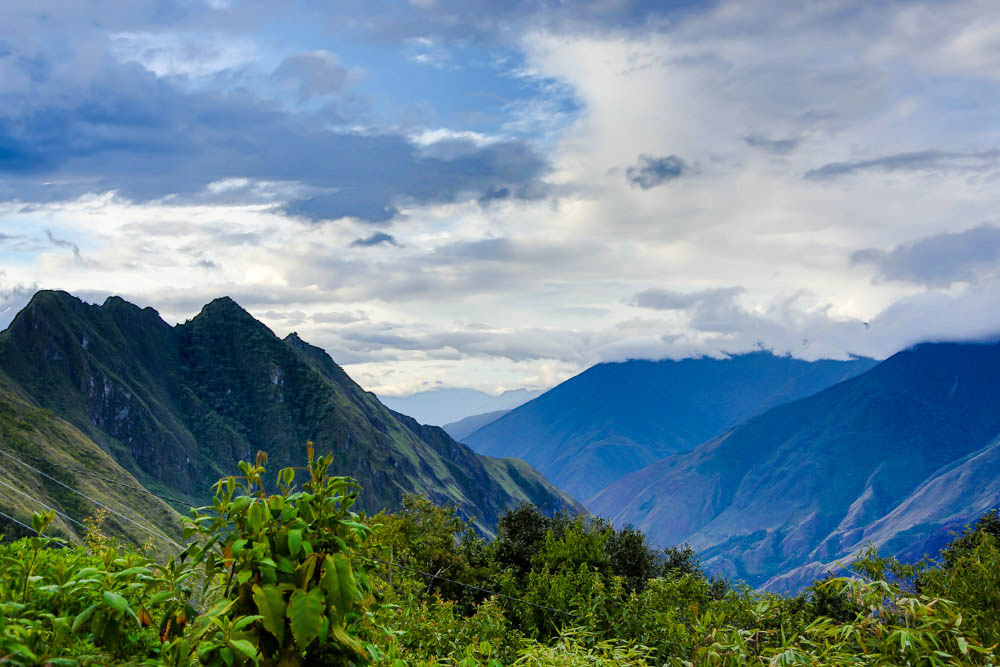 Below in the center, you can start to see the light hit Machu Picchu. I needed to zoom in to see it better, but it was magnificent from faraway and a totally different view of Machu Picchu that many people don’t get to see.
Below in the center, you can start to see the light hit Machu Picchu. I needed to zoom in to see it better, but it was magnificent from faraway and a totally different view of Machu Picchu that many people don’t get to see. Seeing the preview for the last day just made us even more excited. We were all praying the rain would hold off by then.
Seeing the preview for the last day just made us even more excited. We were all praying the rain would hold off by then.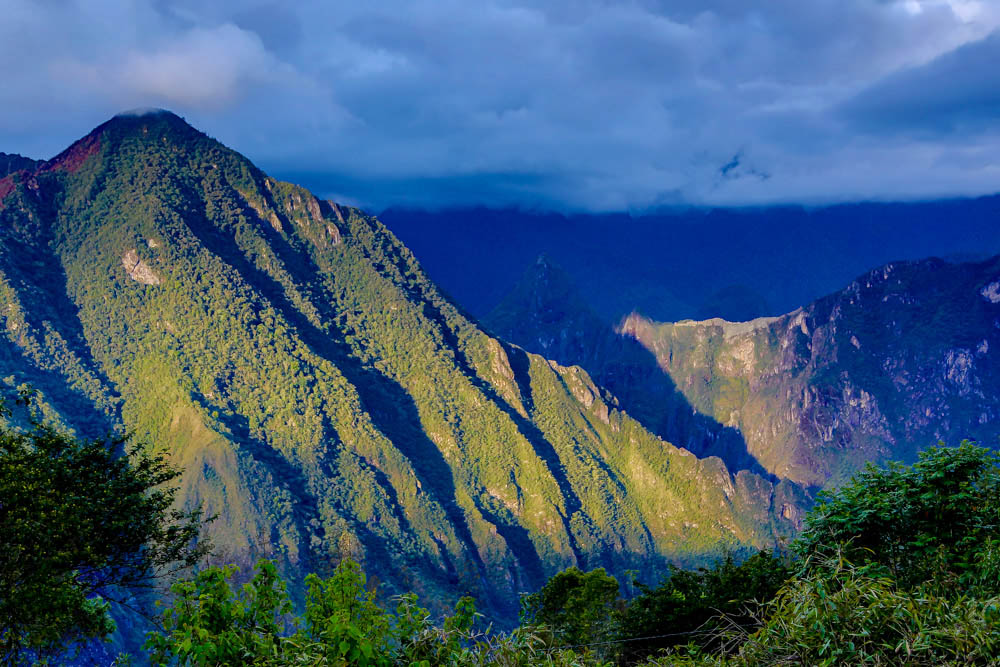 I mean, look at it!
I mean, look at it!
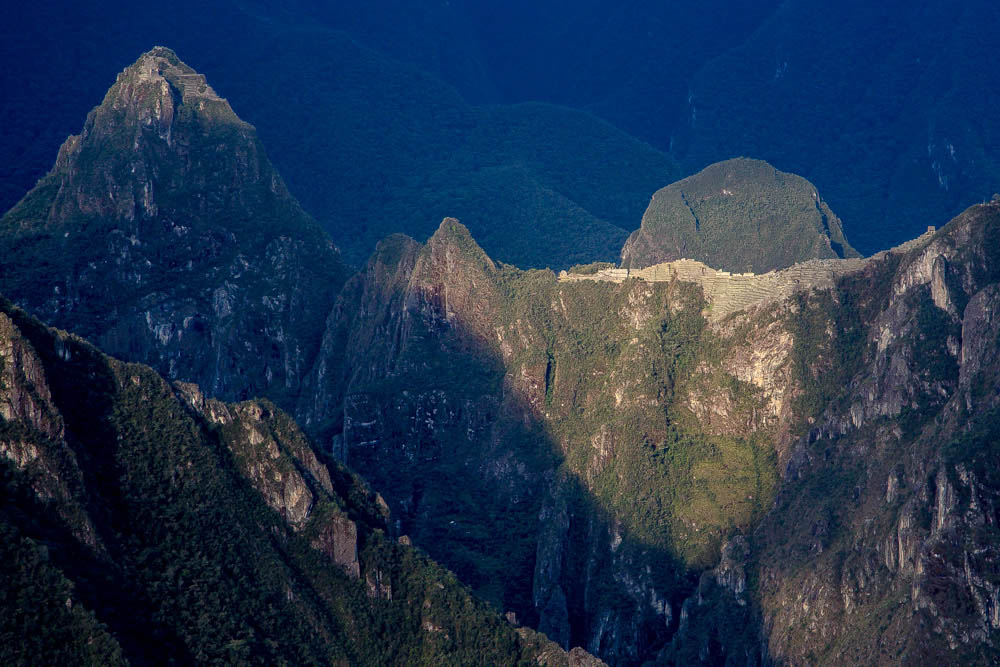
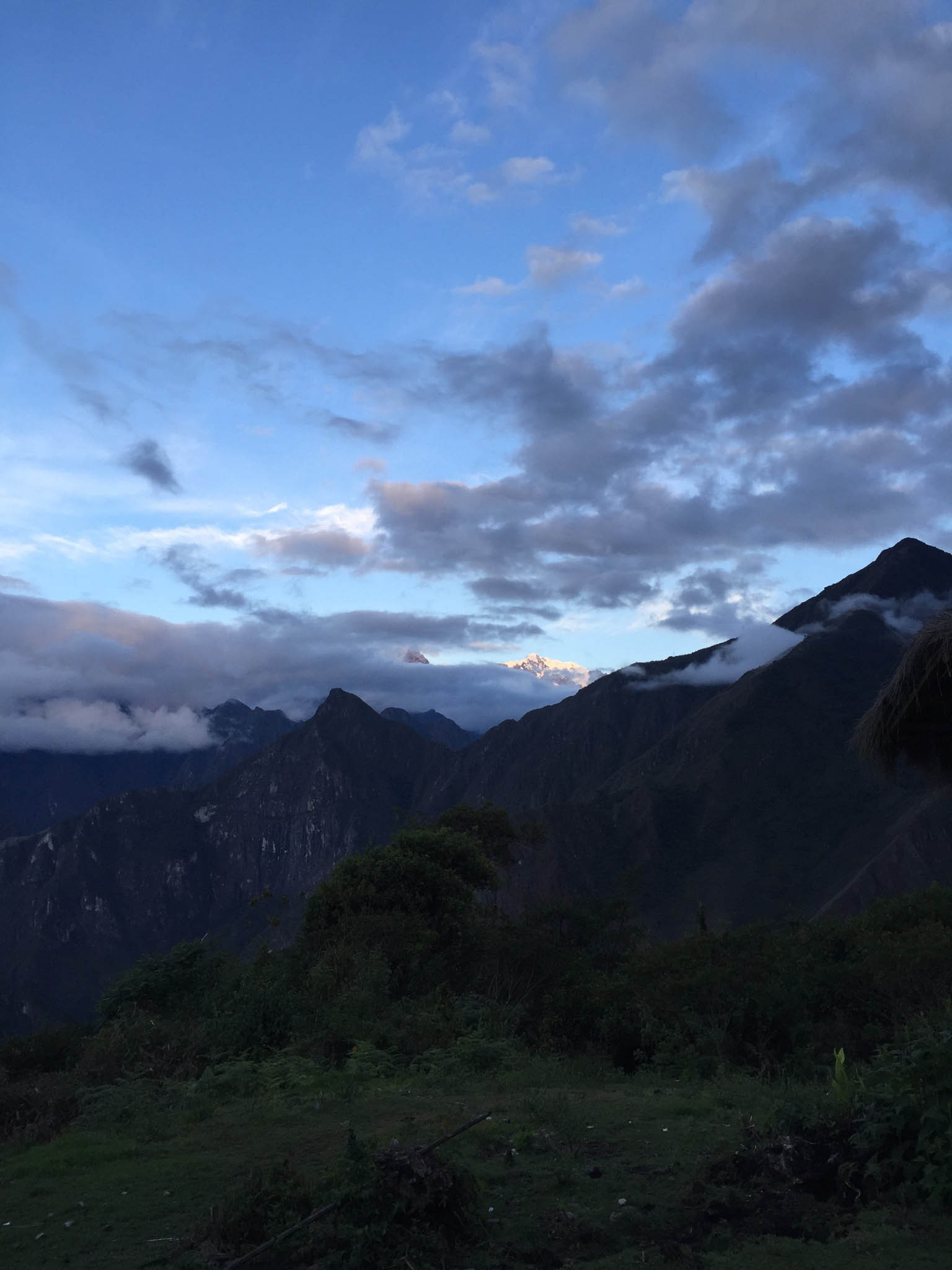
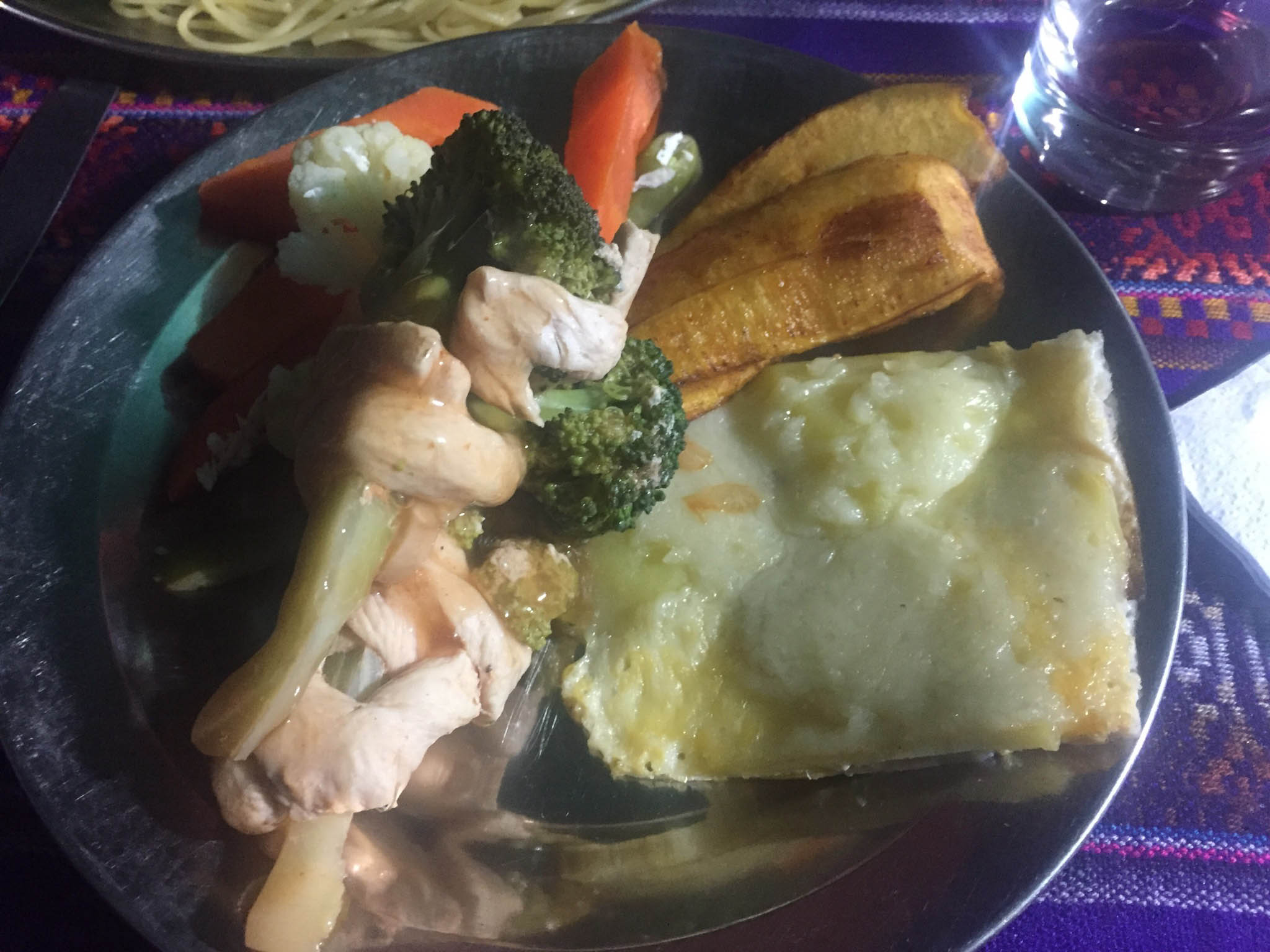
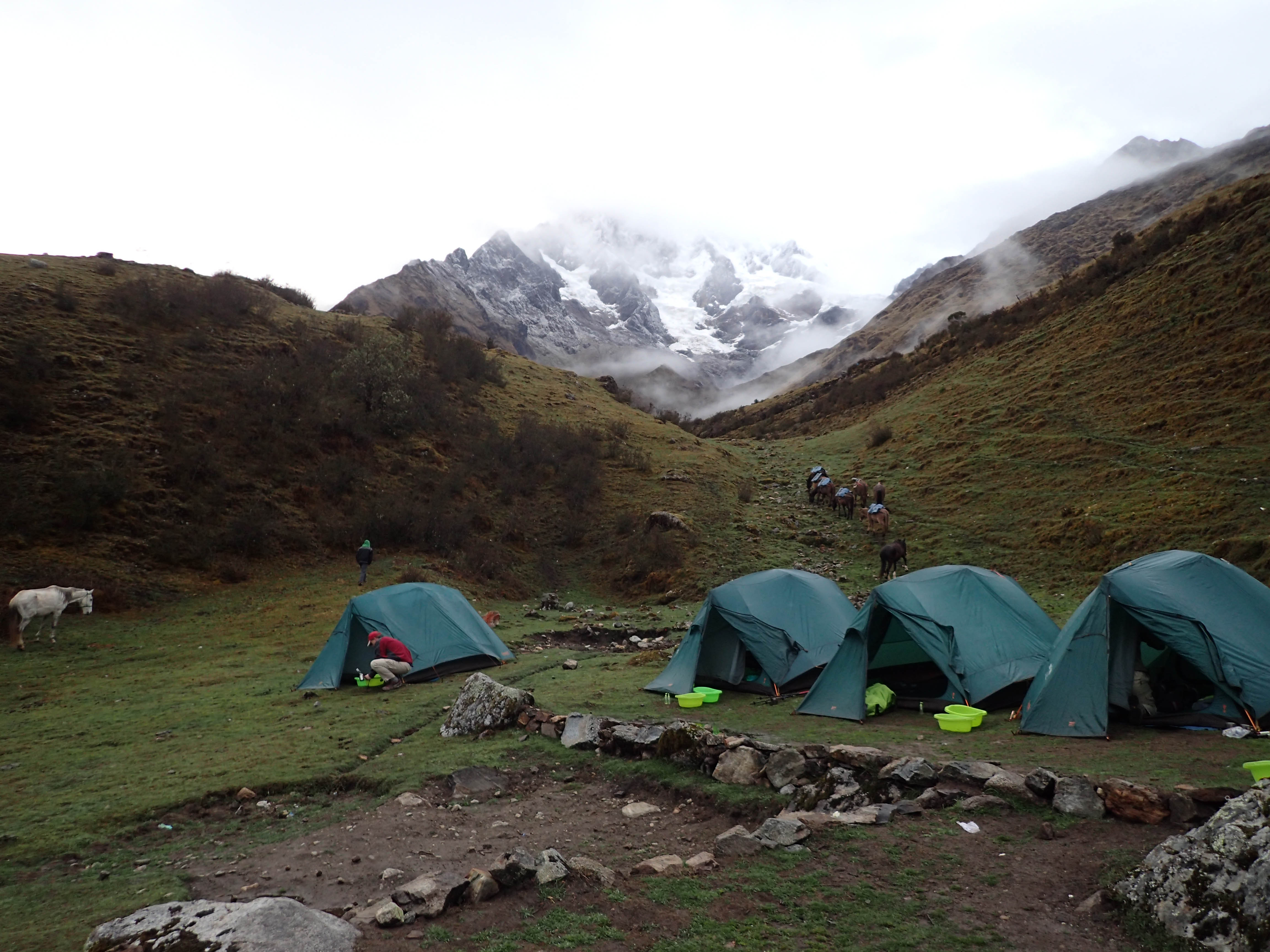 It was pretty cold in the morning while we packed up and headed to breakfast. Kay was in his element as you can see. 🙂
It was pretty cold in the morning while we packed up and headed to breakfast. Kay was in his element as you can see. 🙂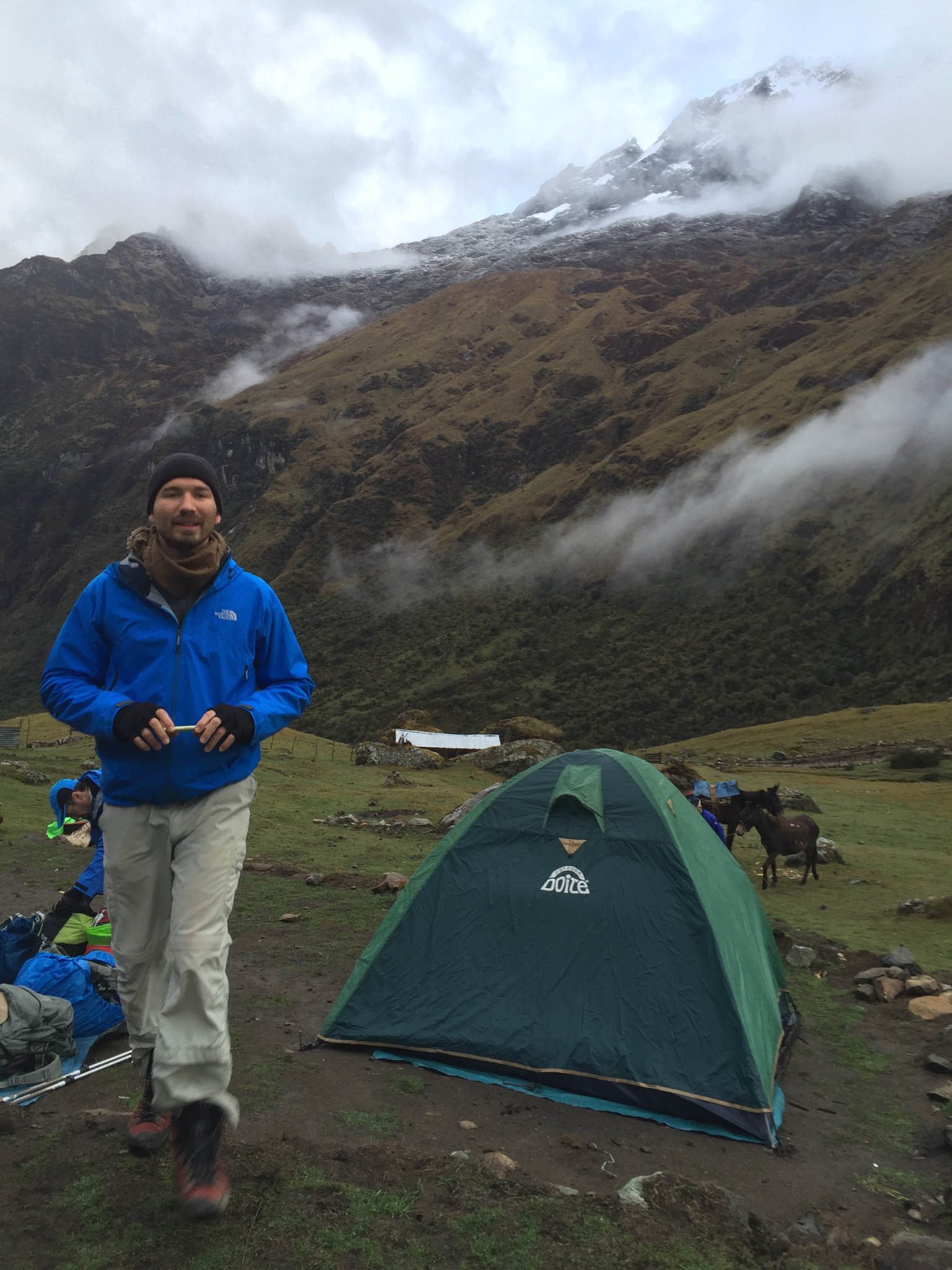 The hike on the second day from Huayracmachay to Rayampata was downhill and pretty easy going. I was even at the lead of most of the hike since downward hiking is my thing. 🙂
The hike on the second day from Huayracmachay to Rayampata was downhill and pretty easy going. I was even at the lead of most of the hike since downward hiking is my thing. 🙂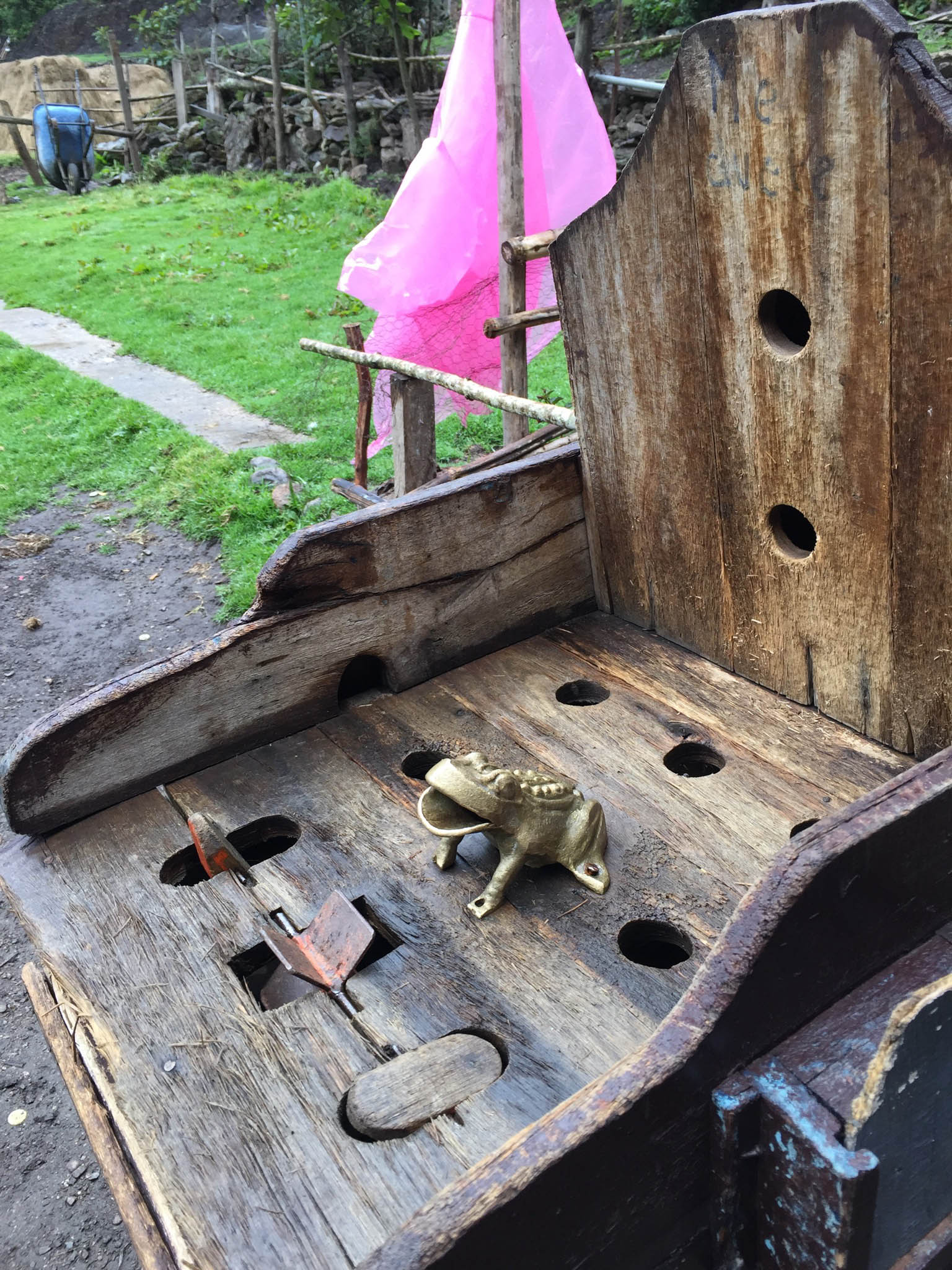 Below is a video showing how you toss the gold coins and try and get them in the holes or the frog’s mouth for points. Valentine was amazing and he beat all of us! I don’t think I even managed to score a point.For lunch we enjoyed some more delicacies by the hand of our chef. Working with local food and food portered along the route, he was very creative for camp food!
Below is a video showing how you toss the gold coins and try and get them in the holes or the frog’s mouth for points. Valentine was amazing and he beat all of us! I don’t think I even managed to score a point.For lunch we enjoyed some more delicacies by the hand of our chef. Working with local food and food portered along the route, he was very creative for camp food! Also more soup, which we really appreciated because it was mostly raining this day. It was actually pouring all during lunch.
Also more soup, which we really appreciated because it was mostly raining this day. It was actually pouring all during lunch.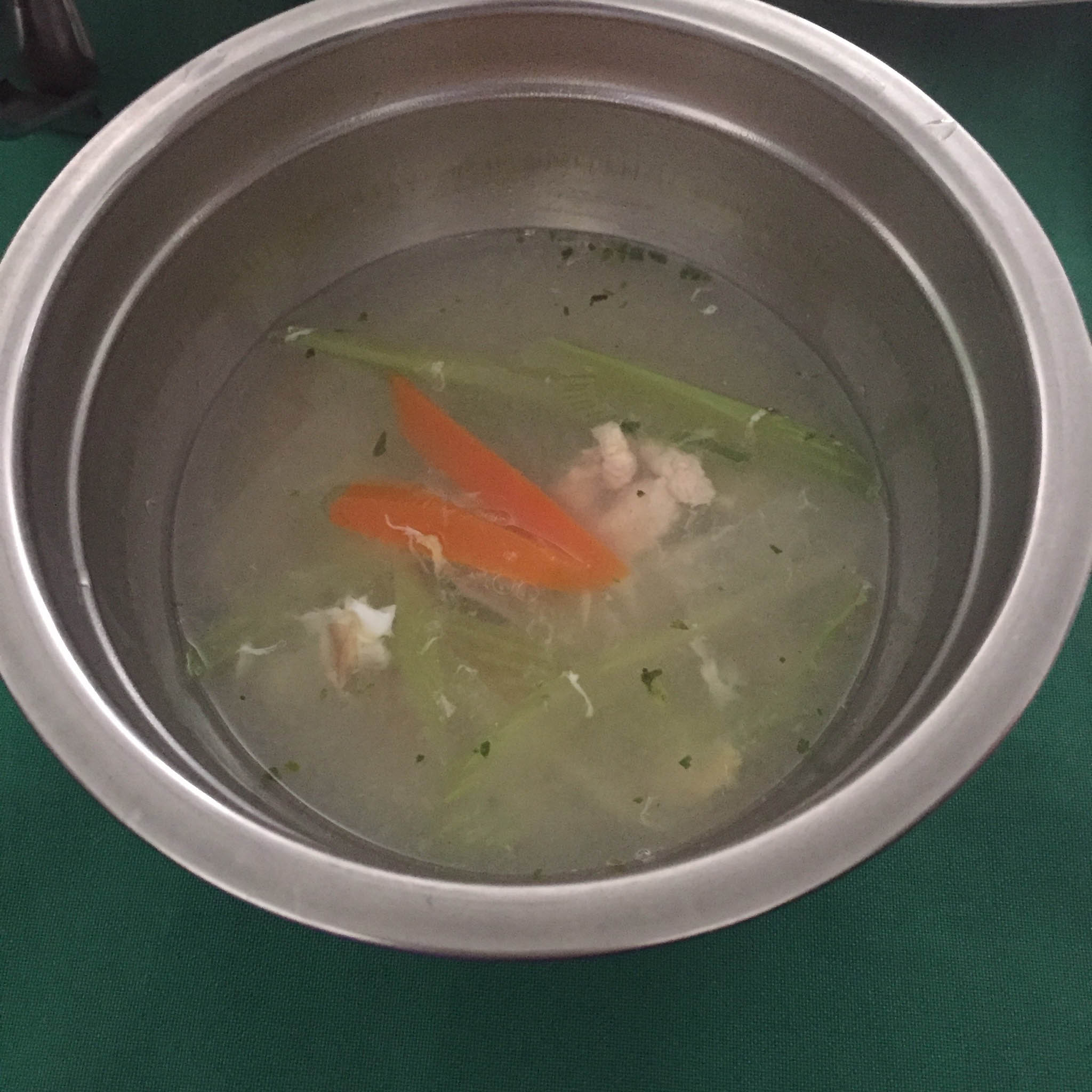 And the main course, which was again fantastic. I get hungry just looking at the photos again. Lots of potatoes and cassava.
And the main course, which was again fantastic. I get hungry just looking at the photos again. Lots of potatoes and cassava.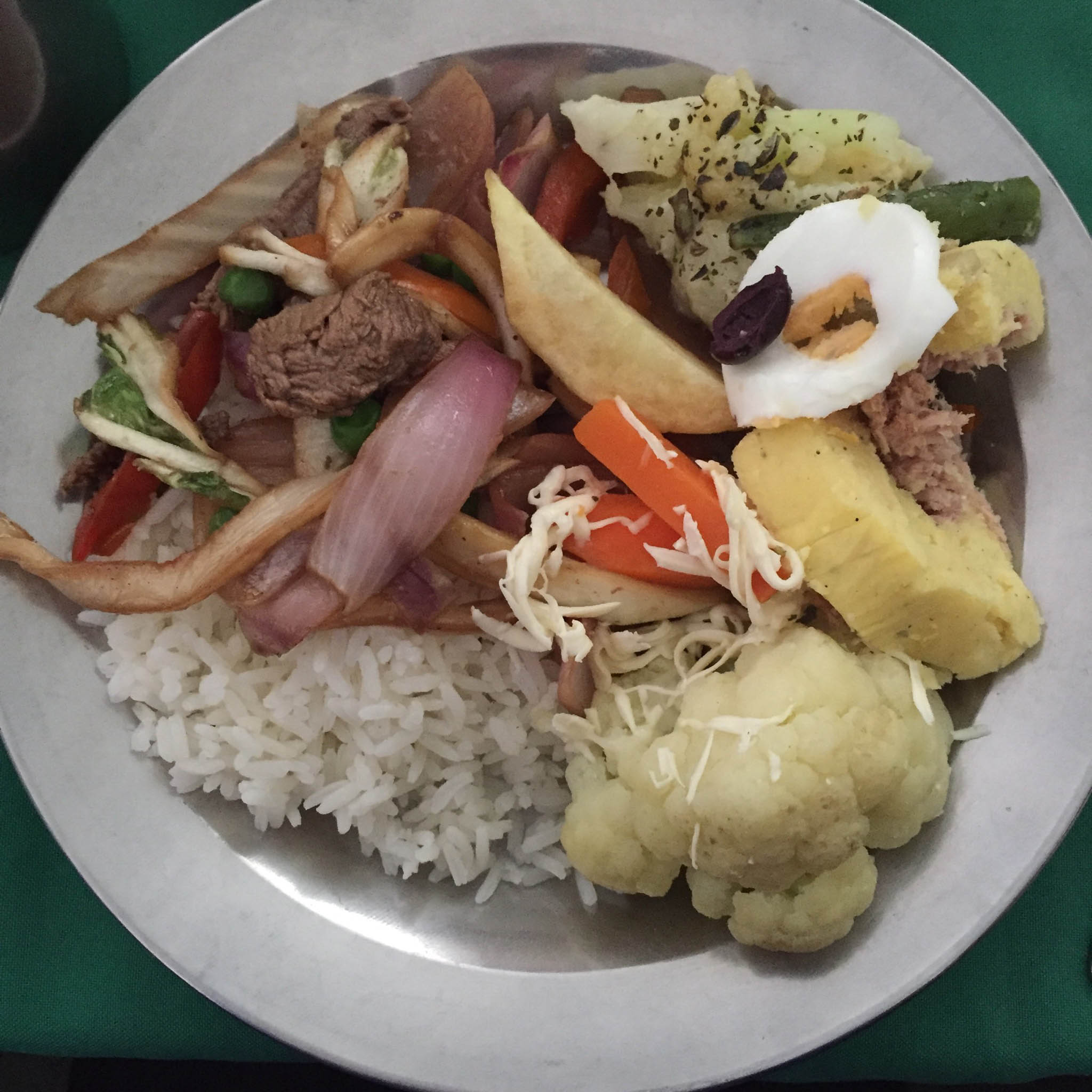 From our lunch spot at Colpapampa, we hiked a bit further than planned to around Lucmabamba.
From our lunch spot at Colpapampa, we hiked a bit further than planned to around Lucmabamba.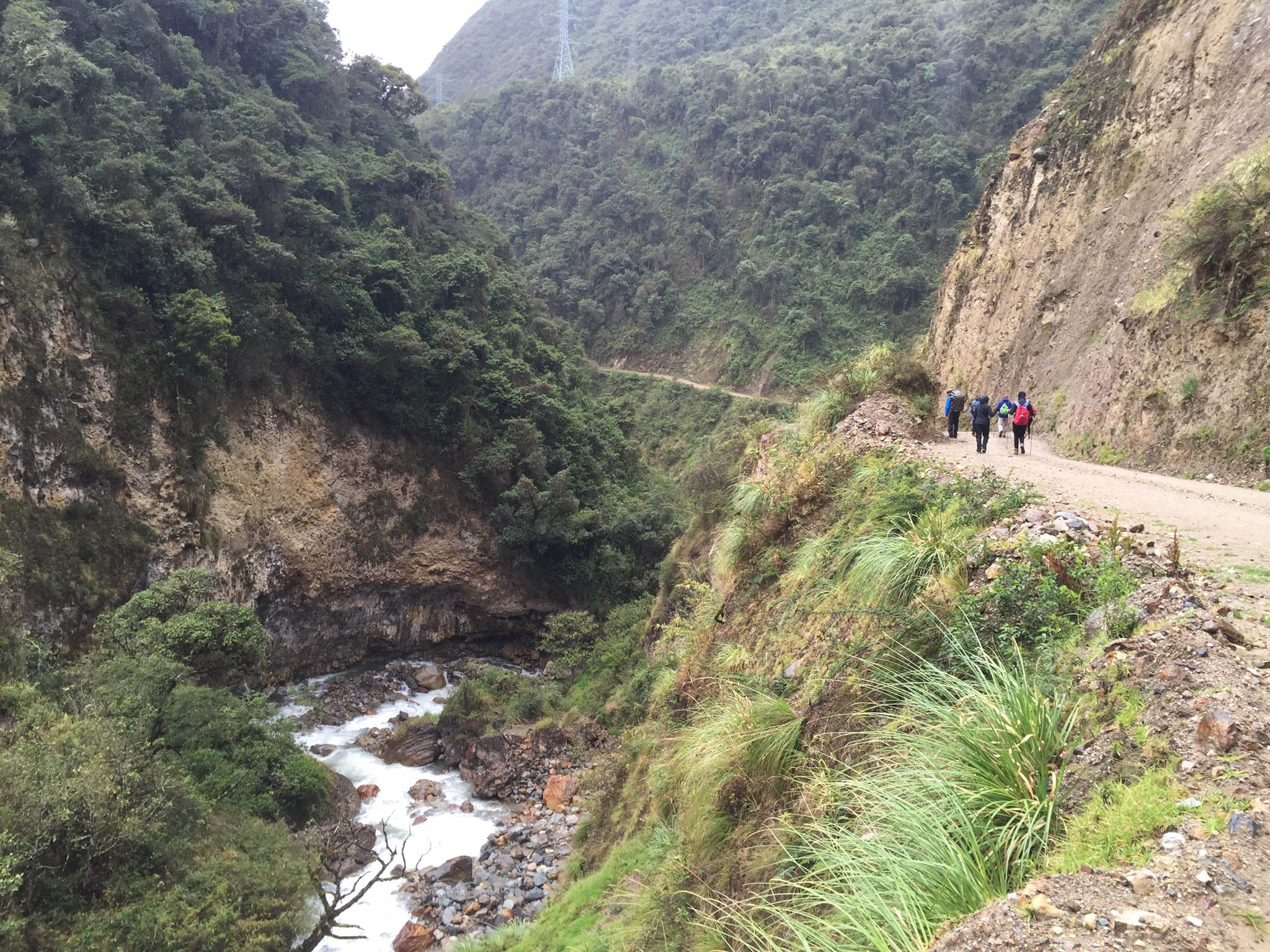 Here we hiked through a little village and camped at the outskirts. Below is the sign for the local school zone.
Here we hiked through a little village and camped at the outskirts. Below is the sign for the local school zone.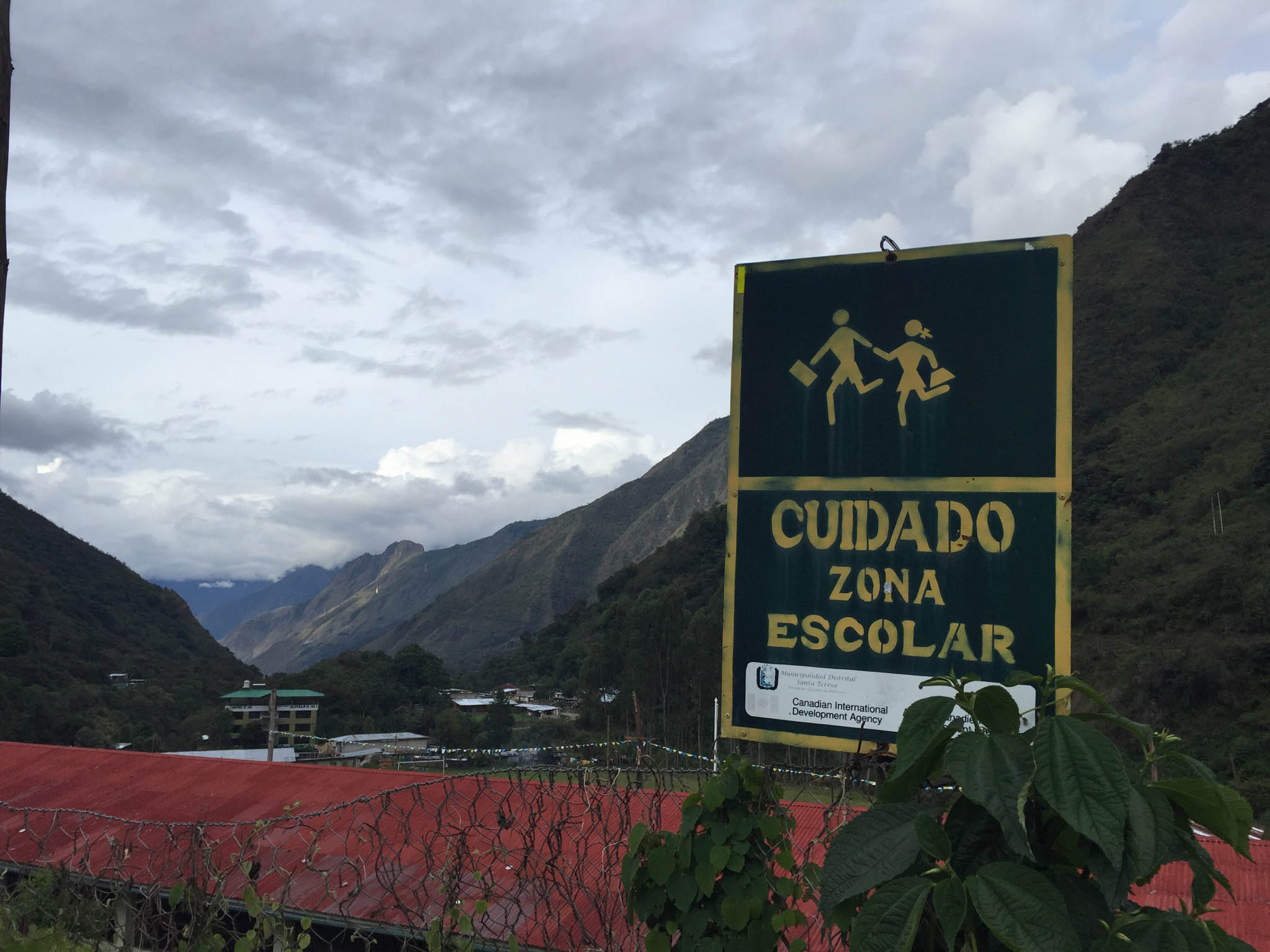 We arrived at campsite number two a little earlier than the day before. The grounds even had two showers, one lukewarm and one cold. I passed on showering, but ended up putting a lot of bug spray on that night to ward off the mosquitoes.
We arrived at campsite number two a little earlier than the day before. The grounds even had two showers, one lukewarm and one cold. I passed on showering, but ended up putting a lot of bug spray on that night to ward off the mosquitoes.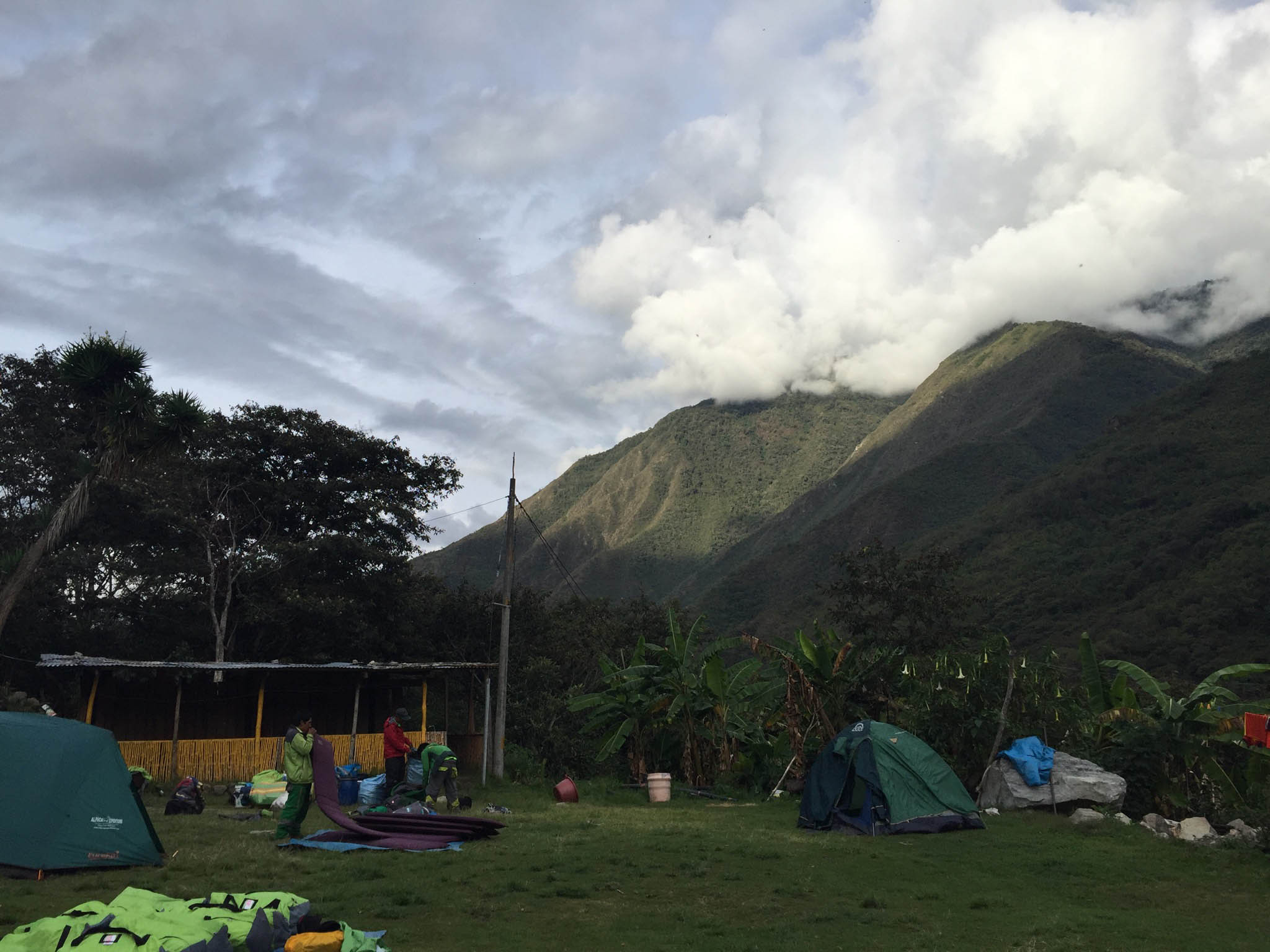
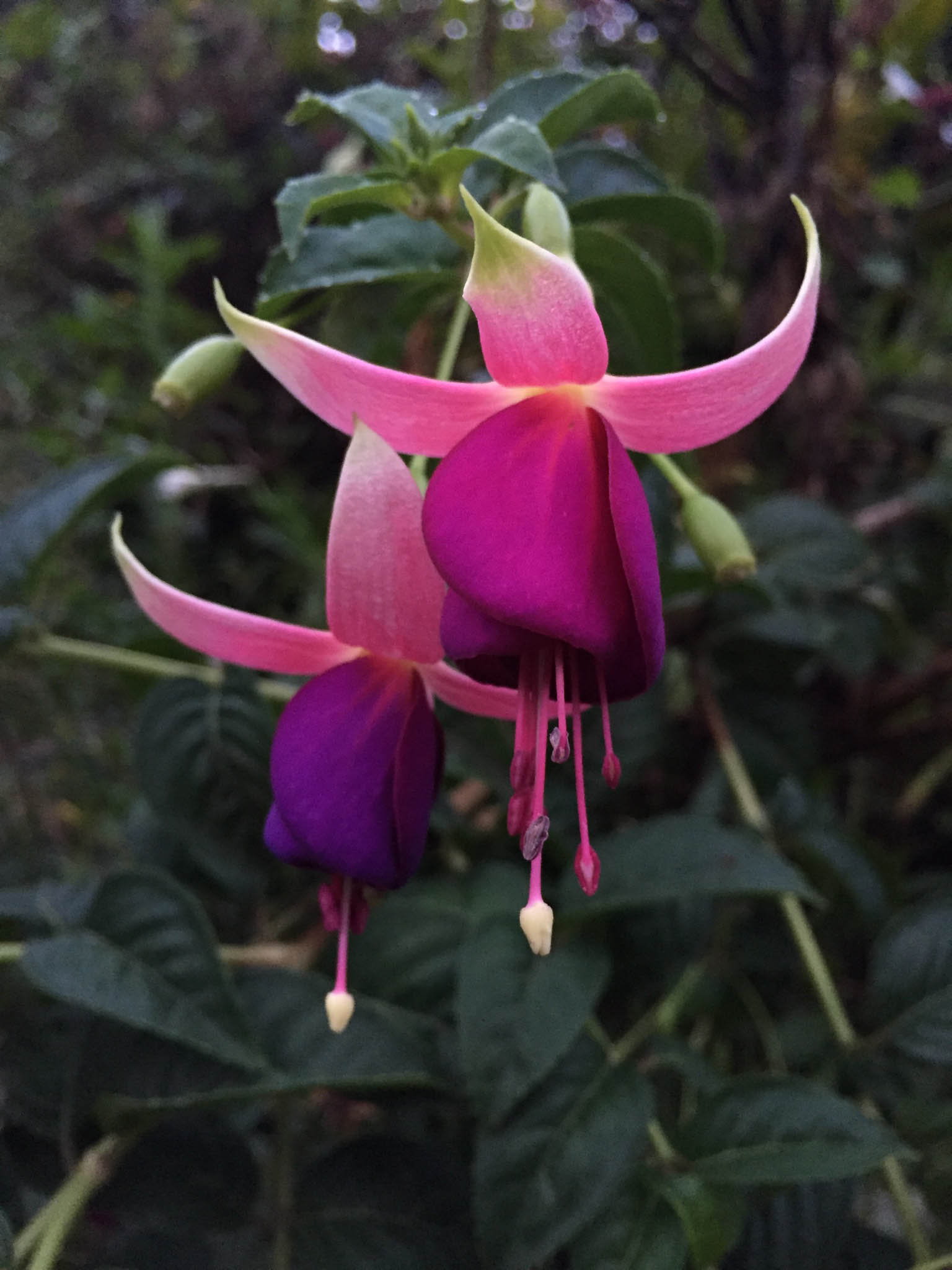
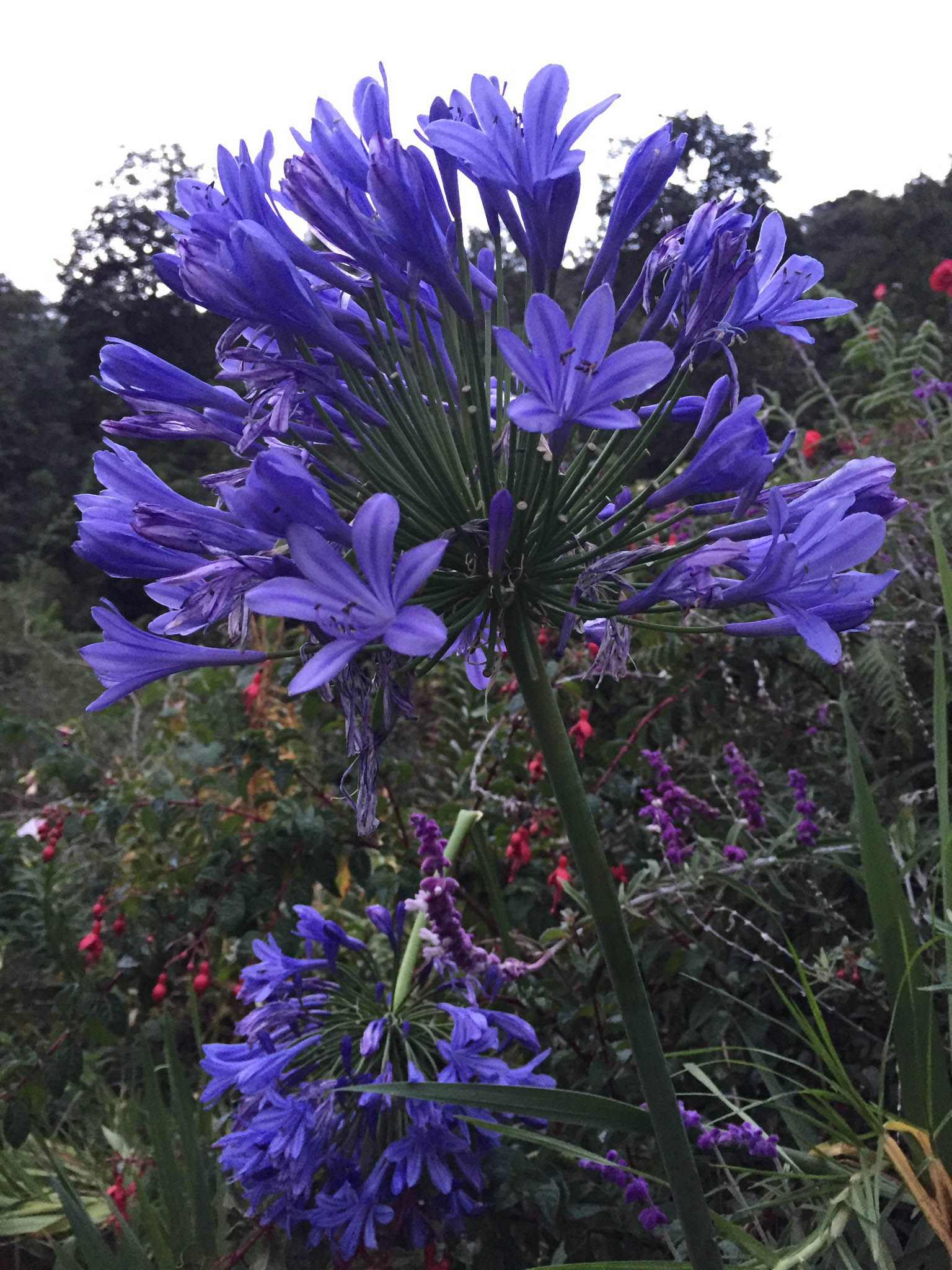 From there we enjoyed a nice sunset with some very pretty colors in the sky.
From there we enjoyed a nice sunset with some very pretty colors in the sky.
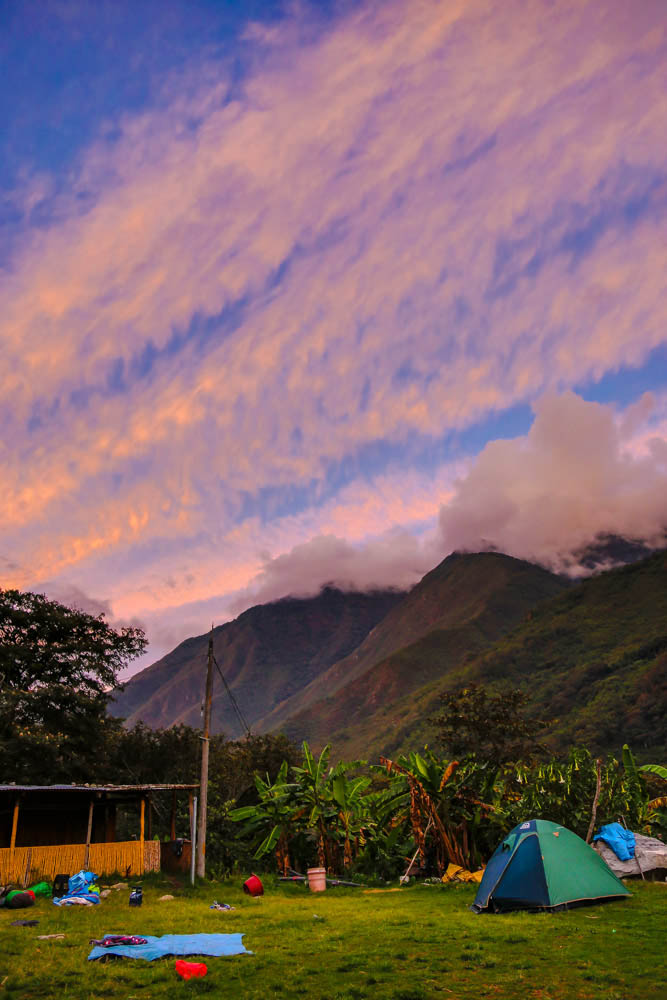 While people were showing before dinner, many also decided to dry out some of their clothes that had gotten wet during the day either from rain, sweat, or both.
While people were showing before dinner, many also decided to dry out some of their clothes that had gotten wet during the day either from rain, sweat, or both.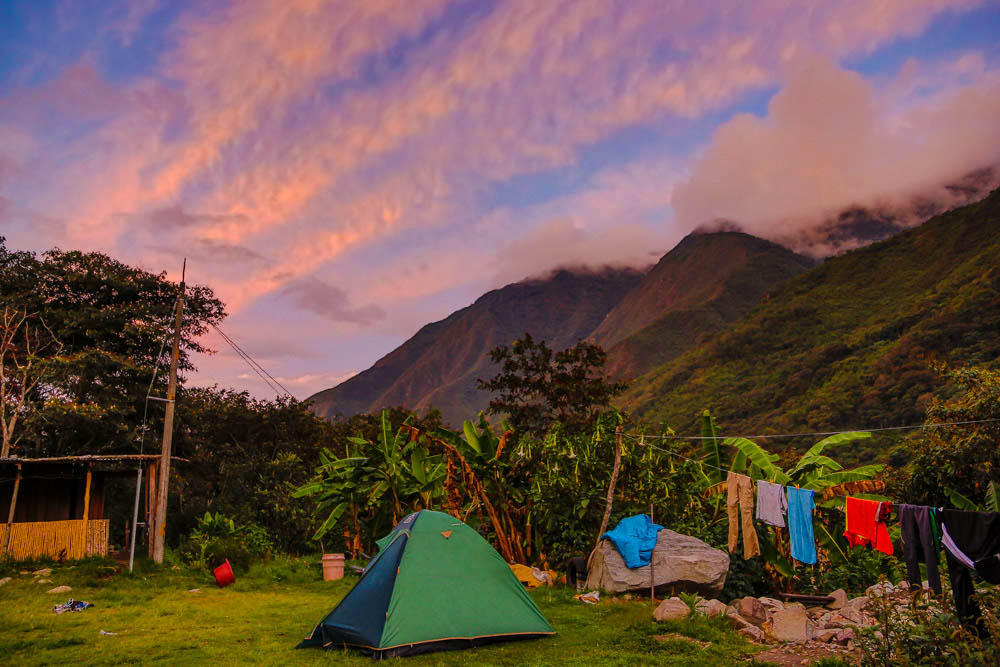
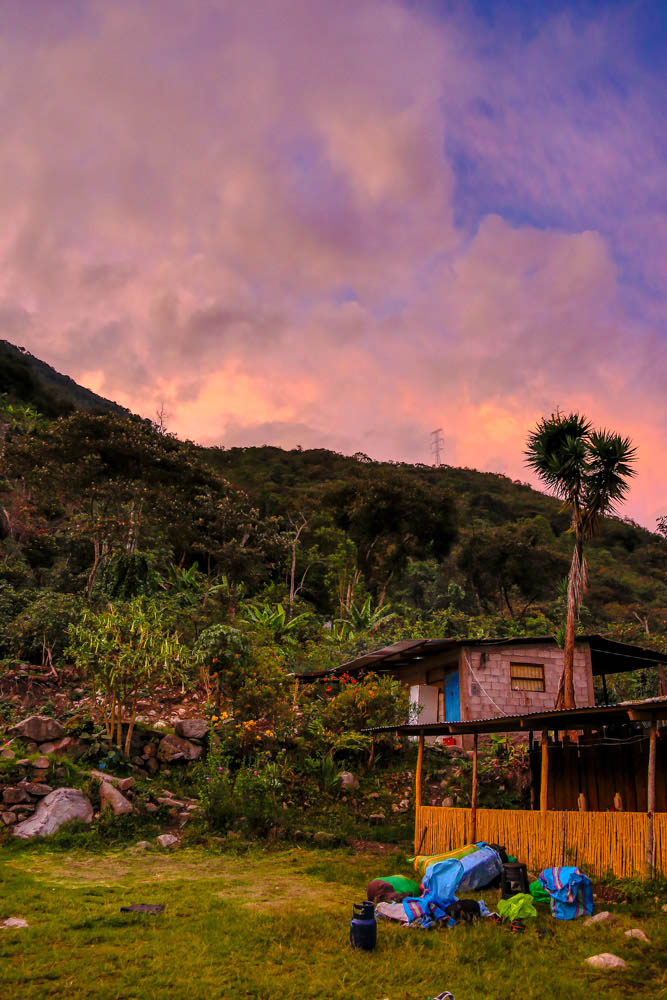
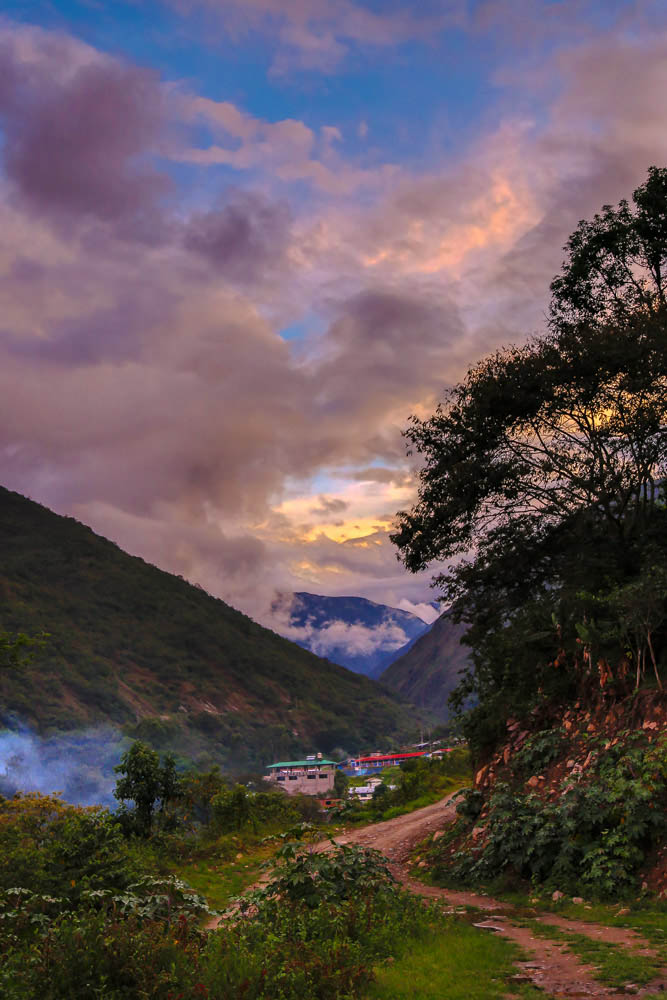 Here Valentine told us another funny story about the river rising during one of his camping trips. During the night, the river rose swiftly and was making a fast, rushing sound. The locals started getting alarmed that a dam would break and flood the area within minutes, so they started to pack up and head to safety.
Here Valentine told us another funny story about the river rising during one of his camping trips. During the night, the river rose swiftly and was making a fast, rushing sound. The locals started getting alarmed that a dam would break and flood the area within minutes, so they started to pack up and head to safety.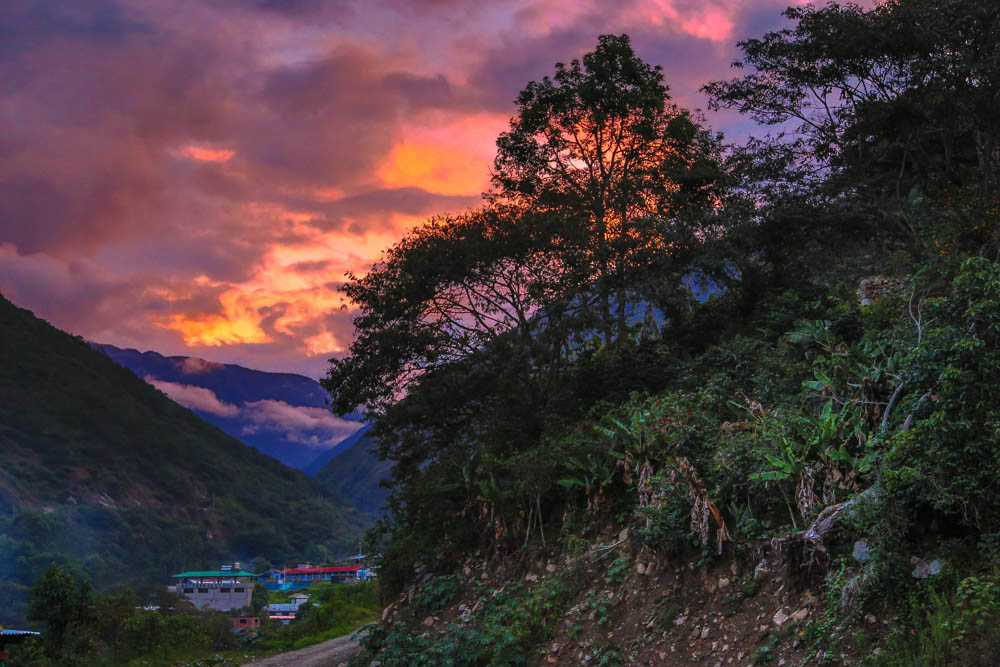 I went to bed later that night so nervous about the river that I had nightmares about it rushing up and carrying our tents away. I had even prepared my things so that if I needed to rush out in the night, it would have been possible. I did not sleep very well that night. 😛
I went to bed later that night so nervous about the river that I had nightmares about it rushing up and carrying our tents away. I had even prepared my things so that if I needed to rush out in the night, it would have been possible. I did not sleep very well that night. 😛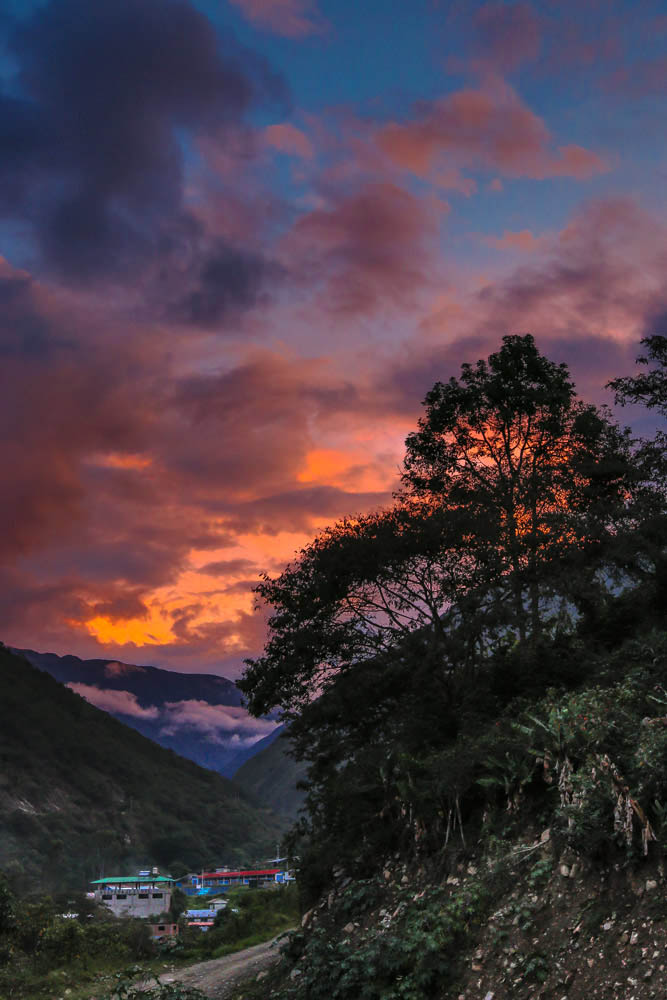 Dinner was tasty as usual. This time it was chicken legs and some kind of potato wedges.
Dinner was tasty as usual. This time it was chicken legs and some kind of potato wedges.  We ate until we stuffed ourselves silly and then Valentine told us lots of stories about the history of Peru, political leaders, local traditions… also crazy things like
We ate until we stuffed ourselves silly and then Valentine told us lots of stories about the history of Peru, political leaders, local traditions… also crazy things like 
 I braced myself that this was going to be awesome somehow, or that I would survive at the very least. I was pretty low mentally, that this was how I was experiencing my way to Machu Picchu: period from Hell, freezing rain, stomach issues.
I braced myself that this was going to be awesome somehow, or that I would survive at the very least. I was pretty low mentally, that this was how I was experiencing my way to Machu Picchu: period from Hell, freezing rain, stomach issues.








































 Inside the basic shelter where the cook was set up, the guides set up a funny burning (kerosin?) lamp above Kay’s head. We told the guys to be careful getting up so they wouldn’t light their heads on fire. 🙂
Inside the basic shelter where the cook was set up, the guides set up a funny burning (kerosin?) lamp above Kay’s head. We told the guys to be careful getting up so they wouldn’t light their heads on fire. 🙂


